

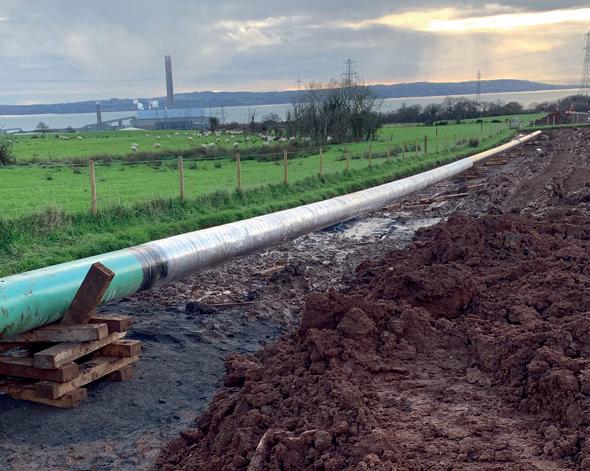



A MEMBER OF WINN & COALES INTERNATIONAL SCAN TO VIEW OUR LATEST DENSO BORE-WRAP™ CASE STUDY ® Volume 23 Number 8 - August 2023
The leading innovator supplying cutting-edge integrity solutions. Together we can ensure sustainable decision-making. Our combination of advanced inspection systems and expert consultants delivers a comprehensive understanding of asset safety, lifetime, and performance.
Comprehensive Asset Integrity Management
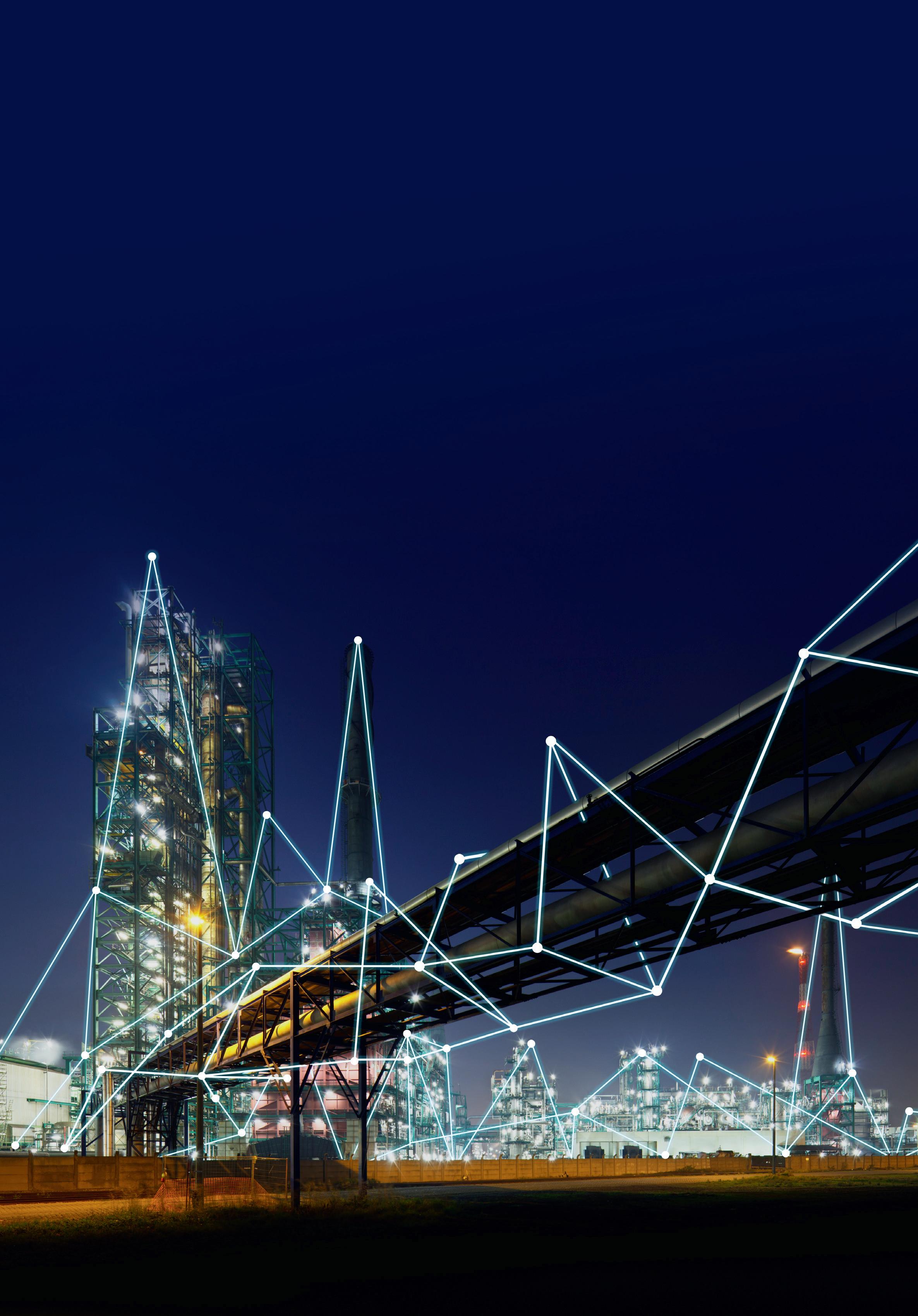
www.rosen-group.com
KEYNOTE ARTICLES: PROJECT
10. Proactive risk planning
MANAGEMENT
Brad Barth, Chief Product Officer, InEight, USA.

PAGE 10
14. The modern management of pipeline projects
John Downer, Senior Project Manager, Penspen, UK.
19. Defence against a Trojan horse
Gerald Caponera, Product and GTM Leader, ThreatConnect, USA.
25. Simulation software ecosystems
Paul Dickerson and Dr. Jon Barley, Emerson.
31. Managing regulator station risk
Tony Alfano, Pipeline Product Line Director, DNV.
35. Work within the water

Elizabeth Cleveland Wakefield and Kelly Hardman, Fragomen.
CONSTRUCTION BEST PRACTICE
39. Purpose-built pipeline machinery
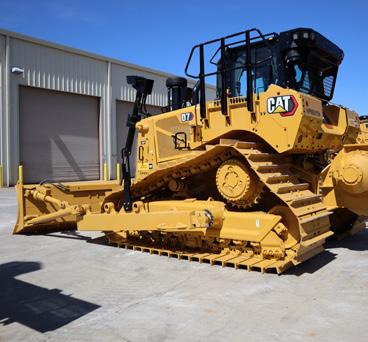
Todd Razor, on behalf of PACCAR Winch.
43. Reducing your emissions footprint
Steve Hamilton, Chief Technical Authority, and Paul Wiseman, Flow Assurance Technical Authority, Xodus, UK.
- Featuring: Cappline B.V.; Ledcor Pipeline; Lincoln Electric; Michels; MONTI; Seal For Life; Vietz.
PIPELINE OPERATIONS SOFTWARE

59. Putting pipelines in the cloud
Stacey Hensley, Group Product Manager, Quorum Software, USA.
63. Embracing digital transformation



Febin Jose, Product Manager, Technical Toolboxes, USA.
PIPELINE SERVICES




69. Unlocking pipeline potential
Shaun Walker, Victor Ng and Jeremy Summers, Kent, UK.
INLINE INSPECTION TOOLS
73. Where energy challenges meet innovation

Tracy Thorleifson, ENTRUST, USA.
81. In-field crack validation data: can we trust it?
Tom Oldfield, Service Manager – Field Verification, ROSEN, UK.
SURFACE PREPARATION AND COATINGS
87. Meet the conditions
Dinko Cudic, Business Line Director, Seal For Life Industries, the Netherlands.
95. Bitumen vs butyl: which is superior?
Thomas Kaiser, Managing Director, DENSO Group Germany.
ROVS AND UNDERWATER INSPECTION
101. Rigorous subsea safety
Andre Rose, Technical Adviser, International Marine Contractors Association (IMCA), UK.

Member of ABC ON THIS MONTH'S COVER Reader enquiries [www.worldpipelines.com] C O NTENTS Copyright© Palladian Publications Ltd 2023. All rights reserved. No part of this publication may be reproduced, stored in a retrieval system, or transmitted in any form or by any means, electronic, mechanical, photocopying, recording or otherwise, without the prior permission of the copyright owner. All views expressed in this journal are those of the respective contributors and are not necessarily the opinions of the publisher, neither do the publishers endorse any of the claims made in the articles or the advertisements. Printed in the UK. WORLD PIPELINES | VOLUME 23 | NUMBER 8 | AUGUST 2023 Winn & Coales International Ltd has specialised in the manufacture and supply of corrosion prevention and sealing products for over 90 years. The well-known brands of Denso and Premier offer a cost-effective and long-term solution to corrosion on buried or exposed steel or concrete, pipes, tanks and structures. The exceptional mechanical protection offered by their Denso Bore-Wrap system is demonstrated in their latest case study from Northern Ireland, 03. Editor's comment 05. Pipeline news Updates on Mountain Valley pipeline, Trans Mountain expansion, a proposed Barents Sea pipeline, and key contract news. 87 CBP019982 100 39 A MEMBER OF WINN & COALES INTERNATIONAL DENSO BORE-WRAP CASE STUDY WCD WP Cover_Aug 2023.indd 11 14/07/2023 09:13 ® Volume 23 Number 8 August 2023
Gto encompass all project partners across project stages. Pipeline supply chains already face disruption from price volatility for to increased demand and delays in opening new mines. The concentration of supplies for key pipeline ingredients such as copper also leaves them vulnerable to events such as the recent land-use and labour disputes in key With globalised supply chains crisscrossing regions with geopolitical and weather-related risks, there is growing imperative for earlier risk planning from schedule to scope, there is a need for risk planning to encompass all project stakeholders and metrics. siloed and split into linear stages. Even key suppliers are often excluded from risk planning. Risks to budgets or schedules are often assessed separately, ignoring the interdependencies between them. Risk planning is than being done early and holistically. Additionally, the burden of project risks still falls too heavily on contractors, meaning risk management doesn’t This reinforced by the persistence of mutually incompatible project management systems of widely varying quality which cause risk blind spots only increase given the increasing complexity of pipeline projects such as offshore wind and hydrogen that involve increasingly complex partnerships between fossil fuel and renewable sectors. volatile supply chains and escalating costs will require project management teams and their systems to evolve to consider risks earlier. A series of circumstances are driving a significant uptick in pipeline construction. The energy transition and the associated switch from coal to Brad Barth, Chief Product Officer, InEight, USA, explains why we need a sea-change in construction risk management. 10 11
The Best Liquid Epoxy Solutions For Pipelines The Toughest HDD Field Joint Coating contractors’ focus Welcome to the contractors' focus: providing information about the capabilities of oil and gas pipeline engineering contractors. each company also details recent pipeline projects, contract wins and pipeline construction activity of note. OR STATIONS WELDING FINANCE, STRATEGY & ANALYSIS FEASIBILITY STUDIES TERMINALS RESEARCH DEVELOPMENT MAINTENANCE REHAB contractors’ focus
PAGE
49


Max Lift Capacity 98.000 kg - Operating weight 61.000 kg Automatic quick release of the tracks: can be transported with normal open top containers 2 speed hydrostatic transmission - Caterpillar Engine - Full equipped with all safety devices
EDITOR’S COMMENT
CONTACT INFORMATION
MANAGING EDITOR
James Little james.little@palladianpublications.com
SALES DIRECTOR

Rod Hardy rod.hardy@palladianpublications.com
SALES MANAGER
Chris Lethbridge chris.lethbridge@palladianpublications.com
SALES EXECUTIVE
Daniel Farr daniel.farr@palladianpublications.com
PRODUCTION MANAGER
Calli Fabian calli.fabian@palladianpublications.com
EVENTS MANAGER
Louise Cameron louise.cameron@palladianpublications.com
DIGITAL EVENTS COORDINATOR
Stirling Viljoen stirling.viljoen@palladianpublications.com
DIGITAL CONTENT ASSISTANT
Merili Jurivete merili.jurivete@palladianpublications.com
DIGITAL ADMINISTRATOR
Leah Jones leah.jones@palladianpublications.com
ADMINISTRATION MANAGER
Laura White laura.white@palladianpublications.com
Palladian Publications Ltd, 15 South Street, Farnham, Surrey, GU9 7QU, UK
Tel: +44 (0) 1252 718 999
Website: www.worldpipelines.com Email: enquiries@worldpipelines.com
Annual subscription £60 UK including postage/£75 overseas (postage airmail). Special two year discounted rate: £96 UK including postage/£120 overseas (postage airmail). Claims for non receipt of issues must be made within three months of publication of the issue or they will not be honoured without charge.
Applicable only to USA & Canada:
World Pipelines (ISSN No: 1472-7390, USPS No: 020-988) is published monthly by Palladian Publications Ltd, GBR and distributed in the USA by Asendia USA, 17B S Middlesex Ave, Monroe NJ 08831. Periodicals postage paid New Brunswick, NJ and additional mailing offices. POSTMASTER: send address changes to World Pipelines, 701C Ashland Ave, Folcroft PA 19032
Fines for oil spills and other pipelinerelated accidents have been rising under the Biden administration in the US, according to a news report from E&E News. 1 The news story states that: “Federal civil penalties for pipeline safety violations topped US$10 million for the first time in 2021 and rose again last year to US$11.6 million. During the Trump administration, fines averaged about US$4.5 million per year.” Not only are fines going up, but money spent on complying with PHMSA orders is also rising. “Companies reported spending US$386 million to comply with PHMSA orders and enforcement actions from 2018 to 2022” (according to experts, this figure is likely to be grossly underestimated). The article quotes Bill Caram, Executive Director of the Pipeline Safety Trust, who said “this administration seems to be taking pipeline safety more seriously than previous administrations, including Democratic administrations.”
Talking of taking pipeline safety seriously, this July saw the fourth annual global lifting awareness day (#GLAD2023), on 13 July. Organised by the Lifting Equipment Engineers Association (LEEA), the initiative seeks to raise awareness about safe and high-quality high load lifting. GLAD prioritises safety over all, bringing together manufacturers, suppliers, and end users to promote safe lifting. Ross Moloney, CEO at LEEA, said: “Remember that LEEA exists to eliminate lifting accidents, injuries, and fatalities; and educate, influence, and enable so that best practice is everyday action. GLAD is how we celebrate buy-in, and evidence movement of the dial towards prioritising safety over cutting costs.”
Moving the dial on safety is something that features prominently throughout this issue of World Pipelines, as we showcase safety in its many forms. Our keynote section presents different facets of project management, with a view to prioritising safe and up-to-standard governance of pipeline assets. The feature includes articles on: adapting to changes in construction risk management (p.10); adopting a modern pipeline management style (p.14); and facilitating network security and calculating cyber risk (p.19). This section also includes insight on how safety factors into pipeline design (p.25); the risks of overpressure in pipelines (p.30); and safe, lawful deployment of personnel offshore (p.35).
We give considerable focus to various aspects of pipeline construction, to honour our longstanding relationship with IPLOCA, which holds its annual convention in September. For the construction best practice feature, PACCAR Winch offers expertise on the current challenges facing the pipeline build space (logistics, inventory, scheduling, supply chain, p.39); and Xodus writes about using benchmarking to optimise design margins and keep a project lean (p.43).

Our contractor focus (p.49) gives a selection of pipeline companies the chance to shine: with space to declare their capabilities and talk about recent projects. And for a closer look at offshore contracting, the International Marine Contractors Association (IMCA) discusses subsea safety (p.100), highlighting the role that ROVs play in pipeline inspection, and how training and competence support a safe, standardised offshore pipeline sector.
1. www.eenews.net/articles/is-biden-cracking-down-on-pipeline-violators
SENIOR EDITOR Elizabeth Corner elizabeth.corner@palladianpublications.com
The welding and coating experts you can trust


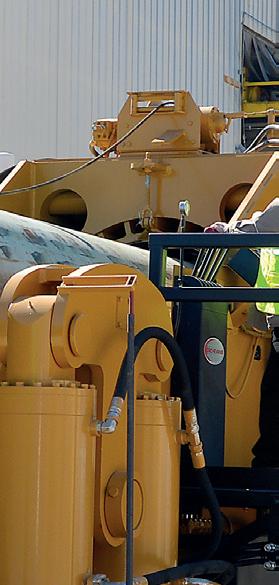
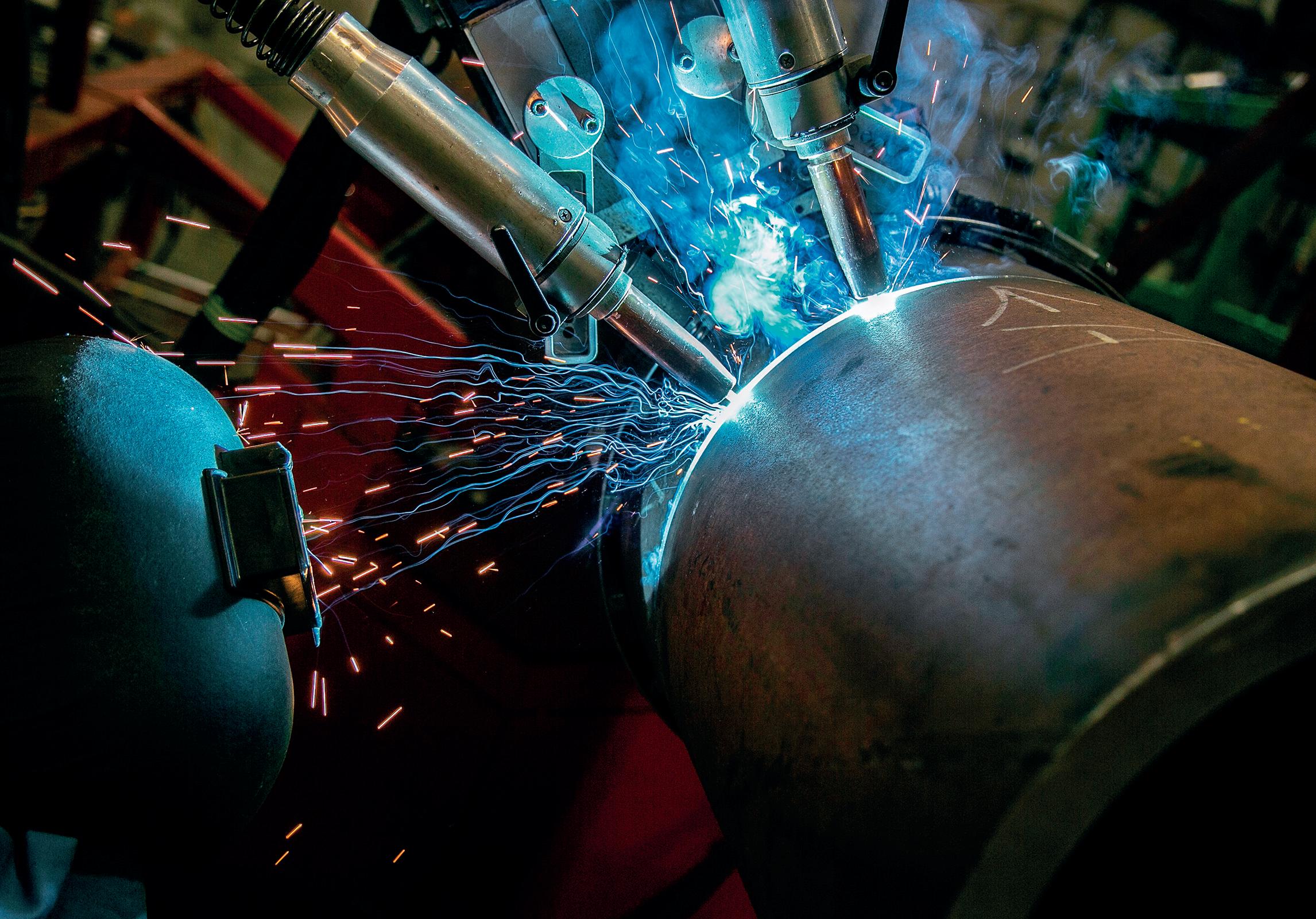
Ensure the efficient, on-time delivery of your onshore and offshore projects with CRC Evans’ market-leading welding and coating services, technologies and integrated solutions, and extensive fleet of pipeline equipment

americasEuropeMiddleEastAfricaAsiaPacific crcevans.com enquiries@crce.com @crcevansglobal CONNECTWITH CRC EVANS
WORLD NEWS
Appeals court orders temporary halt to construction of Mountain Valley pipeline
A federal appeals court has again blocked construction on the Mountain Valley natural gas pipeline being built through Virginia and West Virginia.
The stay, issued on Monday 10 July by the Fourth Circuit Court of Appeals in Richmond, comes after Congress passed legislation in June requiring all necessary permits be issued for construction of the pipeline.
The law greenlighting the pipeline was passed last month as part of a bipartisan bill to raise the debt ceiling. The provision that deals exclusively with the Mountain Valley Pipeline was included after negotiators failed to reach an agreement on broader regulatory reform. This law also stripped the Fourth Circuit from jurisdiction over the case
The stay issued focuses on a 3 mile (5 km) section of the right-of-way that cuts through the Jefferson National Forest. Environmentalists say the construction plan will cause erosion that will ruin soil and water quality. The court has also issued a similar stay in connection with parallel litigation alleging the pipeline would violate the Endangered Species Act.
Mountain Valley Pipeline says the project is already substantially complete and that only 3 acres (1 hectare) of trees need to be cleared, compared to more than 4400 acres (1700 hectares) already cleared.

The US$6.6 billion, 300 mile (500 km) pipeline is designed to
TMX likely to send more oil to US than Asia
The Trans Mountain pipeline expansion (TMX) was meant to unlock Asian markets for Canadian oil, but analysts and traders say those barrels will now probably land on the US West Coast, as Asia gobbles up Russian oil that is cheaper due to sanctions from Western countries after Moscow’s invasion
meet growing energy demands in the South and Mid-Atlantic by transporting gas from the Marcellus and Utica fields in Pennsylvania and Ohio.
Equitrans Midstream Corporation has released a statement related to the decision regarding construction in the Jefferson National Forest:
“We are disappointed with the US Court of Appeals for the Fourth Circuit’s remarkable decision to grant a onesentence stay halting all construction in the Jefferson National Forest with no explanation. The Court’s decision defies the will and clear intent of a bipartisan Congress and this Administration in passing legislation to expedite completion of the Mountain Valley Pipeline project, which was deemed to be in the national interest. We believe the Court also exceeded its authority, as Congress expressly and plainly removed its jurisdiction. Further, the fact that the Court issued the stay prior to receiving full briefing from the federal government and Mountain Valley is particularly telling and demonstrates why Congressional intervention was appropriate. We are evaluating all legal options, which include filing an emergency appeal to the US Supreme Court. Unless this decision is promptly reversed, it would jeopardise Mountain Valley’s ability to complete construction by yearend 2023.”
of Ukraine.
Asia’s heavy crude refining market is roughly nine times the size of California’s, but the geopolitical upheaval means Canada will struggle to reduce its reliance on its number one oil customer, the US (reports Reuters).
Norway’s 800 km Barents Sea gas pipeline back on agenda
A proposed US$5 billion export route linking gas fields in the Barents Sea in Northern Norway to European markets could help alleviate the continent’s dependence on LNG imports, according to a new report by Wood Mackenzie.
The report – ‘Can the Norwegian Barents Sea help solve Europe’s gas crisis?’ – concludes that after spending years in the doldrums, Russia’s invasion of Ukraine brought a potential Barents Sea gas export route back onto the agenda in Norway. However, the report added there are several hurdles the 800 km, 15 million m2/d would have to overcome before it was green lit by Oslo.
“The Barents Sea basin has enough existing resources to fill the pipeline, but the costs involved would make developing the gas more expensive than alternative imports from new LNG developments,” Daniel Rogers, Senior Analyst at Wood Mackenzie says. “However, gas from the area offers a cleaner alternative to LNG, and any proposed development would be carried out under strict Norwegian environmental controls.”
The report adds that state-funding of the pipeline, or the
introduction of a Carbon Border Adjustment Mechanism (a tool designed by the EU to encourage cleaner industrial production in non-EU countries) on gas imports to Europe would increase cost competitiveness.
“The carbon and socioeconomic argument for a pipeline – and further development of the basin – is strong, but it won’t happen without government support,” Rogers says. “However, if long-term European gas demand and prices fall faster than expected, this would put further pressure on the viability of the project.”
The report also states that while Barents Sea gas would help alleviate Norwegian production decline, it won’t be a gamechanger. A bigger pipe would be required to incentivise high-impact exploration and realise the basin’s full potential. Currently, gas in the Barents Sea is produced from the Snøhvit Area subsea fields and is sent via pipeline to the Hammerfest LNG facility. The facility is expected to be at full capacity until the 2040s. There is currently no direct pipeline route connecting Barents Sea gas resources to the main Norwegian pipeline network.
AUGUST 2023 / World Pipelines 5
GREECE
Greek gas grid operator DESFA wants to build a €1 billion (US$1.12 billion) hydrogen pipeline that will connect Greece to Bulgaria.
UK AND IRELAND
Schneider Electric has announced the launch of a new partner programme in the UK and Ireland.
GERMANY
German oil refinery, PCK Schwedt has applied to the economy ministry for €400 million in state aid to help it upgrade the RostockSchwedt pipeline.
INDIA
Ace Energy Infrastructure Pvt. Ltd. has completed a vital link in the Barauni-Guwahati natural gas pipeline being executed by GAIL (India) Limited as part of Pradhan Mantri Urja Ganga project, by completing tunnelling under the confluence of Kanamakra, Aie and Manas River.
BELGIUM
Fluxys Belgium recently welcomed the EU Commissioner for Energy, Kadri Simson, at the construction site of its first dual-purpose pipeline. Initially, the pipeline between Zeebrugge and Brussels will substantially increase the capacity for the security of supply of Belgium and neighbouring countries. In addition, this pipeline is ready for use to transport hydrogen.
HUNGARY
Hungary will ask the EU for a oneyear extension of an exemption from sanctions against Russia that allows refiner Slovnaft, part of MOL, to export products refined from Russian oil to the Czech Republic.
WORLD NEWS
Argentina inaugurates key gas pipeline to reverse energy deficit
Argentina inaugurated on Sunday 9 July the first stage of a gas pipeline that will carry natural gas from the Vaca Muerta formation in western Argentina to Santa Fe province by way of Buenos Aires province, an essential work to reverse the country’s significant energy deficit.
Vaca Muerta, a massive shale formation the size of Belgium located in Patagonia, is seen as key to boosting the South American country’s gas supplies and lessening the need for pricey imports. It has the second unconventional gas reserves worldwide and the fourth in oil.
Argentina registered a US$5 billion deficit in the energy trade balance in 2022 because it needs to import energy during the highest consumption months.
The completion of the first stage of the gas pipeline, which starts in Neuquen province and reaches Buenos Aires province, adds 11 million m3/d of gas. This will double when the compression plants are installed in Tratayen, in Neuquen province, and in Salliquelo, in Buenos Aires province.
The inauguration comes as the ruling Peronist party aims to cling to power in
upcoming October elections with the country reeling from 114% inflation. Economy Minister, Sergio Massa, who often touts the economic benefits of the pipeline, is seeking the presidency in what pollsters predict to be a tight race.
“This work [...] is the beginning of change in the economic and energy matrix of Argentina,” Massa said at the inauguration ceremony. “We are no longer going to import gas in ships because we are going to use the gas from our subsoil.”
The President of state energy company Energia Argentina, Agustin Gerez, told reporters after the event that the call for tenders for the second section of the gas pipeline reaching San Jeronimo in Santa Fe province would be made in September, with expected completion between March and April 2024. This will increase transportation capacity by 44 million m3/d, allowing for imports of diesel and LNG.
With the new pipeline up and running, the country expects to reach net-zero in its energy balance in 2024 and achieve a surplus in 2025, according to official estimates.
Exxon Mobil buys pipeline operatory Denbury
Exxon Mobil Corporation has entered into a definitive agreement to acquire Denbury nc., an experienced developer of carbon capture, utilisation and storage (CCS) solutions and enhanced oil recovery.
The all-stock deal valued at US$4.9 billion puts Denbury’s capabilities related to carbon capture front and centre.
Denbury is the beneficiary of changes in US climate policy that intend to reduce the amount of emissions released into the atmosphere (the Associated Press reports).
Carbon capture and storage involves removing carbon dioxide (CO2), either from the source of pollution or from the air at large, and storing it deep underground. In some instances, the CO2 is transported across states through pipelines and stored at facilities and used for other things.
Plano, Texas-based Denbury specialises in using CO2 to extract oil from old wells and thus is seen as an attractive asset for oil majors and other large-cap energy companies that are starting to make bigger
bets on the environmental, social and corporate governance strategy.
Exxon Mobil Corp. said that the acquisition gives it the largest owned and operated CO2 pipeline network in the US at 1300 miles, including nearly 925 miles of CO2 pipelines in Louisiana, Texas, and Mississippi – located within one of the largest US markets for CO2 emissions, as well as 10 strategically located onshore sequestration sites.
“Acquiring Denbury reflects our determination to profitably grow our low carbon solutions business by serving a range of hard-to-decarbonise industries with a comprehensive carbon capture and sequestration offering,” Exxon CEO, Darren Woods said in a prepared statement.
The acquisition includes Gulf Coast and Rocky Mountain oil and natural gas operations. The operations consist of proved reserves totaling over 200 million boe, with 47 000 boe/d of current production.
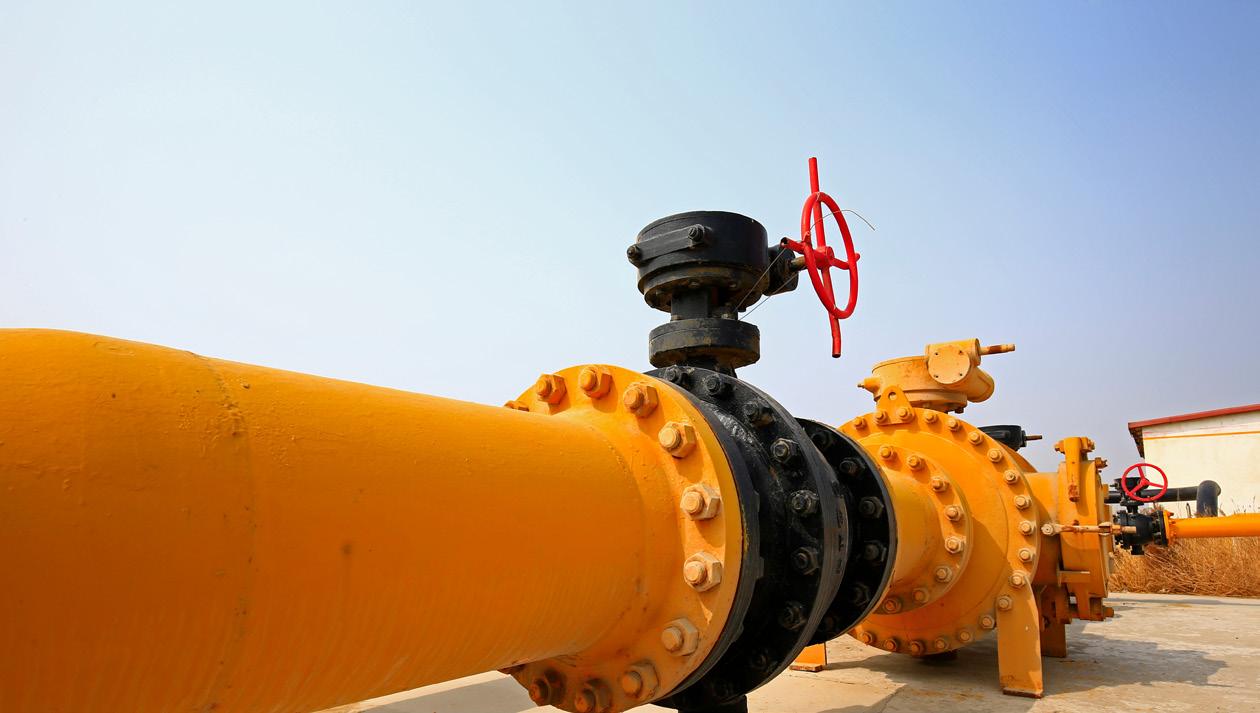
IN
6 World Pipelines / AUGUST 2023
BRIEF
GripTight ® Test & Isolation Plugs
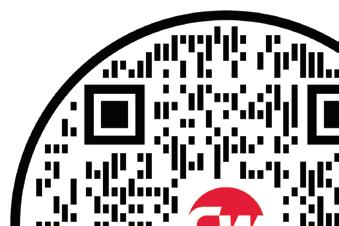








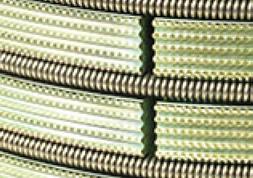


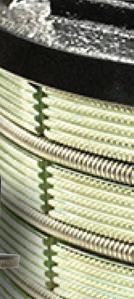


Confidently test open-end pipe, pipelines & pressure vessels without welding, and isolate & test flange-to-pipe weld connections with GripTight Test & Isolation plugs from Curtiss-Wright.

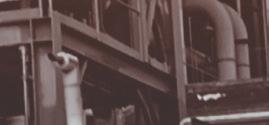




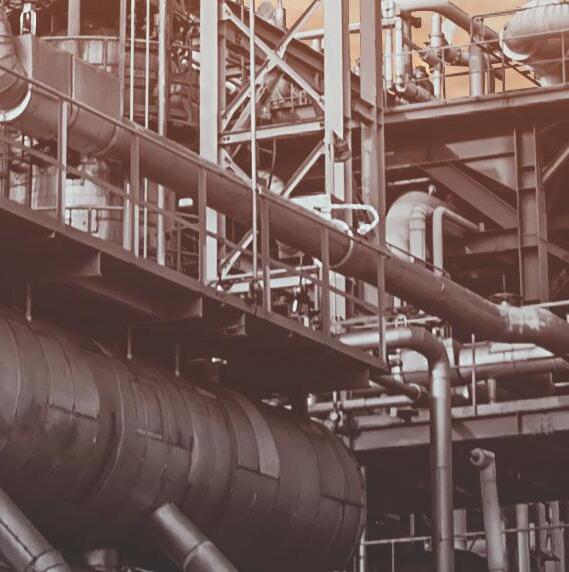
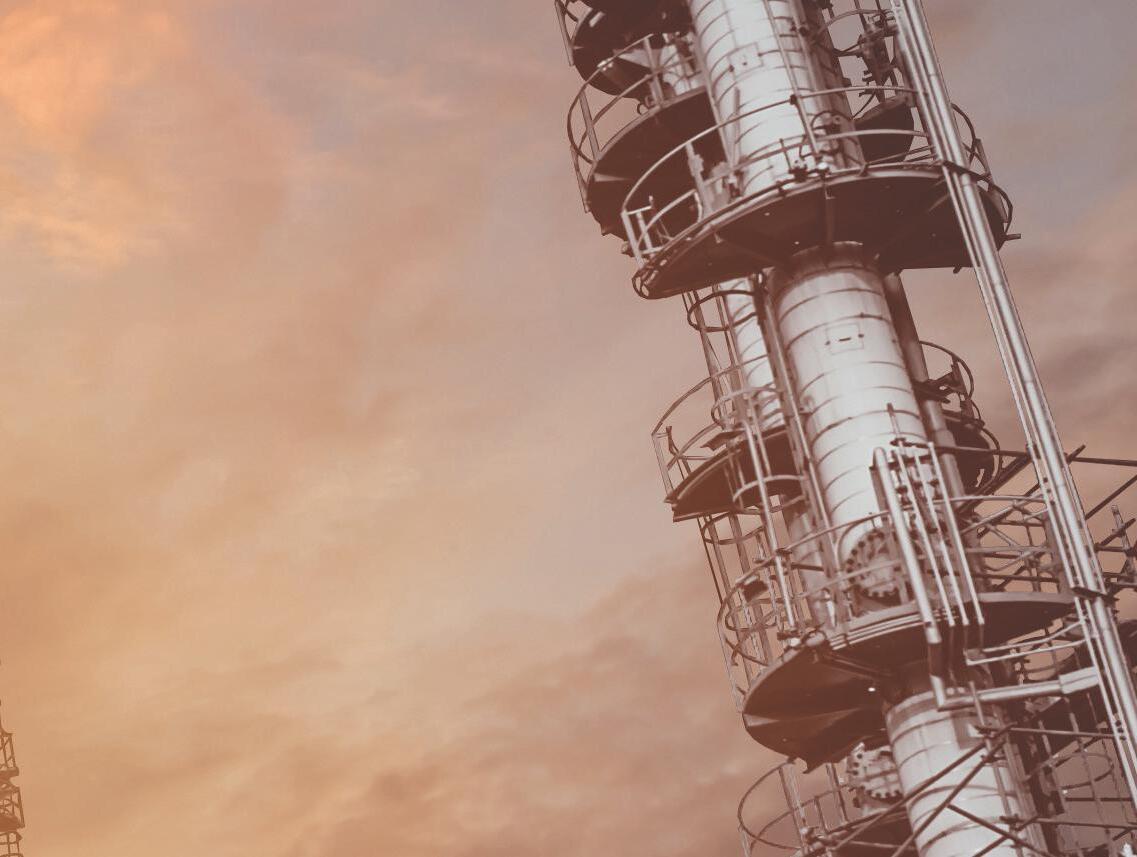
• Standard pressure ratings up to 15,000 PsiG (1034 BarG)

















• Patented gripper design for increased safety in high-pressure applications










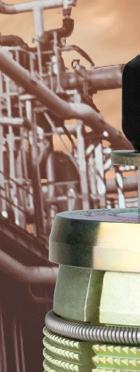
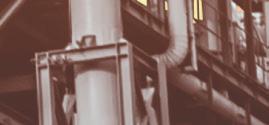
• Eliminate welding end caps for pressure testing pipe spools and piping systems
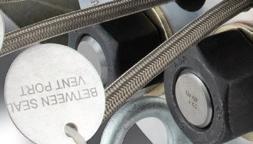
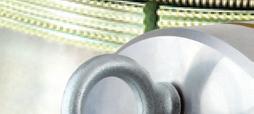





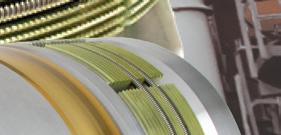




• Test flange-to-pipe welds without pressurizing entire systems
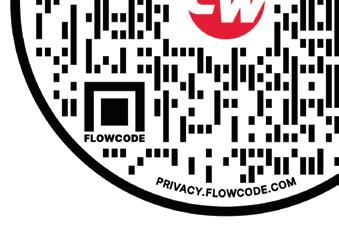

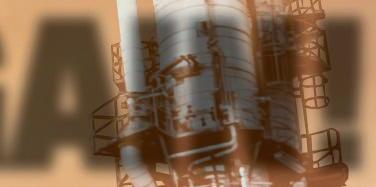

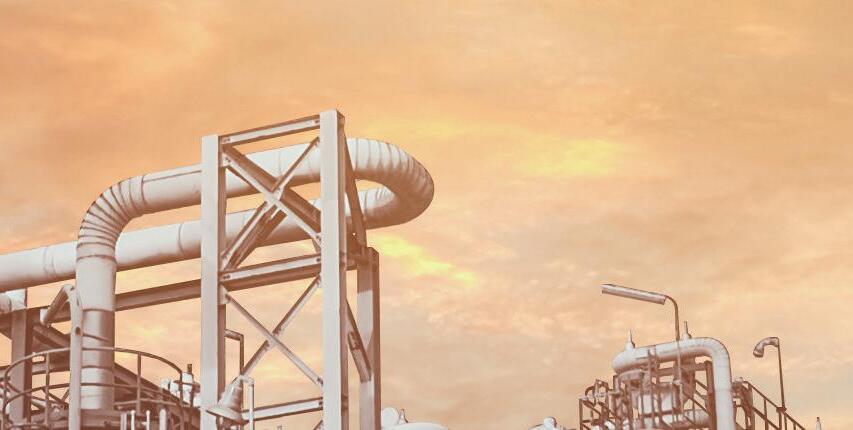

• Isolate & monitor upstream pressure and vapors during hot work



• ASME PCC-2 Type I, III & IV Testing Devices

877.503.0768 l est-sales@curtisswright.com l cw-estgroup.com/wpl-23
CONTRACT NEWS
EVENTS DIARY
8 - 10 August 2023
Rio Pipeline 2023
Rio de Janeiro, Brazil www.riopipeline.com.br
5 - 8 September 2023
Gastech 2023 Singapore www.gastechevent.com
5 - 8 September 2023
SPE Offshore Europe 2023 Aberdeen, Scotland www.offshore-europe.co.uk
11 - 15 September 2023
IPLOCA 2023 Convention Vancouver, Canada www.iploca.com/events/annualconvention/2023-convention
17 - 21 September 2023
World Petroleum Congress 2023 Calgary, Canada www.24wpc.com
21 - 22 September 2023
Subsea Pipeline Technology Congress (SPT 2023) London, UK www.sptcongress.com
2 - 5 October 2023
ADIPEC 2023
Abu Dhabi, UAE www.adipec.com
24 - 26 October 2023
OMC 2023
Ravenna, Italy www.omc.it/en
NTS selects Atmos International for natural gas network simulation
Nova Transportadora do Sudeste (NTS) has become the latest Latin American pipeline company to select Atmos International, the simulation experts, for its natural gas transmission network.
The NTS network is made up of more than 2000 km of pipeline, and has the highest capacity of all pipelines in Brazil, with a transport contractual capacity of 158.2 million m3/d of gas. NTS transports natural gas through a pipeline system that crosses Brazil’s most industrialised region and has links to the states of Rio de Janeiro, Minas Gerais and São Paolo.
With NTS transporting gas to areas
that are responsible for around 50% of gas consumption in Brazil, it’s understandable that they want to better understand the pipeline’s behaviour, improve operations and maximise efficiency.
Working with Atmos, NTS has opted for the full Atmos Simulation Suite (SIM). Atmos SIM has proven compatibility with pipelines transporting liquid and gas, and supports industries ranging from chemical, oil and gas to mining and slurry. The software is in operation in over 20 countries, supporting approximately 45 000 km of pipelines globally.
Express Engineering acquires QA Weld Tech
Express Engineering, the manufacturing, assembly, and testing specialist, has further expanded its offering in the global subsea engineering market after acquiring the assets of QA Weld Tech Limited.
LDC-backed Express Engineering has secured the site and the plant and equipment of QA Weld Tech, a leading provider of flow spools, crossovers and technical welding services based on Riverside Industrial Park, Middlesbrough (UK).
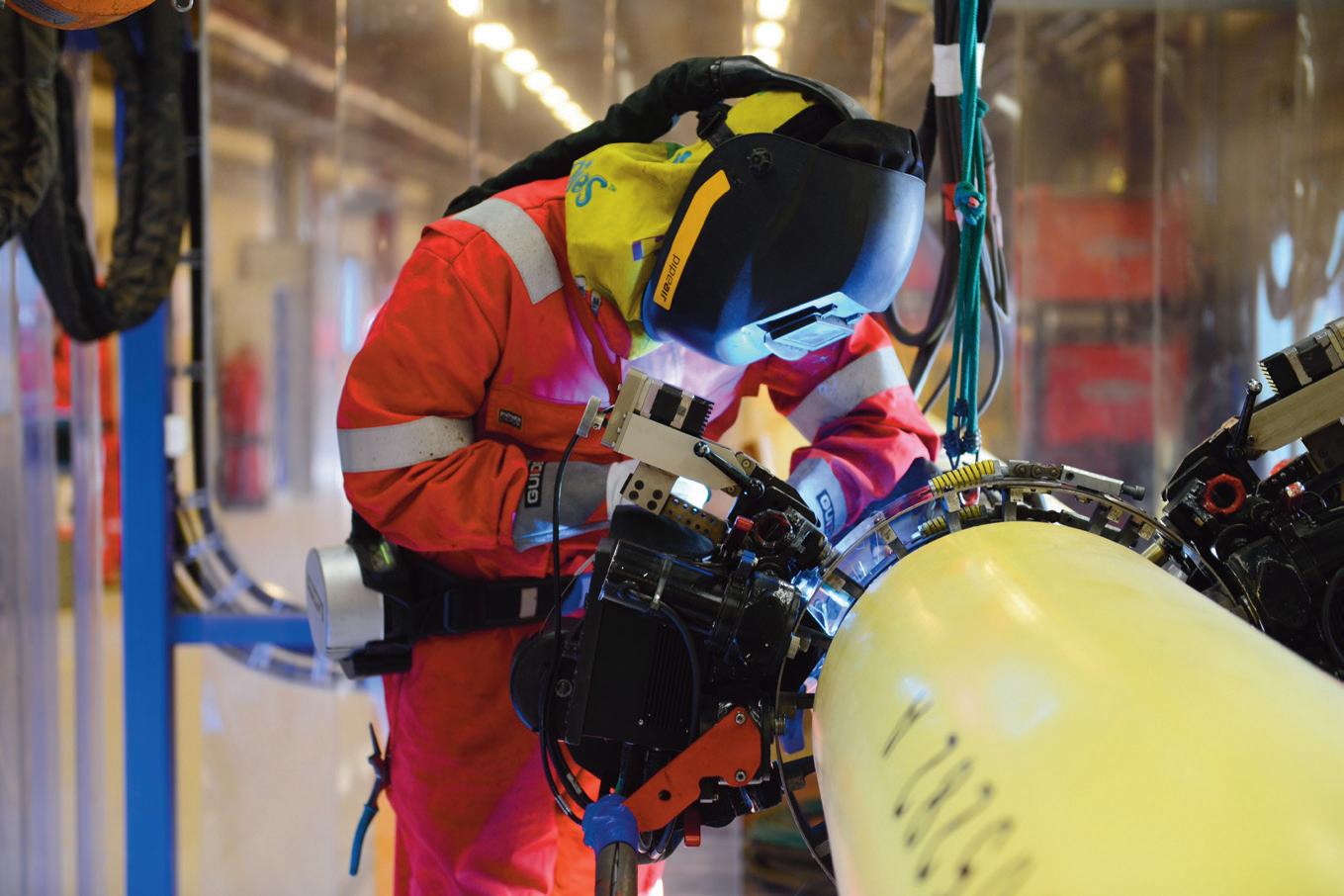
Express Engineering, which is a Gateshead-based global turnkey supplier for subsea actuator assemblies, connection
systems and subsea production systems, intends to retain the current site in Middlesbrough and continue to offer fabrication and welding services under the QA Weld Tech brand. The acquisition has also supported the transfer of 39 staff to the new entity within the Express Engineering group, which now employs more than 230 staff. The investment expands Express Engineering’s technical capabilities, and adds flow loops and spools to the specialist product range, giving access to additional markets and customers.
Thordon Bearings selected for SUMED pipeline service boats
Egypt’s SUMED pipeline operator, Arab Petroleum Pipeline Company, has completed the tailshaft conversion to Thordon’s SXL seawater-lubricated bearing system for seven special purpose single point mooring (SPM) service boats.
SUMED’s fleet of service boats assist
tankers in loading shipments from the SUMED oil pipeline. The pipeline, which runs from the Ain Sokhna terminal in the Gulf of Suez to Sidi Kreir port in the Mediterranean Sea, provides an alternative to the Suez Canal for transporting oil from the Arabian Gulf region to the Mediterranean.
THE MIDSTREAM UPDATE
• Kinder Morgan and Howard Energy Partners announce expansions
• Equitrans Midstream releases statement related to Mountain Valley Pipeline
• WPC undertakes comprehensive review
• Zambia and Tanzania enhance security on oil pipeline
• PetroTal sets production record despite sabotaged pipeline
• DNV acquires Enviroguide Consulting
• STATS Ltd acquired by Mitsui
8 World Pipelines / AUGUST 2023
us on LinkedIn to read news articles and more linkedin.com/showcase/worldpipelines
Follow








10
Growing demand for pipeline construction amid a fluctuating risk landscape has highlighted the need for proactive risk planning to encompass all project partners across project stages. Pipeline supply chains already face disruption from price volatility for key commodities such as steel and the potential for copper shortages due to increased demand and delays in opening new mines. The concentration of supplies for key pipeline ingredients such as copper also leaves them vulnerable to events such as the recent land-use and labour disputes in key mines. The challenge is compounded by labour shortages.
With globalised supply chains crisscrossing regions with geopolitical and weather-related risks, there is a growing imperative for earlier risk planning encompassing key suppliers and project designers. And with risks such as commodity shortages increasingly affecting multiple suppliers and metrics from schedule to scope, there is a need for risk planning to encompass all project stakeholders and metrics.
Yet traditional project delivery models such as design-bid-build are siloed and split into linear stages. Even key suppliers are often excluded from risk planning. Risks to budgets or schedules are often assessed separately, ignoring the interdependencies between them. Risk planning is often late or limited to certain scenarios or individual stakeholders rather than being done early and holistically. Additionally, the burden of project risks still falls too heavily on contractors, meaning risk management doesn’t include owners and key suppliers or involve early project stages such as design.
This is reinforced by the persistence of mutually incompatible project management systems of widely varying quality which cause risk blind spots and gaps in communications across complex projects. These blind spots only increase given the increasing complexity of pipeline projects such as offshore wind and hydrogen that involve increasingly complex partnerships between fossil fuel and renewable sectors.
A combination of booming demand for pipeline construction, and more volatile supply chains and escalating costs will require project management teams – and their systems – to evolve to consider risks earlier.


The pipeline boom
A series of circumstances are driving a significant uptick in pipeline construction. The energy transition and the associated switch from coal to

11
Brad Barth, Chief Product Officer, InEight, USA, explains why we need a sea-change in construction risk management.
gas across Asia, and Europe’s search for alternatives to Russian gas, is driving demand for gas exports from regions such as North America to Africa. Oil pipeline construction is also rising in Africa and the Middle East with 4400 km (2734 miles) of crude oil transmission pipelines already being built. North America will lead the world in pipeline investment and expansion, while China and India are also investing heavily.
Yet, project certainty is being undermined by volatile supply chains. The concentration of copper production in South America leaves pipelines vulnerable to disputes and delays involving new mining projects. A clash over a tax agreement forced a suspension of copper processing at the world’s largest mine in Panama while disputes with community activists have stopped production at Peru’s La Bamba mine. We have also seen volatile and escalating prices for key pipeline ingredients such as steel since the COVID-19 pandemic.
Meanwhile, the globalisation and diversification of supply chains means that risks are no longer confined to individual places or project partners. Everything from geopolitical instability to price volatility can now disrupt multiple suppliers and contractors, and have a knock-on effect across all project metrics from scope to speed. A contractor may compensate for delays of key materials by pouring extra resources into accelerating other areas of the project, therefore increasing spend or sometimes reducing scope to stay on schedule.
Yet, while risks to supply chains are increasingly farreaching, risk management remains fragmented. Traditional siloed, sequential project delivery methods mean risks are considered in isolation by separate stakeholders such as individual partners or owners. Contractors often shoulder most of the burden of risk which means that they also do most of the planning. When rewards and responsibilities are unequally apportioned among project partners, this can also create an irrational incentive for some suppliers or partners to hide vulnerabilities from each other.
The design and build stages often happen in isolation so that risk planning is not built into the FEED stage in adequate measures. Despite the impact of supply chain volatility on project targets, even critical suppliers are often not treated as project partners, so they are also frequently excluded from risk planning. This fragmented approach is worsened by incompatibility between the various paper-based project management systems, point solutions and proprietary project management platforms in use across the industry. Incompatibility between various project management tools impedes joined-up risk planning and collaboration to help mitigate common threats such as vulnerabilities in a supply chain for critical materials.
Early-stage planning
The industry needs to adopt proactive, predictive risk planning baked into project management at an early stage, encompassing all project stakeholders and stages. Risk management should start at the pre-planning stage and encompass the entire project lifecycle and all project partners. Tier 1 suppliers should be involved so that every risk from vulnerability to extreme weather and geopolitical instability to commodity price volatility is factored in upfront. For
example, some recent LNG projects with a focus on modular construction have adopted supplier-centric planning and therefore included suppliers as critical stakeholders involved in risk planning. Shared-risk delivery models from design-build to integrated project delivery methods can further incentivise partners to share resources and data, and collaborate on risk management.
Interoperable project management systems form the foundation for holistic risk planning by enabling data integration to enable shared visibility and responsibility among all stakeholders. Joining the data dots drives collaborative risk planning; data visualisations such as digital dashboards and executive-level project analytics drawing on data from all project partners can give funding approvers an integrated picture of risk to enable integrated planning. By highlighting common vulnerabilities, such as how suspended production in a copper mine could disrupt both key logistics and critical material sources, this democratised approach to risk assessment can help spur smarter mitigation measures.
Connected data and cloud technology can create a single source of truth on major systemic risks to inform holistic mitigation measures. Open, interoperable tools can encourage and enable more open and collaborative project management models where all partners work together on risk management throughout the project lifecycle. For example, a recent collaborative alliance delivery model for a rail project in Canada forced all delivery partners to integrate risk data for regular risk assessment exercises through a single cloud-based platform from InEight.
Looking at future projects, the rapid evolution in the world of AI is driving interest in capturing historic project outcomes consistently across projects, creating an incredibly valuable knowledge base from which to train AI systems. Lessons learned from past projects can serve to inform risk planning on future projects, with less reliance strictly on the prior experience of individual planners. Such ‘collective knowledge’ can drive smarter and more realistic project cost and schedule targets, creating more predictable project outcomes and reducing capital set aside for contingency.
A new project management model
Demand for new pipeline construction is growing faster than the construction industry’s ability to deliver, forcing inevitable changes in approach to keep up. Simply put, the industry must do more with less, meaning efficiency gains must be found, and risks and other friction must be removed from the process.
Future risk management must encompass all metrics from cost, time, and scope, and involve all capital project stakeholders including key suppliers. This will naturally support the trend toward more iterative and shared-risk delivery models such as design-build, progressive designbuild, and IPD, bringing along with it the ongoing digital transformation of construction. The key is to move towards shared visibility and accountability, underpinned by shared data. This will ultimately drive a significant change in project certainty and performance, and lead to more agile, adaptive, and predictable construction.
12 World Pipelines / AUGUST 2023


14
n the past, projects were managed by engineers or technical experts who had little to no formal training in project management. Often a project team came together to define a pipeline in engineering terms, did a bit of external consulting to understand a few factors and issues to be considered, and then the focus was on just getting the thing built. As a picture of management style, an image of a fortified city with strong walls and limited ways inside via guarded entry gates comes to mind.
Projects of the past needed far less to engage with external stakeholders, and the advent of environmental and social impact assessments that came in during the 1980s seemed novel to those concerned with doing the engineering work and getting it built. Extending the analogy of a fortified city, there came a time when the walls were no longer needed and free access into and out of the conurbation became the norm, where responding to external project parties became a major part of project management alongside the engineering part.
The energy sector has been around for centuries, but project management of pipelines as we know it today is facing another need that requires new thinking and responses from new skills and tools, says John Downer, Senior Project Manager, Penspen, UK.
The present
As the complexity of projects increased over the years, project management techniques evolved to become more sophisticated and comprehensive. Modern projects are now much more like today’s cities, with a regular flow of information from all angles and entry points, which involve multiple stakeholders, complex supply chains, and regulatory compliance requirements.
The management of pipeline projects flexes with the demands made so that now there is an increasing need to engage with the widest audience of project stakeholders whilst utilising systems that provide an audit trail of decision-making and demonstrable evidence of the engagement. Additionally, there has been an increased call for managing the non-technical parts of engineering projects to reflect the wider changes in society where what was once accepted is now more prone to challenge, debate, and revision.

15
The role of pipeline project management
Without proper management, the project will simply be unmanaged. The core tenets of successful project management services are delivering success at every level of the project. Macro issues may include the public perception of the project and a well-managed project these days can go a long way to engaging more effectively with the public to explain the reason for the project and its benefits. It can show it is serious about the environment by its actions in taking appropriate mitigation measures to minimise disturbances and perhaps include within the project some direct community engagement that might include local support or education.
Modern projects are inherently complex with a requirement in law to be responsive to external parties and conform to regulations. This has meant that the current role of pipeline project management is a complex amalgam of sometimes competing forces over and above which there is a business objective to deliver the project concept in line with budget, quality, time, and safety criteria. At a technical level, there is a need to ensure that the project is appropriately engineered to modern standards of design, the concept is optimal and reflects a judicious approach to ensuring good value for the investment but also takes account of wider concerns from stakeholders that are reflected in the design.
There has been a raising of the bar with time over what a project must achieve in terms of meeting a much broader, deeper set of criteria imposed by external stakeholders and regulatory systems overseen by a more alert public and pressure group audience. For companies, there is shareholder pressure to be an acceptable operator in the modern world – not to mention external investors assessing environmental, social, and governance (ESG) merits.
Decision-making practices
Project management for engineering projects can gain much from the assimilation of practices from areas such as operational research (OR), which is the science of decisionmaking. Techniques within OR lend themselves naturally to managing situations that are uncertain, unclear, and multifaceted. The application of the techniques allows decisions to be made and for the project to progress taking account of a much wider and more realistic set of inputs and constraints, albeit sometimes with necessary attenuation. OR contains practices such as robustness analysis, rich pictures, strategic choice approach (SCA) and soft systems methodology that are likely to become a part of the project managers’ toolkit in the next decade.
Mingers and Rosenhead’s seminal work Rational Analysis for a Problematic World is a good place to start.1 Also derived from OR techniques, multi-criteria decision-making is referenced by the UK government, which recommends the use of the technique for local government as it promotes a visible record of using a wide range of inputs, constraints, and options to deliver a justified selection.2 In addition, SCA as referenced, was used by the Dutch government in the early 1980s to devise new policy responses for the safe handling of LPG that could meet competing departmental constraints and resulted in a new policy being accepted unopposed in 1984.1
Integrating digital technology with operational research
The growth of modern digital technologies integrates with the wider use of OR practices seamlessly, creating means and helpful tools for visualising multiple data inputs and viewpoints. This allows for complexity to be imagined by a dispersed team or larger group in real-time, and interrelationships to be mapped and contextualised. Document management systems have now expanded to the point where quality control is ensured with revisions and document issues fully recorded and auditable. For the project manager, the potential of digital information overload is remedied by the development of dashboards now highly configurable to elevate critical project management information for constant visibility.
Appropriate responses to business requirements
Demonstrating that the project has delivered appropriate responses to issues raised by stakeholders affected by the project, whilst also delivering the engineering concept required by the client for its business objectives is key to effective modern management of pipeline projects. Certain modern methodologies derived often from OR, as outlined previously, lend themselves for use where there are a multiplicity of options, issues and constraints, and allow the orderly management of deciding whilst providing an audit trail of how the choice has been made. In this way even an aggrieved party, maybe whilst not accepting the decision, can understand how it’s been made and the process of making that decision. Other demonstrated business benefits include:
) Managing scope, budget, and timescale requirements against changing requirements.
) Identifying project objectives, and ensuring management of those objectives.
) Making decisions and progress in times for a project where uncertainty is very high.
) Providing an objective record of decision-making and outcomes.
Top-down
or collegiate management of projects?
So how can lessons from the past alongside experiences from today ensure further progression in the field? Providing two fictive gas pipeline projects to act as examples of management of the past with the techniques of the present might give us an indication of the factors in play.
Project A: top-down management
A dirigiste promoter with a top-down approach for all aspects of a multi-stakeholder project, one that is stretching many thousands of kilometres across several countries. Political imperatives are playing a significant part in determining the selection of engineering options. In terms of project management, the retention of control within the promoter unit means that there is a lack of a project management vehicle to share comprehension of how the project should respond to the changing external environment. The effects of
16 World Pipelines / AUGUST 2023
PE ISOLATION has changed for the better.
Part of the comprehensive gas distribution systems offering from TDW, the revolutionary POLYSTOPP® Quick Connect system makes it easy to safely perform tapping, plugging and branching on polyethylene (PE) pipelines — faster than other methods of isolating and using significantly less excavation space.


One person lift. | For 4-inch through 8-inch pipelines. Pressure rated to 10 bar (150 psi). | Covers multiple standard dimension ratios. 2-inch bypass capable. | Plugging or branching fittings available.

SAFE. QUICK. RELIABLE.
How much faster is it?
Watch the speed comparison video:
©2023 T.D. Williamson
the top-down decisions reverberate within the consultancy team and appropriate responses are not conditioned by interactions with stakeholders directly. To help bridge the gap, more modern project management techniques could facilitate an open dialogue between the promoter and consultant to reduce the risk of adverse outcomes.
Project B: collegiate management
A trusting promoter with an open approach to the project, one that is highly political and stretching across two continents. The consultancy team has built a rapport with the promoter unit catalysed by project management techniques such as open workshops for key decision-making at project gates, where the vortex of technical and political forces can be laid out, allowing the techniques to be honestly debated. Decisions, even with occasional dissensions on issues, can be accepted since the mode of reaching the choice is open and visible. As a result, the technique contributes to the achievement of all project objectives.
The future
Likely to be shaped by several factors, the future of energy projects will include advances in technology, changes in policy, and an increasing focus on sustainability and renewables. Projects that are associated with fossil fuels may need a precursor stage of justification before moving forwards. This can be seen as a useful step as for many parts of the world the use of fossil fuels in areas of energy deprivation is non-negotiable.
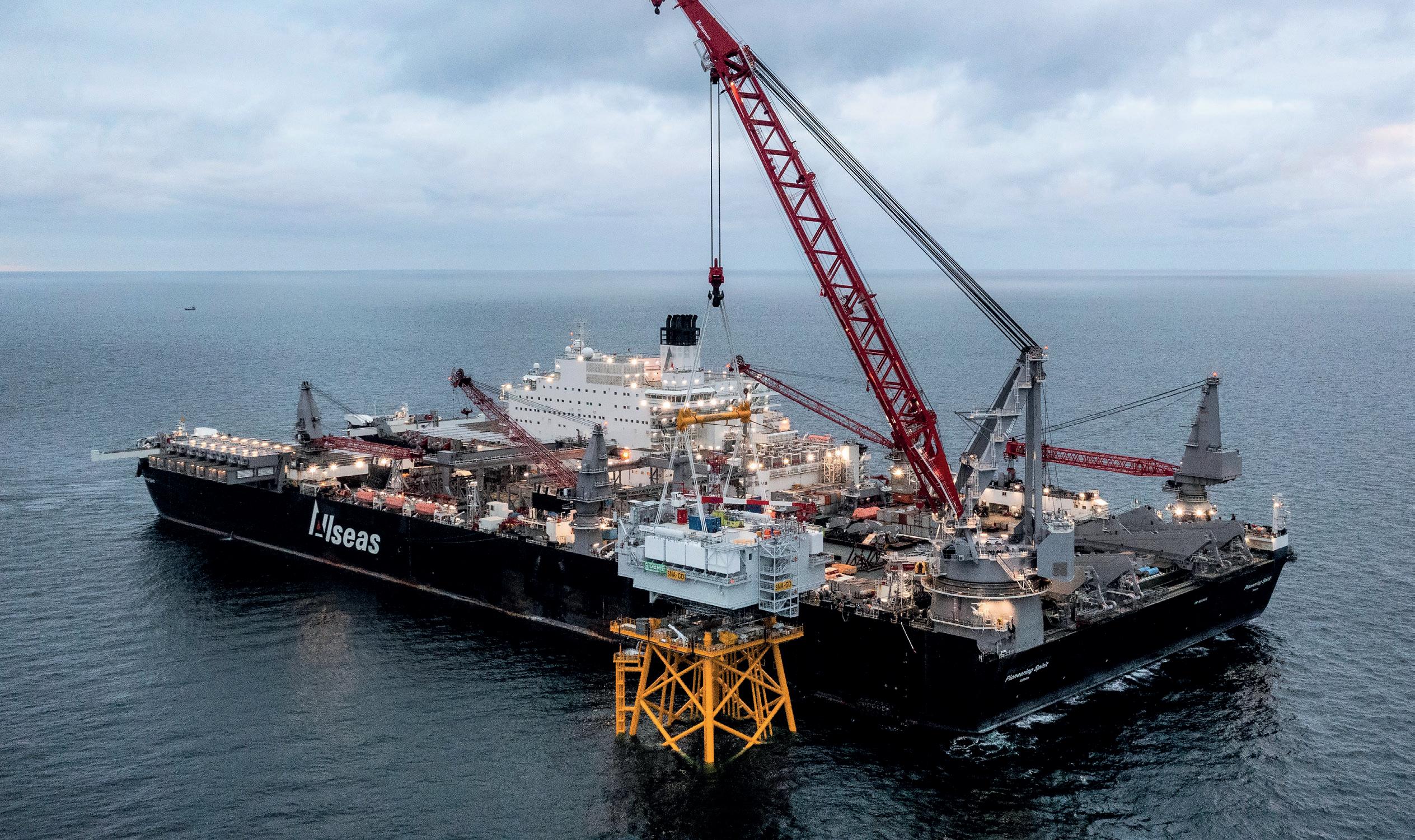
The Western focus on decarbonisation obscures the deep energy poverty of continents such as Africa, where finding any energy source is the focus and where fossil fuel projects may still be the best way to get new energy sources to the greatest number of people. A precursor stage may as a statement of need act as a manifesto for the project to defend against possible objections, where the desperate need for energy can justify a hydrocarbon project.
The energy sector is one of the most complex and rapidly changing industries in the world. As new technologies emerge and environmental concerns continue to increase, the need for effective project management is becoming more important than ever before. Project management will need to adapt to ensure that projects are delivered on time, within budget, and to the highest standards of quality and safety. To progress, whilst delivering on time and to budget is often at strong odds with the need and pressure to consult, so how can project management navigate a wider plethora of requirements and aspire to keep key stakeholders’ content? Whilst this article hints at some of the main areas to consider, how can we prepare our management teams adequately to give them the right skills and techniques to progress the evolution of pipeline projects?
References
1. ROSENHEAD, J., MINGERS, J., Rational Analysis for a Problematic World Revisited: Problem Structuring Methods for Complexity, Uncertainty and Conflict (2001).
2. www.gov.uk/government/publications/multi-criteria-analysis-manual-formaking-government-policy
55th IPLOCA Annual Convention, ‘Together - Delivering Sustainable Energy Infrastructure’ 11-15 September 2023 - Vancouver, Canada Visit www.iploca.com to find out more
high
in the pipeline industry
Encouraging
standards
here are a couple of common sayings in the security industry. One is that compliance is not equal to security. Another (less common but equally relevant) is that all defensive activity is good activity. Most know that the first statement isn’t true, but many companies think that the second is – that if they’re doing something to be more secure, they are more secure. Such a strategy can lead to creating a false sense of security around how well-defended an organisation actually is. Companies often find themselves with a false sense of security because they often equate activity with security. Yet, the cost of
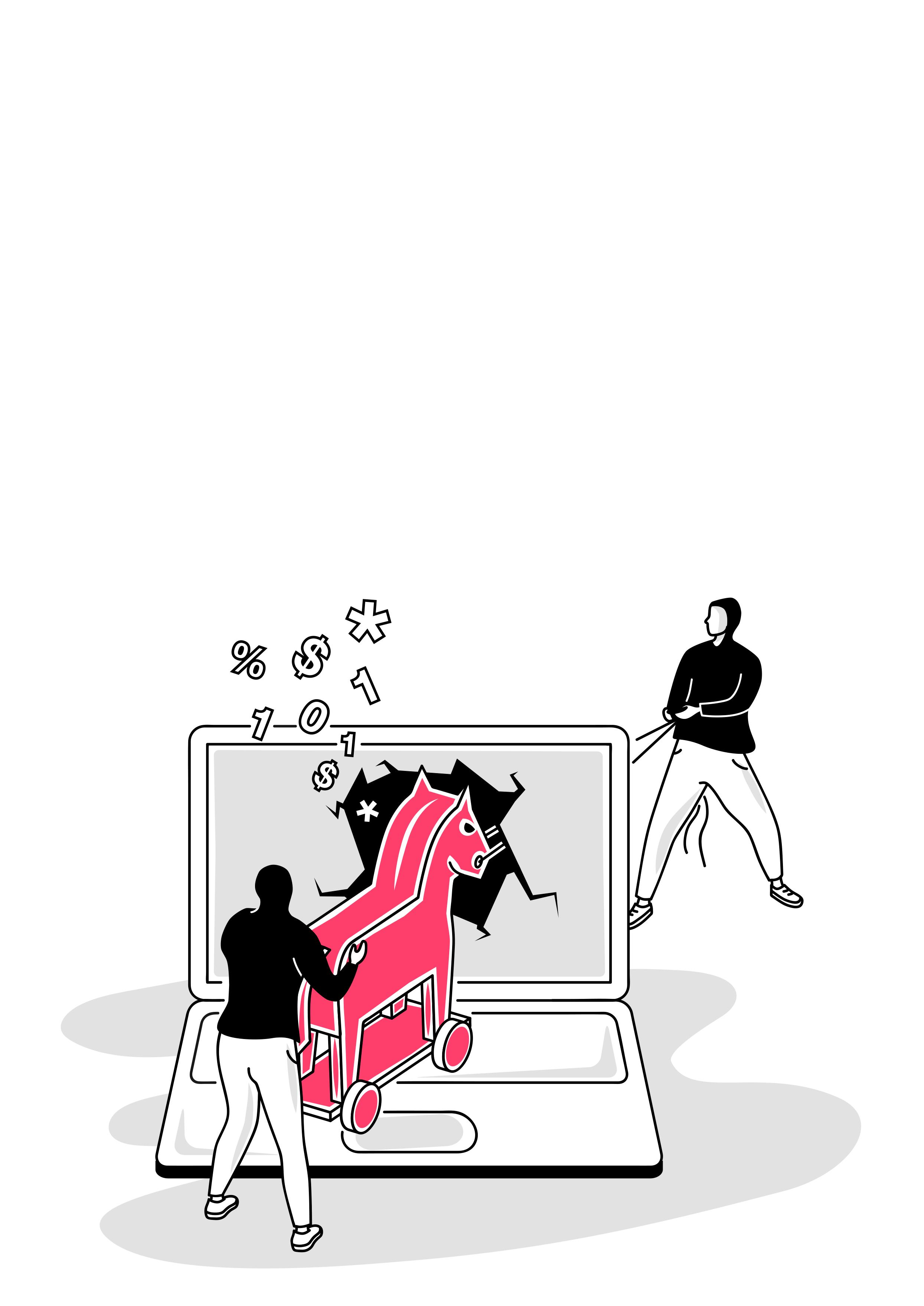
cybercrime is expected to be US$8 trillion dollars in 2023 and is expected to grow to US$10.5 trillion by 2025. Increased spending, and thereby, activity, does not guarantee more security.
The industry
The risk in the oil and gas industry is even higher than in others. Oil and gas companies are a critical part of our nation’s infrastructure and economy; companies in this sector manage operational technology (OT) – the technology that powers the pipelines, pumps, and controllers, for example – and IT networks that power
19
Gerald Caponera, Product and GTM Leader, ThreatConnect, USA, explains how cyber risk management and quantification can be applied to pipeline safety and risk management.
other parts of the business like accounting, shipping, and inventory management.
Risks for IT and OT environments are different. Key risk areas on the IT side can include cloud transition and usage, access to business and marketing data, and identity management. Key risk areas on the OT side include industrial control systems (ICS) such as supervisory control and data acquisition (SCADA), programmable logic controller (PLC), and physical zones and assembly lines.
Even when key risk areas appear on both a business’s IT and OT networks, such as vulnerability scanning, the process differs greatly. Active vulnerability scanning that can be done on IT networks is often too risky to attempt on OT networks. Although some overlaps exist between IT and OT environments, the environments differ significantly enough that oil and gas companies are forced to double their workload to defend the two environments.

Assessing risk – one and done?

The aforementioned risks to the IT and OT networks are not static. An organisation’s OT and IT environments constantly change, its
supplier environment constantly changes, and the attackers’ capabilities evolve. Therefore, organisations must continuously measure potential risk.
Often companies will perform a risk assessment and slowly implement changes without realising that the risks change rapidly. An example of this is the Log4j vulnerability that caused chaos in the company’s security plans. With the increase in cyberattacks on OT networks, new vulnerabilities appearing in software supply chains, and persistent news coverage of the risks, companies can wrongly believe that ‘all activity is valuable activity’.
Breaking out of the trap
Principally, organisations must understand that cyber risk is a business risk and needs to be treated in the same way other company risks are evaluated, quantified, and managed.
Secondly, organisations must ensure they have the ability to prioritise where their cyber investments are going. Spending money on cyber investments without understanding the financial risk reduction is not a wise long-term strategy.
Ultimately, the solution to understanding and managing cyber risks well is to have a strong cyber risk management programme in place. Those cyber risks need to be communicated in financial terms so that the business can see both the potential impact – in terms of what they can consume – while also choosing which risks to accept, transfer, and mitigate.

Good cyber risk management is continuous
A good cyber risk management programme is critical to success and not hard to implement. There are four key steps that are required including assessing risk, measuring risk, controlling risk, and identifying risk. It’s also critical to understand that this process is a continual process. Attackers don’t stop after you finish one cycle – they continuously attack, thus you need to continuously run your process.
Figure 1. Lifecycle of risk management.
Figure 2. IT and OT overlap.
20 World Pipelines / AUGUST 2023
Figure 3. Sample risk register.


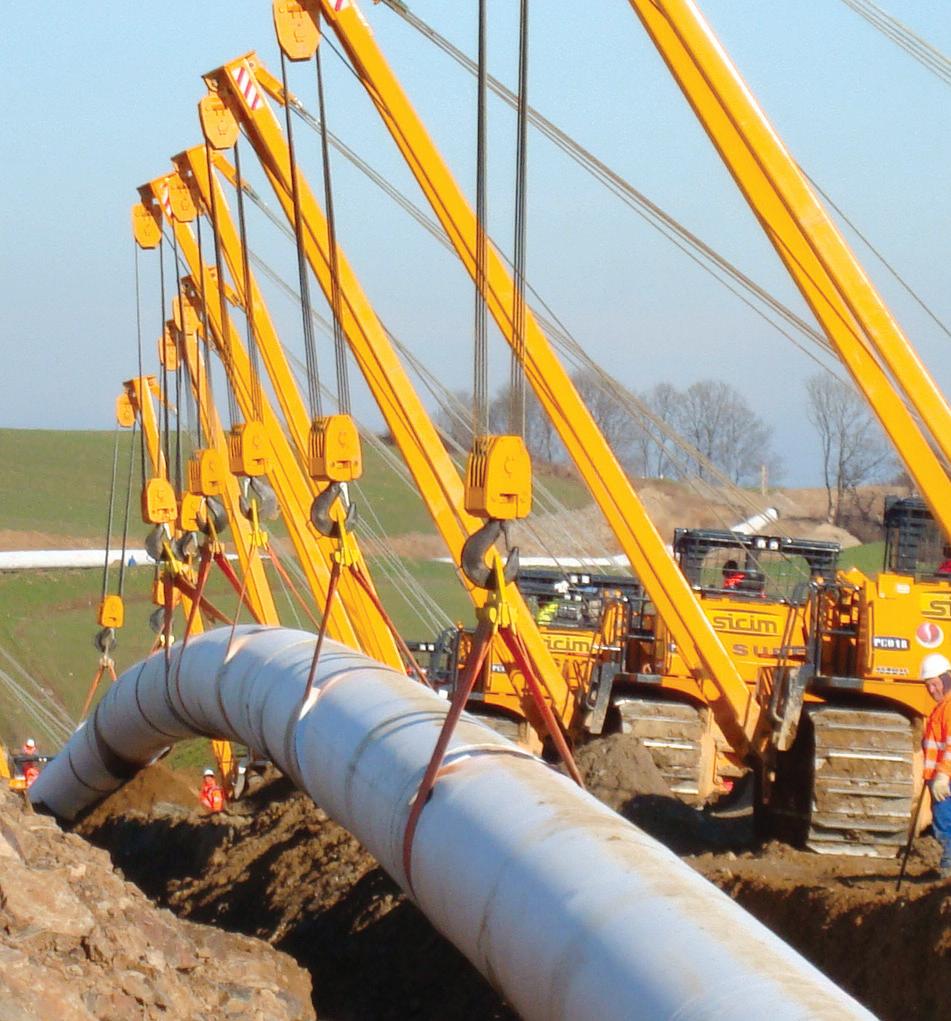
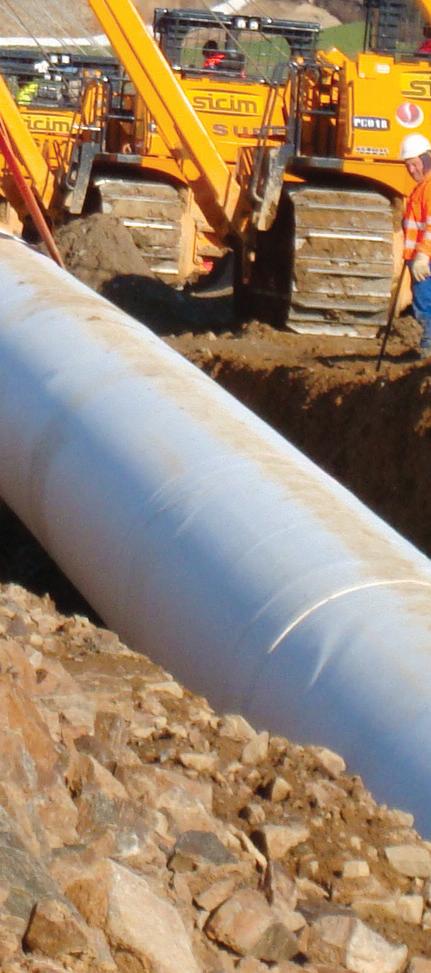

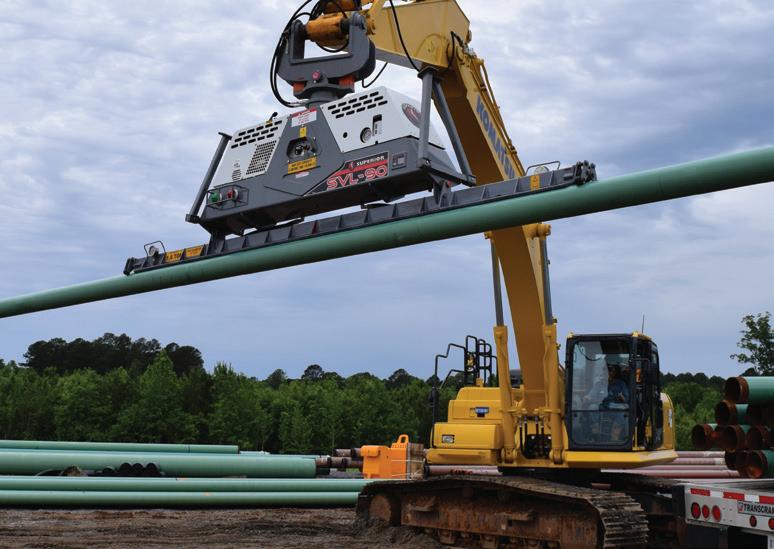





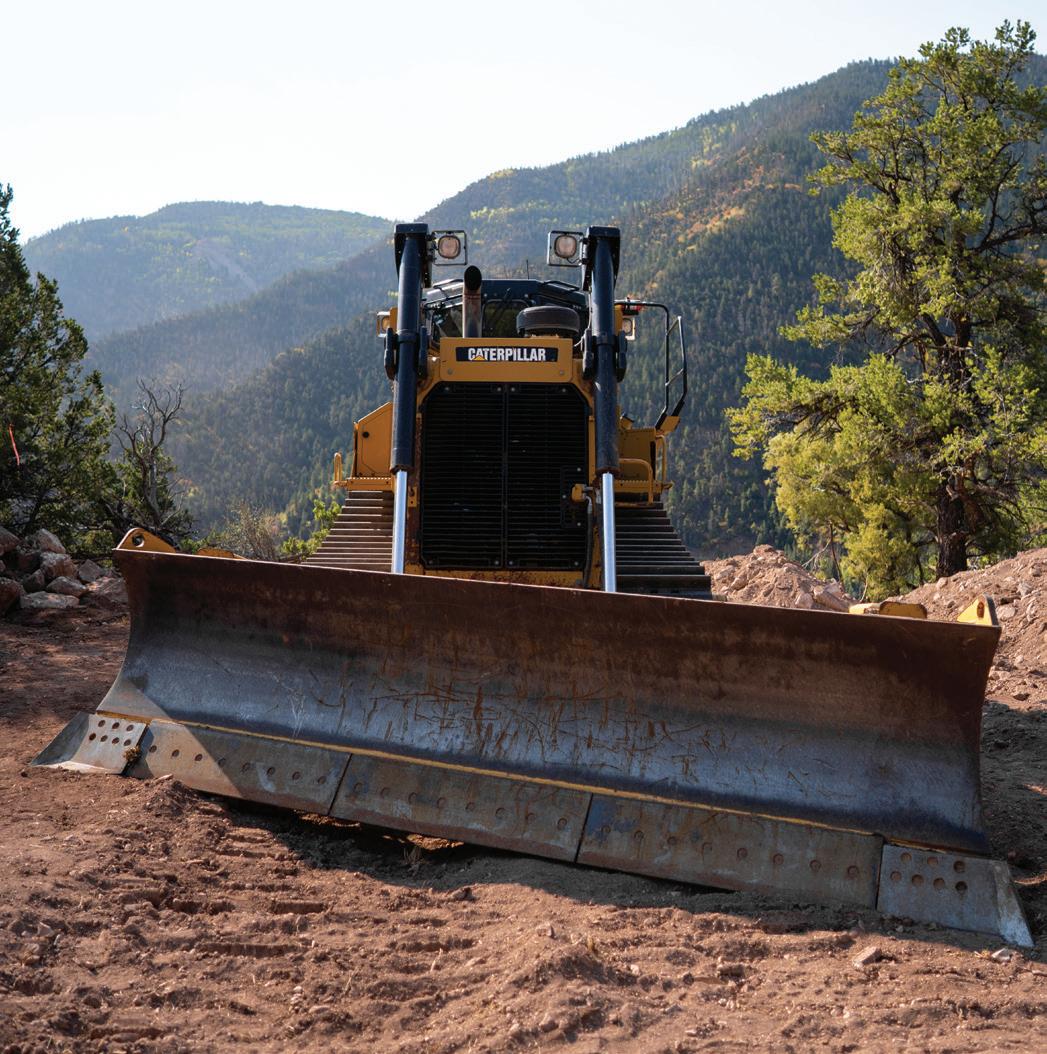




Master your next job with productive equipment solutions from SUPERIOR Manufacturing and Worldwide Machinery. We have the project-proven solutions and new innovations to tackle any job. +1 800 383 2666 sales@wwmach.com worldwidemachinery.com/SUPERIOR SUPERIOR Manufacturing is a trademark of Worldwide Machinery SUPERIOR RESULTS
This process isn’t unique. The piece that needs to be added for oil and gas companies, and arguably all companies, is adding quantitative rather than qualitative measurements to assessments.
Risk assessments are typically done a few times a year (at best), and most assessments are qualitative – not quantitative. Businesses run on financial data and cyber risk assessments need to be quantitative to ensure they’re understood, adopted, and implemented.

An example
Cyber risk is a business risk and needs to be treated accordingly. Whilst some oil and gas companies are managing cyber risk in that way, unfortunately, some are not.
In a hypothetical example, Company X is in the oil and gas industry. The company manages both IT and OT environments and has carefully and wisely segmented the networks so that an attack on one does not metastasise to the other. Company executives have been reading about the increasing risks in their industry and are getting worried about statements like the following:
) The oil and gas industry uses a variety of complex systems and technologies that are becoming increasingly vulnerable to cyberattacks.1
) Threat actors, state actors, cybercriminals, and others could potentially conduct cyberattacks against offshore oil and gas infrastructure. The federal government has identified the oil and gas sector as a target of malicious state actors.2
) According to Dragos research, between 2018 and 2021 the number of ransomware attacks on ICS entities increased over 50%, with 5% of attacks impacting ONG entities.
After reading these, and other similar postings, the business commits to a 20% increase in spending securing their OT environment and is under the false impression that its business is secure and that its key risks are mitigated. Invariably, the company receives the news it has been dreading and has attempted to defend against – a ransomware attack has forced a shutdown of the pipeline. However, the attack did not materialise on the OT network – it was initiated on the IT network.


Deception is a standard adversary tactic
A standard military tactic is to try to convince the enemy an attack will occur in one place while then attacking another. Infamously, during WW2, the Allies expertly utilised deception by inflating hundreds of ‘dummy tanks’ to give German intelligence the impression an attack would occur on faraway Pas-de-Calais, France, as opposed to the Allies’ true and eventual target, Normandy. In the case of this oil and gas company, the deception used was that the OT networks were the only critical vulnerabilities the company faced. Note that the term ‘critical’ vulnerability is not a technical measure, but a qualitative business measure. As Company X learned, deception leads to a false sense of security which ultimately leads to a breach.
How do you prevent deception?
Not only are cyberattacks staying, but the frequency and magnitude is only likely to increase. Oil and gas and other critical infrastructure will continue to be vulnerable and those industries are in the unfortunate position of having to secure both their IT and OT networks. The only way to ensure companies in those industries are not deceived by a false sense of security is to ensure
Figure 4. Cyber risk taxonomy.
Figure 5. Investment based on ROI.
22 World Pipelines / AUGUST 2023
Figure 6. ROI using risk quantification.
they identify, measure, and manage risk in a way the business truly understands.
All companies have a risk register where they track the biggest threats, yet most companies are missing a few key pieces – a sense of the potential loss magnitude for cyber risks and the risk reduction actions plans would provide, for example.
The two most important columns in the spreadsheet in Figure 3 are financial exposure and risk reduction. Cybersecurity is now a major business risk (one of the top five risks companies face, according to the World Economic Forum), and only by managing cyber risk in financial terms can companies ensure they are on the right track.
Companies that measure risk in financial terms – and are experiencing growth – would have seen a different approach. Rather than implementing a blanket cost increase, they would have targeted their spend in the area that provided the greatest risk reduction. This could have resulted in the ransomware attack being prevented or contained quickly enough to cause much less disruption.
What’s the right way to see cyber risk?
Company X – like most companies – focused on what it perceived were its biggest risks. However, the company should have assessed its entire risk landscape and better understood how its IT assets provide business value.
Traceability is important because material cyber risk is realised when an IT asset – which is part of a business application like shipping or accounting that is part of a key process – gets breached.

n L i g h t w e i g h t , o n e - p i e c e e r g o n o m i c d e s i g n p r o v i d e s c o m f o r t a b l e a l l - d a y u s e
O n e w a n d c o v e r s t h e e n t i r e v o l t a g e r a n g e f r o m 0 5 t o 3 0 k V
n U p t o 1 6 h o u r s o f b a t t e r y l i f e p o w e r f u l L i - i o n b a t t e r i e s f i t n e a t l y w i t h i n t h e c o m p a c t w a n d h a n d l e e l i m i n a t i n g t h e n e e d f o r a s e p a r a t e b a t t e r y b o x
n B u i l t - i n C e r t i f i e d Vo l t m e t e r a n d Vo l t a g e C a l c u l a t o r f e a t u r e
n I n d u s t r y s t a n d a r d c o n n e c t o r s a n d a d a p t o r s p r o v i d e c o m p a t i b i l i t y w i t h n e a r l y a l l e x i s t i n g e l e c t r o d e s
If our hypothetical company had mapped and combined the mapping with cyber risk quantification (CRQ) in order to calculate the financial risk to cybersecurity, it would have seen the risk register outlined above. Additionally, the analysis that the risk register shows is the ROI for investing in IT is greater than investing in OT.
But does cyber risk quantification really help?
A question that we frequently encounter is whether QRC is genuinely effective in reducing risk. According to an IBM report, companies that implement QRC reduce the cost of a breach by 48.3%.3
No shoulder bag required!
Also available with Pulsed DC
High voltage Holiday Detector
Conclusion
This hypothetical use case was drawn from past customer engagements in the oil and gas industry. The recommendation is not where to invest in cyber defence, but rather to fully know the breadth of the problem and to create meaningful metrics around cyber risk by using financial terms and balancing risk vs reward in a defensible way.
Wand-style with Continuous DC
Stick-type with Pulsed DC

References
1. www.weforum.org/impact/cyberresilience-oil-and-gas
2. www.gao.gov/products/gao-23-105789
3. www.ibm.com/downloads/cas/3R8N1DZJ
Detects holidays, pinholes, and other discontinuities using continuous DC NEW High voltage Holiday Detector D e Fe l s k o C o r p o r a t i o n l O g d e n s b u r g , N e w Yo r k U S A Te l : + 1 - 3 1 5 - 3 9 3 - 4 4 5 0 l w w w d e f e l s k o c o m
n
Whether used for traditional products or emerging energy transition solutions, pipeline design and analysis software provides value from engineering to operations, says Paul Dickerson and Dr. Jon Barley, Emerson.
The world is rapidly trying to adjust to an era of uncertainty. Supply chain snags, personnel shortages, and the need for more sustainable operations are impacting nearly every industry, including pipeline operators. Ensuring that pipelines operate at peak efficiency is no longer a goal; it is a requirement to stay competitive.
Operating a pipeline at peak efficiency requires the right digital tools, including pipeline design and analysis software. Using a robust software tool helps teams design, prepare, evaluate, and adapt their pipeline operations to meet the shifting needs

25
of a new era of pipeline use and development. But not all tools are created equal; choosing the right solution to help meet the needs of modern operations means finding one that is designed for ease of use and provides value at every stage.
Making a move to modern operations
Today’s most innovative pipeline solutions are neither built nor operated as they would have been twenty years ago. Modern pipeline operators have a variety of needs, and the tools they use should offer corresponding capabilities. Engineers require reliable tools to model the way the pipeline will react to specific changes. For example, their software should be able to simulate a flow decrease in one part of the pipeline to show how that change will impact pressures and flow in other areas.
For liquid transport systems, engineers also need systems capable of performing surge analysis to ensure they are designing safe networks. Their simulation software should be able to demonstrate what happens if a valve is closed
suddenly, and it should offer tools to help the engineer size the surge relief valves.
In addition, many engineers will need access to models for tracking batches of different products moving through the pipeline. Using these tools, the team can model batch schedules to help determine the sequencing of offtake and routing valve opening and closing, which is required to deliver the right quantity of product to the right location.
But those functions are just the basics. Today, as markets are moving toward more sustainable products, many engineers need extended functionality in their digital tools. For example, as operators introduce hydrogen into natural gas, this change can significantly impact pipeline operations. Hydrogen has different physical properties than natural gas, and pipeline pressures must change to achieve the correct flow rates. Moreover, consumers taking gas out of the system are likely calculating their requirements based on energy content rather than volume of gas. Because the volumetric energy content will be lower with hydrogen, teams will need best-in-class design and analysis software to identify the correct increase, and to automatically determine the correct flow and pressure needed to meet those energy contracts.
Carbon capture operations also need simulation software to help design systems for transport to depleted reservoirs for sequestration, or to storage tanks for reuse. These operations collect captured carbon dioxide (CO2) from various plants and transport it to the designated sequestration sites. Transporting CO2, however, is different from transporting gas. CO2 transporters must keep the pressure and temperature at a level to maintain the fluid in a single phase, and this and other requirements present unique challenges. The solutions chosen must help these teams build the models they need to keep the pressure high and the temperature low from endto-end.
Some carbon capture groups are even collecting CO2 from many different sources. As the CO2 from different facilities is combined, contaminants can become an issue. Due to environmental and operational risks, there may be limits regarding how much of each contaminant is present in certain parts of the network. Modelling software provides tracking of contaminants – such as nitrous oxides, sulphur oxides and methane – and it then computes the comingling at junctions in the network to provide the analysis needed for staying within necessary limits.
Successful organisations are finding these digital tools within fit-for-purpose pipeline design analysis and simulation software ecosystems. Today’s most effective pipeline simulation software solutions contain everything engineering teams need, often all from a single provider to help ensure seamless operation.
Pipeline design and analysis software

Pipeline design analysis and simulation software is used by engineers to design pipeline systems, and to help them perform short and medium-term planning for their pipelines before they start operations. The software enables steady state and transient hydraulic analysis of pipelines for both
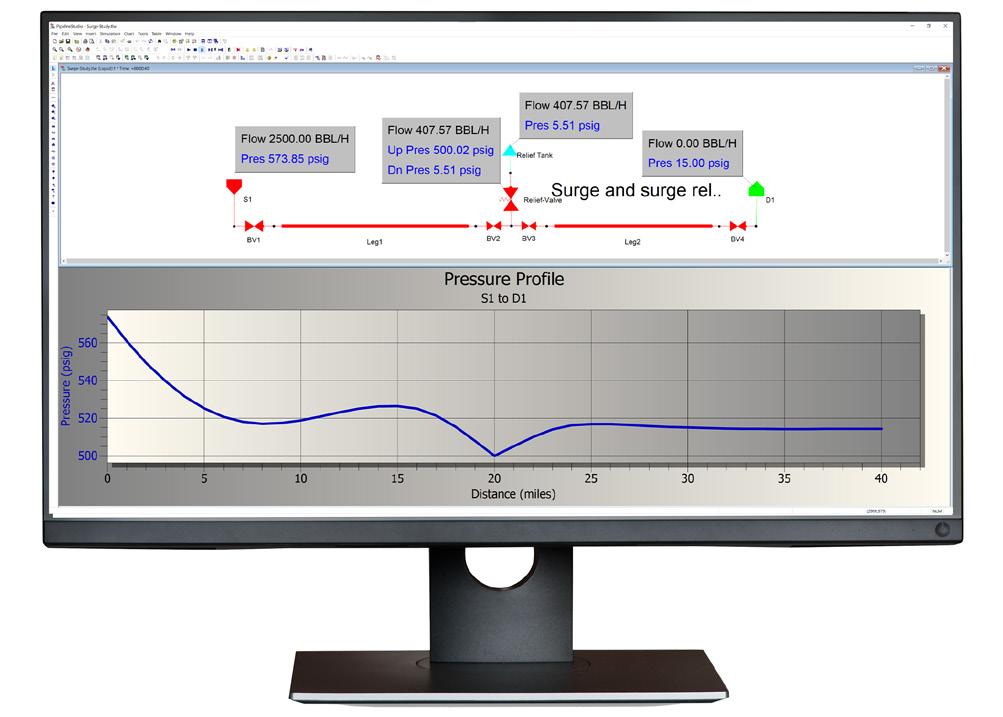 Figure 1. The safe design of liquid pipeline networks requires software capable of accurately modelling surge to ensure relief valves are properly sized.
Figure 1. The safe design of liquid pipeline networks requires software capable of accurately modelling surge to ensure relief valves are properly sized.
26 World Pipelines / AUGUST 2023
Figure 2. Problematic contaminants in CO2, such as methane, can be accounted for in pipeline design software, allowing for safer transport of the gas.
• Increase productivity
• Increase quality
• Lower repair rates
• High level of support
Together, we create the most distinctive and integrated welding solutions for the construction of reliable and sustainable pipelines.

Whether it’s oil, gas, or any other fluid, we are here to ensure reliability and make projects run smoothly. Quality is top priority, we settle for nothing less than perfection.
No matter location, challenges, or circumstances, Qapqa is your go-to partner for exceptional welding solutions. From remote deserts to high altitude environments, we deliver our expertise to every corner of the globe.
Qapqa. Joining solutions.
 Oilserv - Nigeria
Oilserv - Nigeria
liquids – such as crude oils, refined products, biofuels, and LNG – as well as for gases, such as dry and enriched natural gas, regasified LNG, CO2, and hydrogen.
During greenfield design, engineers use pipeline design and analysis software to determine how much piping and other material is needed, how much product volume they need to move through a system to meet contractual obligations, and the required pipe sizes needed to meet specific shipping volumes.
Pipeline simulation software can also be used for pipeline systems already in place. Engineers can enter the specifications for an existing pipeline into the software to identify bottlenecks in the system, determine how the system will respond to specific upsets, or identify where they may need additional compressor stations.
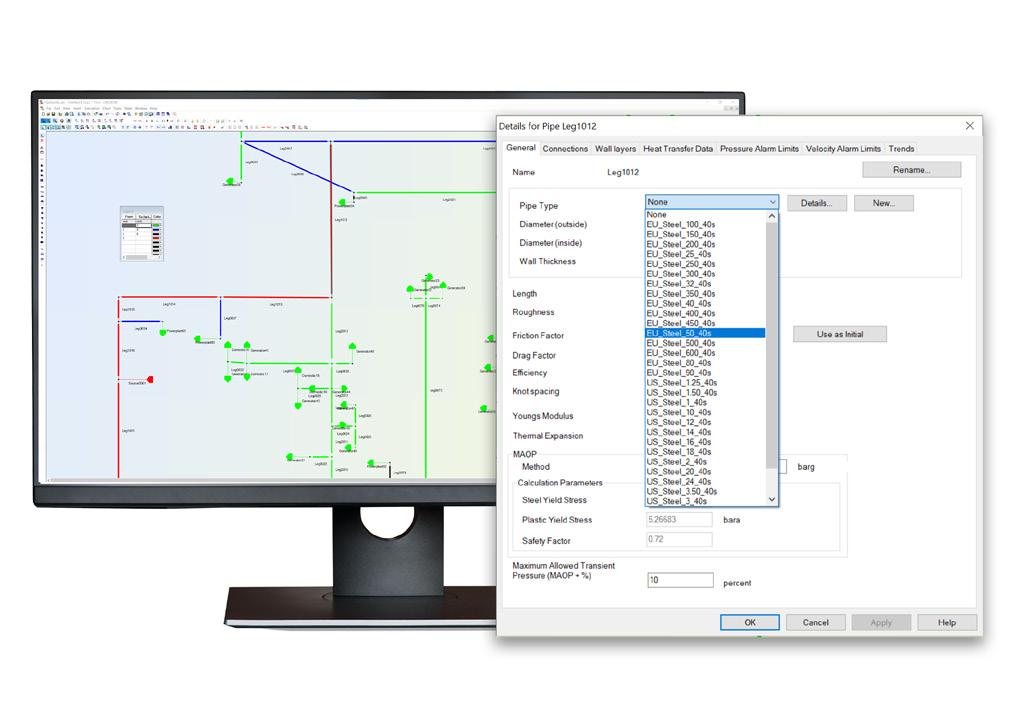
Advanced users also turn to pipeline simulation tools for planning and analysis of their existing systems. Using powerful modelling tools, they can plan and analyse activities, such as the best ways to shut down their pipelines, and the safest and most efficient ways to start them back up again.
Select for ease of use
Pipeline design can be a complex and time-consuming process. Today’s engineers are busy, however, and few have the spare time to spend learning, navigating, and transitioning between software packages to get the reliable results they need. The best solutions are feature-rich but also easy to use. To find such a solution, organisations should look for a few key features that set the most user-friendly and intuitive systems apart from the pack.
First, users should be able to go from zero to design in a single software package. The best pipeline simulation software allows users to go directly from steady state simulation to transient simulation without having to move to a different application or purchase additional modules.
The most obvious benefit to such a solution is that it saves the user the time of exporting and importing files between software packages. However, another more critical value is consistency of the user interface. When a software package
handles the full spectrum of simulation, users only need to learn one system to accomplish all their tasks. Working within a single package dramatically cuts training time with consistent, logical input at every stage.
The single interface should also be designed with the user in mind. Pipeline engineers need accurate answers quickly, and the more clicks they must perform to get to needed data, or to move data between solutions, the more time they spend on low-value tasks. Simulation software must therefore be intuitive to navigate and use. Typically, that user friendliness comes in software solutions that have been developed over many years, and tested and tweaked in the field to meet the needs of actual users.
Another key differentiator for best-in-class pipeline design applications is the presence of sensible default values. Often, pipeline engineers have scant data available for new builds. When their software solution contains well-designed defaults, they can avoid the complexity of starting from a blank page. Instead, engineers can use a starter configuration with sensible values to quickly begin the process of design and create a workable simulation, and they can then gradually refine from there as they gain access to more details.
Best-in-class software also offers parametric studies, which provide the ability to run sequentially through a set of different models with ranges of parameter values – such as different pipe diameters – to quickly identify the correct value to optimise the system, or to provide a range of operational scenarios. These parametric simulations can be performed for a whole pipeline system or individual pipes. Users simply create a matrix of parameters, and the software runs thousands of simulations against those parameters, outputting a matrix of optimal results. Automated parametric studies save significant time, often completing in just hours a process that takes days to perform manually.
Deliver value at every stage
Modelling a pipeline is typically a multi-stage project. In the earliest stages of design, an engineer might not have or need all the granular details. At that early stage, the goal is often to quickly rough-in an idea to see if it is even feasible. That type of simple model should be scalable and easy to create. Bestin-class design and analysis software provides the tools to use early models as a springboard to more complex engineering.
For example, an engineer starting a project might not be worried about temperature distribution across the network, so they simply perform a draft configuration to make sure pipe lengths and volumes look accurate but use isothermal simulation while testing those parameters. Instead of taking the time to set up detailed thermal parameters for the pipe, they simply set an average temperature for the whole system. However, once the lengths and volumes are settled, the engineer will need to come back and go into more detail, setting up detailed thermal parameters for the pipe and adjusting the thermal environment.
That same engineer might temporarily use generic compressors as placeholders in the first levels of configuration. When the system is coming together, they can add more detail around compressor modelling, such as head and efficiency
28 World Pipelines / AUGUST 2023
Figure 3. Pipelines can be quickly configured with minimal mouse clicks using the sensible default data in Emerson’s PipelineStudio modelling software.
maps. The best tools do not force engineers to model every detail from the very first moments of design. Instead, they allow the engineer to easily jump right in, and to then begin refining and adding complexity where it is needed.
Best-in-class design and analysis software also instils value into operations, as was the case with a gas operation company serving a large area with varying natural gas demand. The company used a pipeline simulation system for short-term day-to-day planning. The simulation helped the operations team model how much gas they needed, how they were going to move it, and where it would be needed to satisfy customer demands in the face of fluctuating environmental factors, such as the weather.
The team now uses the models to quickly and easily decide how much to buy, how much to put into storage, and how much to put into the system. The team even does some load forecasting, taking information from load forecasting tools and entering them into the simulation to run tests. With the test results in hand, the team knows it is always prepared with enough gas in storage, even as extreme weather events occur and population centres change.
Critical evaluation is key
Whether a pipeline is designed to transport traditional materials or is navigating the uncertainty of the future with the addition of emerging energy solutions like hydrogen and carbon capture, utilisation and storage, its engineering team will need powerful design and analysis tools. But with a wide variety of available


features and capabilities in different products, it is worth the time to carefully examine each application to determine if a given solution will deliver value across the entire chain.
Best-in-class software has typically been designed over decades and tested in the field by thousands of users over that time, an evolution that adds value at every step. Taking the time to properly evaluate design and analysis software adds the speed and flexibility teams need to make the fast decisions that lead to competitive advantage – a critical success metric in a constantly changing marketplace.
Figure 4. Mapping systems can be integrated into Emerson’s PipelineStudio software to achieve advanced GIS modeling capabilities.
Creating today the energy network of tomorrow
Corinth Pipeworks, a prominent steel pipe manufacturer, is committed to support the energy transition by providing solutions that facilitate the transportation of hydrogen through high pressure pipeline networks and up to 100% in content.
www.cpw.gr
Our position at the forefront of the new hydrogen era is strengthened by our the Research and Development efforts, an in-house hydrogen laboratory and the successful execution of multiple hydrogen pipeline projects.
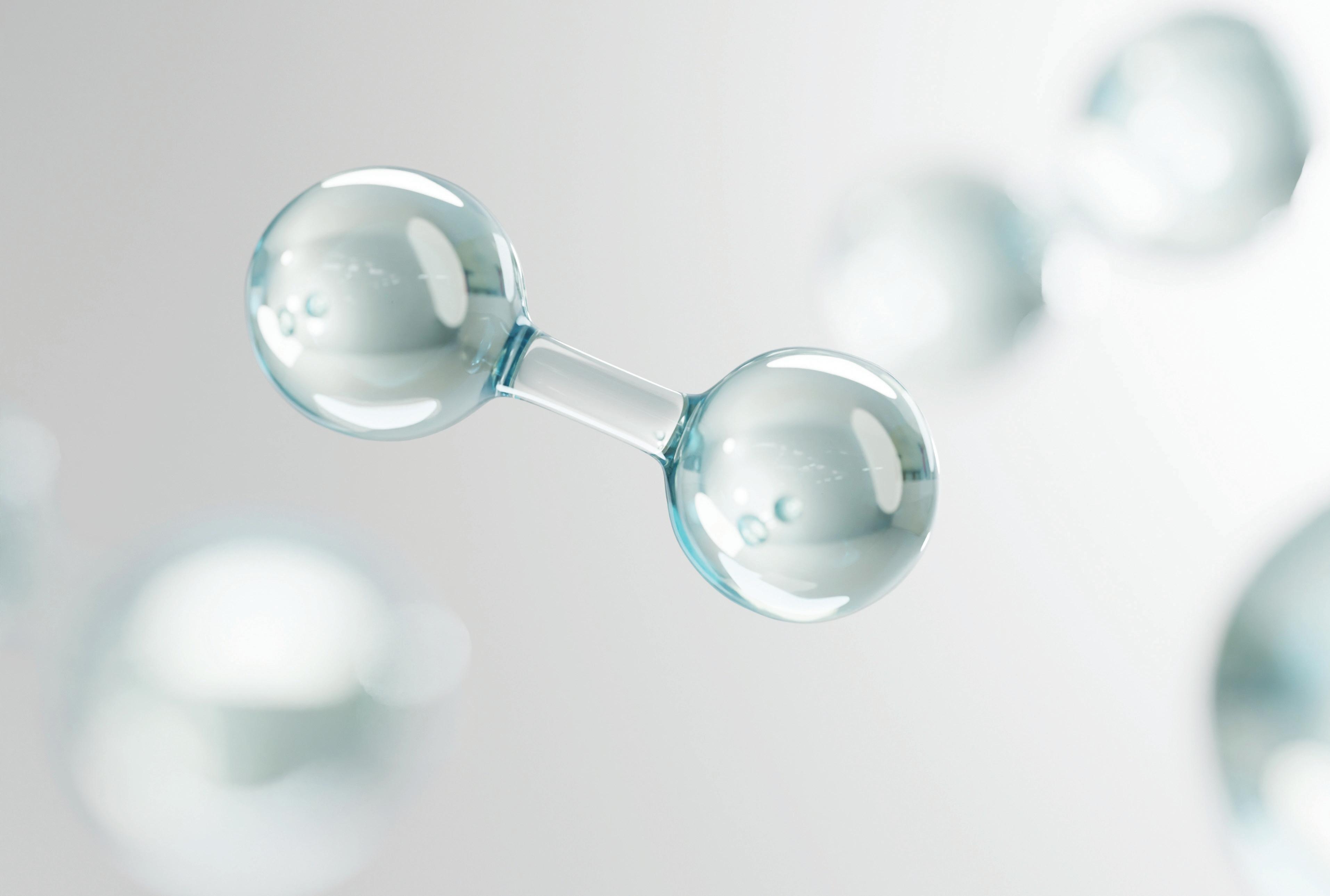
ipelines have long been the safest way to transport gas, but what are crucial components of modern energy infrastructure still have weaknesses. Safety has always been the main priority for the natural gas sector, with an understanding that any accident could have a significant impact on public safety and the environment.
This was certainly the case in 2018 when a series of gas explosions shook Merrimack Valley, Massachusetts (USA). One person died because of the fires, another 21 were injured, and 8000 were forced to evacuate their homes following the accidental over-pressurisation of a low-pressure natural gas distribution system. Any natural gas incident is one too many, but unfortunately, incidents such as Merrimack Valley have increased in frequency over the last decade, according to research by the Pipeline Safety Trust.
While the incident in Massachusetts was rare in its scale and such events are unlikely to be commonplace, it led to pipeline operators forcing through change to drastically improve safety standards in the sector. Two years after the Merrimack
Valley incident, the United States Congress passed the ‘Protecting Our Infrastructure of Pipelines and Enhancing Safety Act of 2020’ (PIPES Act 2020). For operators, it means that they must now assess the risks that could lead to or result from the operation of a distribution system at a pressure, too low or high, that makes the operation of any connected lowpressure gas burning equipment unsafe.
Ensuring safe pressure levels
Gas utilities have relied on pressure regulator stations for over 200 years to maintain constant pressure across their distribution networks. With downstream distribution networks designed to operate at lower pressures, regulating pressure to appropriate levels is essential to avoid catastrophic overpressure events or costly gas outages, either of which would impact thousands of customers.
However, challenges such as differences in the station and regulator types and their configurations, site-specific differences compounded by limited data and multiple failure mechanisms in regulator stations mean traditional risk management methods and models are often inadequate.
 Tony Alfano, Pipeline Product Line Director, DNV, discusses mitigating overpressure and outage risks in pipelines.
Tony Alfano, Pipeline Product Line Director, DNV, discusses mitigating overpressure and outage risks in pipelines.
31
Figure 1. Valve at pig launcher.
Understanding regulations
The safe and reliable operation of gas pipelines and management of over-pressurisation or network outages is not only important for the industry and the communities they serve, but it is also heavily regulated by governments worldwide. There are several regulations in place to manage over-pressurisation in gas pipelines. Regulations vary by country and region, and pipeline operators must be aware of and comply with all relevant regulations in their area.
Here are some of the recent regulations that underscore the importance of a robust overpressurisation management plan for gas pipelines:
49 CFR 192.195
This is a regulation enforced by the Pipeline and Hazardous Materials Safety Administration (PHMSA) in the US. It requires operators of gas transmission pipelines to perform a risk assessment of their pipelines and implement integrity management programmes that address the risks identified in the assessment, including overpressure incidents.
49 CFR 192.622
This regulation, also enforced by PHMSA, requires operators of gas transmission pipelines to have and implement a written emergency response plan, including procedures for responding to overpressure incidents.
PIPES Act of 2020
The PIPES Act of 2020 aims to improve the safety and security of gas and hazardous liquid pipelines by strengthening the regulatory oversight of pipeline operators, enhancing incident response and emergency preparedness, and providing additional resources to support pipeline safety research and development.
Per the PIPES Act of 2020, operators are directed to:
• Assess each regulator station for the risk of overpressure and upgrade as appropriate.
• Assess the risks that could lead to or result from the operation of a low-pressure distribution system at a pressure that makes the operation of any connected and properly adjusted low-pressure gas-burning equipment unsafe.
• Address methane emissions and replacement or remediation of pipeline facilities that are susceptible to leaks or failure.
• The statute also requires the operations and maintenance plan to contain written procedures for responding to overpressure indications.
How best to tackle over-pressurisation
A focused and combined approach, leveraging the power of risk, integrity, and hydraulic analysis, is key to robust regulator station risk and overpressure management.
While many operators use simplified estimates to model regulator station overpressure consequences, leveraging a hydraulic model allows for the identification of more accurate consequence factors, such as the number of impacted customers and the over-pressurised pipeline length associated with the failure of each regulator station in a network.
Juxtaposing this information with the integrity and reliability of each station to establish the probability of failure as well as the ultimate chance of ignition, allows for a more accurate estimate of the risk of an overpressure event at a specific regulation station. This marks a significant step forward in the management of these critical assets.
A deeper understanding of network outages
While network outages do not often pose a significant threat to public safety, they remain a credible risk to pipeline operators and the public they serve. By leveraging hydraulic models, operators gain a detailed understanding of the potential downstream impact of a failed regulator station to plan for these events more accurately in terms of emergency and restoration response and targeted public communication during and after an incident. Combining this enhanced consequence information with the probability of these events for each regulator station gives operators the knowledge they need to minimise the risk of these events.
What is being done to move this school of thought forward?
DNV’s effective regulator station risk model and over-pressurisation and outage management systems provide a comprehensive risk profile for each regulator station by combining the powers of hydraulic and integrity assessments.
While the overpressure analysis and outage analysis applications in Synergi Gas analyse the downstream impact of an event, the integrity and risk management software, Synergi Pipeline, assesses the stations based on reliability, probability of failure and potential impact. When used with the organisation’s other probabilistic models, it provides visibility of the regulator station risk liability vs other asset classes, such as main and service pipelines.
With its accurate picture at that moment or under future conditions, the system provides operators with flexibility. By combining the likelihood and consequence of failure, the tool provides them with a clear gauge of potential damages, allowing for effective monetising of risk across all stations and subsequent prioritising of resources. This information allows engineers to identify the regulator stations most at risk and implement mitigation measures such as overpressure protection, the replacement of outdated regulators and increased inspection frequencies through asset management programmes. Time can also be saved, with decisions that previously may have taken weeks or months now being taken in minutes.
An example of the model in action
In the aftermath of the Merrimack Valley incident, one of the US’ largest operators implemented DNV’s combined solution to
32 World Pipelines / AUGUST 2023


Using innovative, ever-evolving solutions and our expert knowledge, we provide the best services to support all of your operations. We have the in-house capabilities to combine the services you need: inspection services, pipeline management, environmental services, and industrial services. Contact our team for more details: info@intero-integrity.com intero-integrity.com
assess the risk of leaks and ruptures at each station, and the risks associated with overpressure and outage events.
One of the first companies to adopt the programme, it worked closely with DNV experts to create a risk model that accounted for each station’s configurations and associated historical operational reliability. Primarily, the solution has helped the operator:
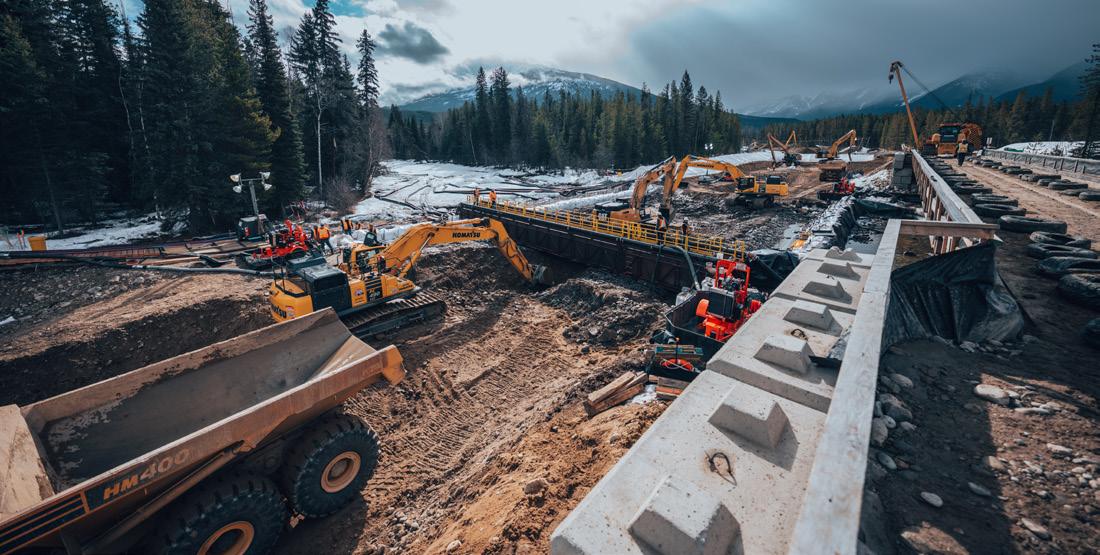

) Meet Distribution Integrity Management Program (DIMP) regulatory requirements, including PIPES Act 2020.
) Evaluate the consequence and impact on customers.
) Identify the highest-risk regulator stations and station types.
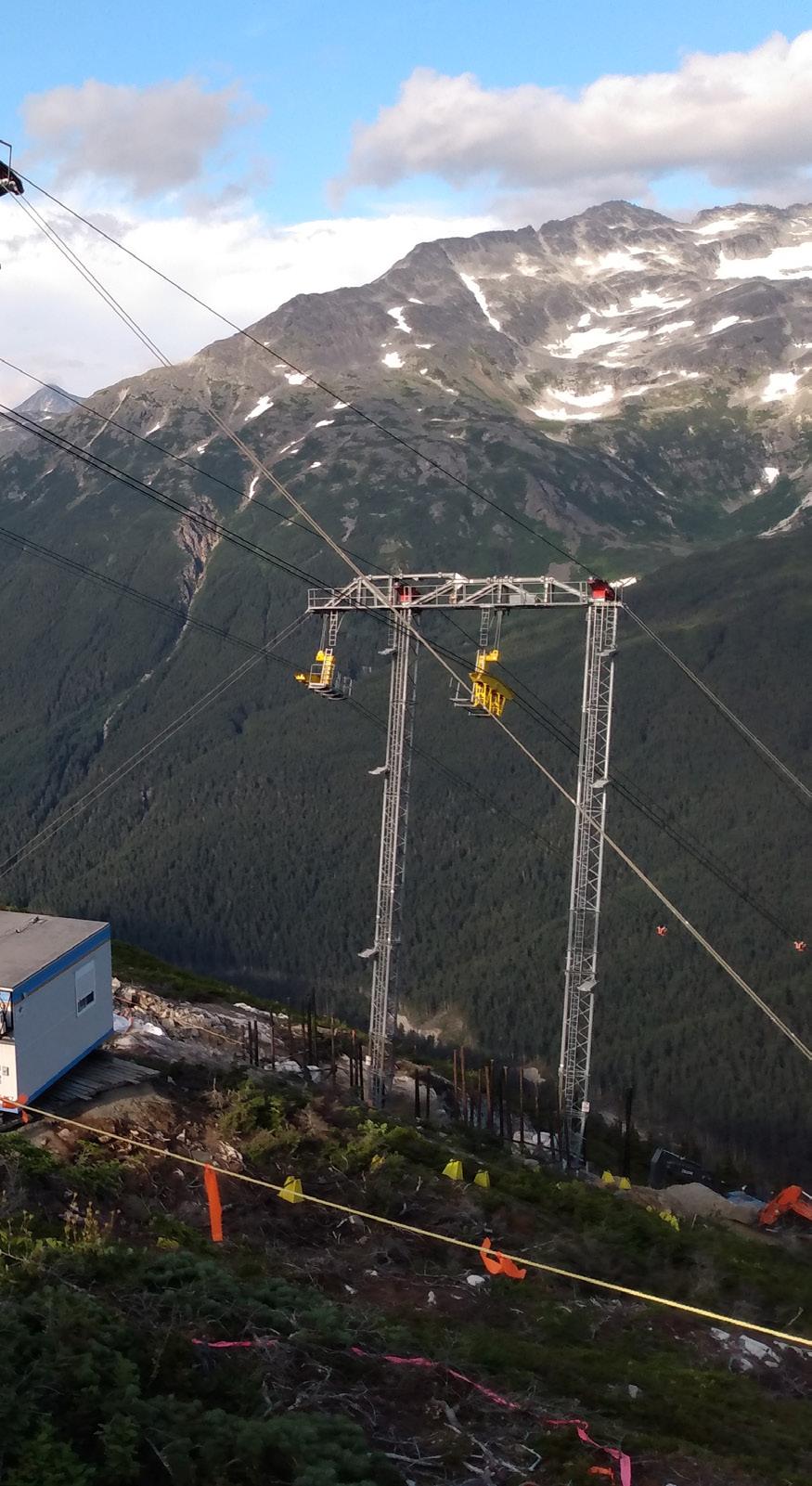

) Understand regulator station risk compared to other assets when used in conjunction with DNV’s other probabilistic models.
) Drive mitigative measures based on risk through DIMP.
) Guide future regulator station design and construction.
The operator has found that their decision-making ability has considerably improved regarding maintenance, upgrades, and replacement of regulator station equipment. Beyond operational tasks, the client relies extensively on the solution for planning, saying that it is fundamental to their capital investment planning process.
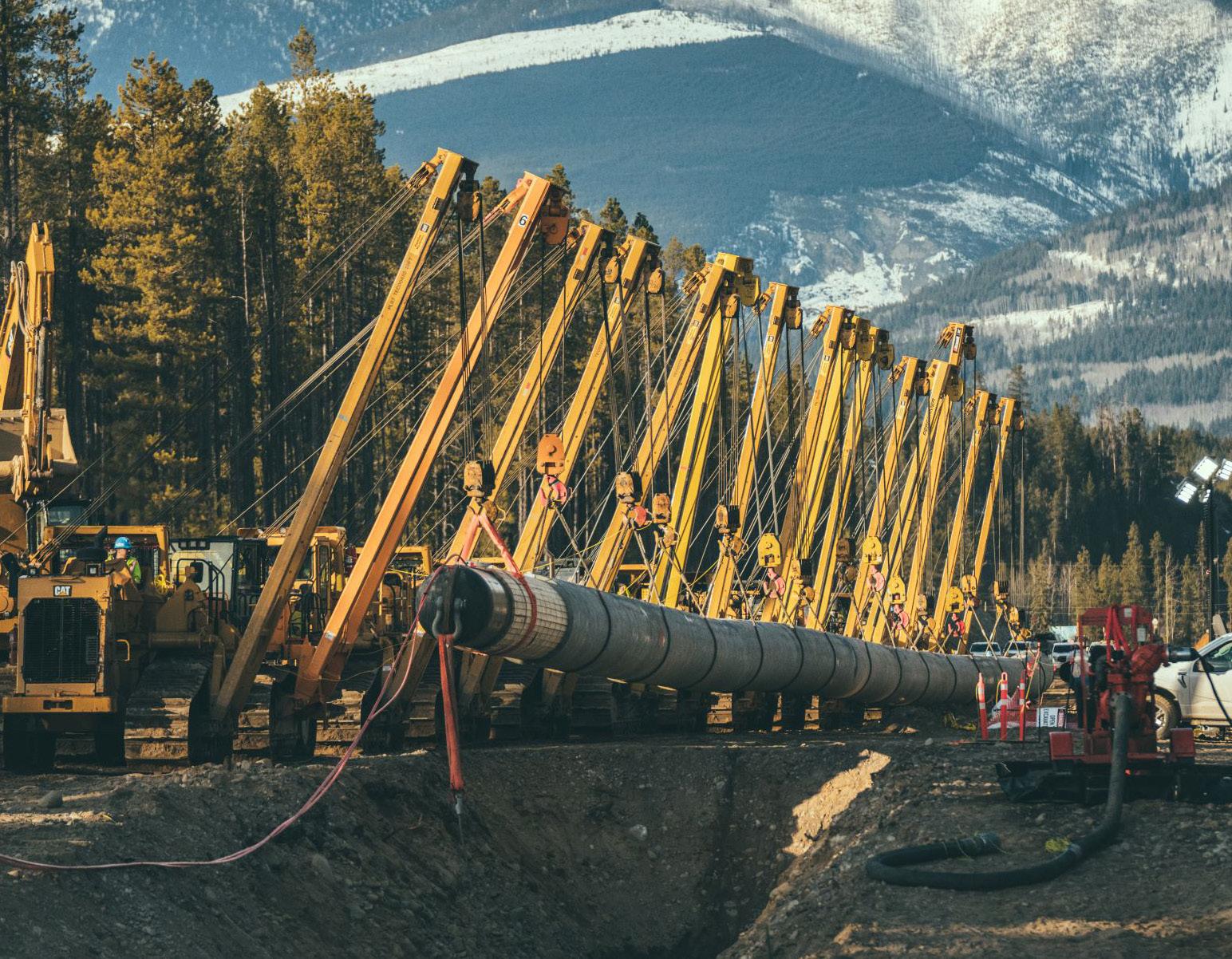
Moving forward with confidence
With utilities prioritising efforts and expenses, being proactive in gauging risk is essential. The Merrimack Valley explosion highlighted the impact of such an incident on public health, safety and property, and the sheer cost that this can generate.
In 2020, the world consumed around 3.7 trillion m3 of natural gas, according to the International Energy Agency statistics. This translates to nearly 10 billion m3 of natural gas being transported daily from production sites to homes, businesses, and power plants worldwide. Given the proven risk of overpressure and outage incidents, proactive mitigation should be on the agenda for companies to safeguard their interests as well as the wellbeing of the wider community. Implementing strategies that proactively address these risks in pipelines can go a long way in preventing potential disasters and ensuring a safer environment for all stakeholders involved.
WWW.LEDCOR.COM
Figure 2. DNV combines the powers of hydraulic and integrity assessments for effective regulator station risk management.
LEDCOR PIPELINE
ONE OF CANADA’S PREMIER PIPELINE CONSTRUCTION AND MAINTENANCE CONTRACTORS
s the energy industry continues its postCOVID-19 rebound, the pandemic as well as economic and geopolitical factors continue to impact employers’ ability to best navigate the worldwide movement of their international workforce.
Offshore energy and maritime projects present challenges and complexities from an immigration standpoint. Globally, other sectors and the associated roles tend to sit more neatly within a jurisdiction’s immigration framework of rules, which often results in a menu of possible options from a visa perspective. With the offshore and maritime industries this is not as clear cut, which means employers must consider several key components to determine options and the likely applicable costs, which often require strategic and innovative planning.
Key considerations
Assessing immigration options in the context of the offshore energy and maritime presents unique considerations. For example:
Location
One vital consideration is whether the proposed work is to be undertaken within a jurisdiction’s territorial waters, or within the continental shelf. United Nations Convention on the Law of the Sea (UNCLOS) governs/determines the type of waters that have jurisdiction over the applicable vessel, rig, or unit.
Type of vessel
The type of vessel, rig, or other category of installation can influence the options.

35
Elizabeth Cleveland Wakefield and Kelly Hardman, Fragomen, discuss immigration in the offshore energy and maritime industry, including work within UK and US territorial waters.
Job roles
Roles are often highly specialised; however, workers may not necessarily have formal qualifications or possess specific language skills which can impact visa eligibility.
Documents
Specific countries recognise International Labour Organization (ILO) conventions which may mean a worker holds paperwork that facilitates certain rights to work. The UK, for example, recognises documents issued by countries that have ratified the 1958 ILO Seafarers ID Convention No. 108. The UK agreed a new convention ILO 185 in 2003 but this isn’t currently ratified. The US doesn’t recognise ILO 108 or 185.
Other considerations
Some governments may have concessions that facilitate specific types of offshore work without the need for a formal work permit. There may also be special rules from port or regional authorities, or considerations around the flag/control or the vessel and whether the vessel encroaches the seabed.
Energy industry and UK immigration
The UK’s immigration system is not the easiest to navigate. Currently, there are limited offshore and maritime sector specific visas/exemptions, and the ‘one-size fits all’ approach has attracted scrutiny resulting in Scotland calling for a tailored migration policy in 2020. In addition, the UK has one of the most expensive systems globally, with government fees for sponsorship easily exceeding £10 000 for a single applicant obtaining a five-year visa. The fast-paced nature of crew changes with little or no advanced warning can create logistical and financial challenges for applicants, employers, and clients.
UK immigration in the offshore/maritime sector can be spilt into two common scenarios, triggering the need for work authorisation. Those individuals who are working within UK territorial waters (UKTW), i.e. the 12 nautical miles from the coast/baseline (irrespective of the vessel they are working on, or role they are performing), unless an exception such as a concession applies. Those individuals who are working on installations operating in the UK continental shelf (UKCS), i.e. up to 200 nautical miles from the coast/baseline.
Despite the UK claiming the title of the world’s largest offshore wind farm, and although there are currently no fewer than 20 windfarms within UKTW, the Offshore Wind Worker Concession, which had been in place since 2017, closed on 30 April 2023. The Concession attempted to address the shortage of labour within the wind energy sector – another consequence of Brexit – by allowing overseas workers to continue to fill roles and more specifically to work within UKTW without the need for UK work authorisation. Several eleventhhour extensions resulted in issues for employers; companies laid people off, decided not to renew contracts and took steps to invest to ensure they were ‘immigration ready’ from a visa sponsorship perspective, only to learn of another extension.
The Offshore Well-Boat (fishing vessel ship) Concession, introduced in 2022, has been proactively extended until 2024. Alongside the Wind Worker Concession, it’s an example of how UK immigration has adapted to sector and industry needs. At
the end of February 2023, the UK’s independent advisor on immigration policy, the Migration Advisory Committee (MAC), announced its ‘call for evidence’ in connection with its major review of the shortage occupation list. While the industry awaits further developments, specific offshore and maritime roles may be added to the list which may result in otherwise ineligible jobs becoming eligible for sponsorship, as well as reduced government fees for visa costs.
Working within UKTW
To obtain a sponsor licence, companies must have an operational and trading UK entity/establishment and key personnel based in the UK to fulfil important roles such as an Authorising Officer. This process is administratively heavy, costly and carries a huge compliance risk if not followed. If a company is granted a licence, subject to the corporate set up, they would then have the option to pursue a skilled worker (SW) visa or global business mobility (GBM) visa.
The different visa types carry minimum salary requirements, but are dependent on the specific role the worker is performing – minimum £26 200 for a SW or minimum £45 900 for a GBM –as well as skill requirements – RQF Level 3 for a SW (UK A-Level) and RQF Level 6 for a GBM (degree level). In addition, the SW requires a requisite minimum level of English, which can pose a challenge for workers in this sector, and the GBM requires overseas tenure with a connected entity (subject to salary).
Additionally, companies can also opt for various nonsponsored possibilities; for example, a frontier worker permit, family routes, high potential individuals, ancestry routes and the Youth Mobility Scheme. Business visitor status is not an alternative to a work visa – individuals entering the UK under this category are unable to conduct work in the UK, including UKTW. Business visitor status, however, can be of use in very specific circumstances, i.e. site visits, meetings, and specific supply of goods activities.
Whilst priority services can be obtained for most of these UK visa categories, the location of the applicant, their immigration history and availability of services will influence speed to ground, and this also adds to the cost. A best-case scenario end to end lead time is currently around six weeks.
Working outside UKTW but within
the UKCS
UK legislation does not apply to those operating in the UKCS, therefore most individuals who will work outside of UKTW will either require a continental shelf worker visa (CSW), or a Seaman’s Book. This status doesn’t permit work within UKTW, therefore if a worker needs flexibility to work within the 12 mile zone, a GBM visa, SW visa or other form of work authorisation will likely be required. The CSW applicant can’t utilise priority processing; currently an end-to-end lead time is six weeks.
If a worker is going to be wholly or mainly based on a vessel/moving installation that is continuously moving through UK waters, then they may be considered a seafarer. In these instances, here are the key questions that are used to determine status: is the worker in transit to join a ship or in transit as part of crew? Is the worker joining a ship in the UK where ILO 108 applies? If the latter, a worker travelling under contract to join a ship may require an entry visa unless they hold a Seaman’s
36 World Pipelines / AUGUST 2023
PROTECTIVE OUTERWRAPS
HEAT SHRINKABLE SLEEVES
SOIL-TO-AIR INTERFACE
DENSO™ are leaders in corrosion prevention and sealing technology. With 140 years’ service to industry, our mainline and field joint coating solutions offer reliable and cost effective protection for buried pipelines worldwide.











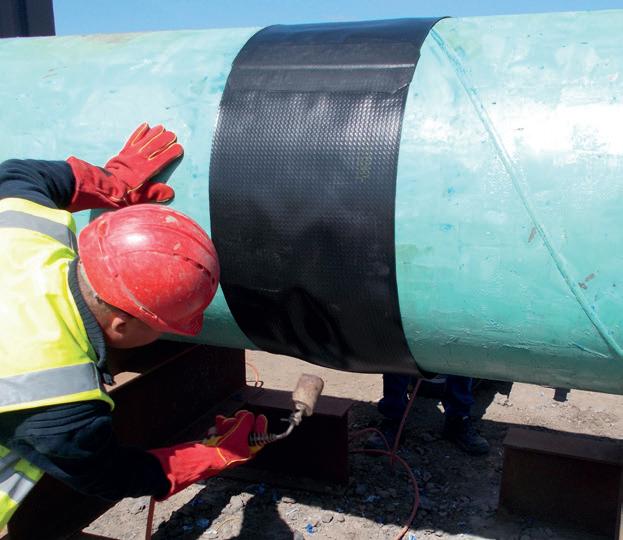
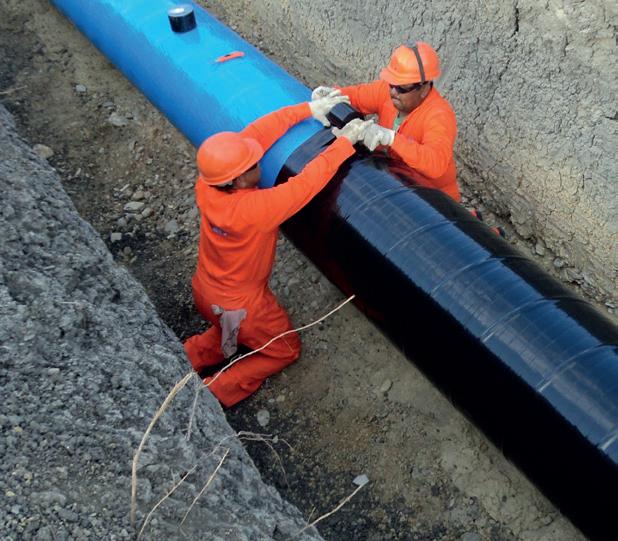





United Kingdom, UAE & India
USA & Canada
Australia & New Zealand
Republic of South Africa
FOR CORROSION PREVENTION
www.denso.net

www.densona.com
www.densoaustralia.com.au
www.denso.co.za
LIQUID EPOXY COATINGS
PETROLATUM TAPE WRAP SYSTEMS
BUTYL TAPE WRAP SYSTEMS
INTERNAL PIPE LININGS
BITUMEN TAPE WRAP SYSTEMS
A MEMBER OF WINN & COALES INTERNATIONAL
VISCO-ELASTIC COATINGS
Book issued by a country that has ratified ILO 108. Despite this, there are several scenarios where seafarers still require UK work authorisation. These include to join ferries operating between two UK ports, to join ‘Ro-ro’ services between UK ports carrying more than 12 lorry drivers, and to join dredgers operating wholly/ largely within UK waters or scheduled domestic freight between UK ports.
Recent developments
Since 12 April 2023, an offshore worker must report to the UK government when they arrive directly in, and leave, UK waters. This is typically done via email no later than 10 days after the date the worker arrives/leaves UK waters. Failure to report could result in a sponsor’s licence being revoked if a sponsor fails to comply with their reporting duties, or in the case of an unsponsored offshore worker, they may be refused entry to the UK.
Energy industry and US immigration
The US subscribes to a unique, complex web of immigration and maritime law and agency regulation it has not ratified UNCLOS, and does not accept ILO Conventions 108 nor 185. The delineation of the boundaries between US waters and the outer continental shelf (OCS) is governed by a series of US laws and regulations. Further, the US does not allow the use of Seafarer Identity Documents to work offshore. These unique characteristics, combined with the complex US immigration system, create a challenging environment for companies to navigate to ensure the appropriate workforce perform crucial activities for offshore energy projects.
The OCS is a vital resource for the US that comprises a crucial component of the country’s energy supply. The US maintains sovereign rights over the OCS regions, which include the Gulf of Mexico (GOM), Atlantic, Pacific and Alaska. The GOM’s OCS has long been a global focal point for energy related offshore activities, and federal actions in the last few years have precipitated a surge in renewable energy projects on the Atlantic. In February 2023, the Biden administration announced actions to expand offshore wind projects nationally, including the first ever offshore wind lease sale in the GOM and expansion of the Atlantic Federal-State Offshore Wind Implementation Partnership. The US Immigration and US Coast Guard regulatory requirements for a foreign national to work offshore depend in great part on whether the work will occur within US waters or on the OCS. Companies committed to successful US offshore energy projects are faced with a tricky framework for ensuring critical workers can perform necessary work offshore.
Working within US waters
Individuals who will work in US waters require US work authorised immigration status and the appropriate associated visa to enter the US and work in US waters. US immigration regulations are particularly draconian and do not permit any work for any duration while on a B-1 business visitor visa, unless one of a very narrow set of exceptions apply. Employers who knowingly violate this rule can be subject to significant civil and criminal penalties.
The appropriate work authorised visa category will depend on the nature of the work to be performed in the US and the employee’s qualifications. Those who have worked abroad for at least one year for a company with a qualifying relationship to the US sponsor in a specialised knowledge or managerial capacity may be eligible for the L-1 intracompany transferee visa. Depending on the employee and US sponsoring entity’s nationality, a treaty-based visa category such as the E-2 Essential Employee may be appropriate.
Engineers and other degreed professionals may be able to qualify for H-1B Specialty Occupation Visa, though H-1B visa numbers are capped per year and vastly outmatched by demand leading to a lottery system. Recent trends with respect to H-1B lottery selection make this a difficult category to rely upon. Timeline and costs associated with obtaining appropriate visas vary a great deal depending on current US Citizenship and Immigration Services processing times and US Consular Visa appointment availability at US embassies abroad. However, with a few limited exceptions, timelines to obtain an approved US work authorised visa can take anywhere from 2 - 10 months and longer – a timeline that can create pressure on businesses when workers are needed on the ground ASAP.
Working on the US OCS
The Outer Continental Shelf Lands Act (OSCLA) requires that individuals working on US-owned vessels operating on the OCS be US citizens or permanent residents. While according to the US Department of State’s Foreign Affairs Manual, the OCS is not within the US for visa purposes, documentation of an appropriate exception and special US Coast Guard and other regulatory permissions are required for a foreign national to work onboard a vessel located on the OCS engaging in exploration, development, or production of minerals such as oil and gas. Transit to and from the OCS also requires careful planning as individuals must also have appropriate visas to enter the US and to return onshore. Individuals who lack proper documentation may be denied re-entry to US when attempting to return onshore.
Vessels that are at least 50% owned or controlled by non-US citizens are not subject to the citizenship manning requirements. These vessels should obtain a manning exemption letter from the US Coast Guard confirming their foreign ownership. Where a vessel is subject to the OCS manning requirement, individuals who are not part of the ‘regular complement’ of a crew can obtain a Letter of Determination from the US Coast Guard confirming the same to support entry to the US. Companies will need to support critical workers in seeking these documents to support appropriate visa applications, entries to the US, and presence on vessels located on the OCS.
Key takeaways
As outlined, international companies seeking to do business in the biggest energy and offshore markets in the world face a myriad of challenges and complex laws and regulations. Given the specific nature of projects coupled with an international workforce, companies are advised to work with immigration counsel specialising in this field to help assess their needs and develop a fully compliant plan to meet their business goals.
38 World Pipelines / AUGUST 2023
Todd
aking every second count can be a challenge for project owners and pipeline contractors. The threat of unintended downtime and the cost of dealing with it is a constant affliction for fast-paced manufacturing and heavy construction industries.
The goalpost for leading companies is typically bent toward developing strategies contributing to equipment profitability, in consideration of a pipeline project’s development and uninterrupted continuation. Purpose-built machines, configured and tuned for maximum uptime and reliable component performance, are important, sought-after solutions.
The tractor and the winch, when traced to their roots, exemplify just two types of equipment associated closely with
oilfield environment and pipeline building applications, virtually since their conception in heavy, industrial situations.
In pipeline construction, crawler dozers are being factory equipped and deployed with state-of-the-art hydraulic planetary tail winches – built to perform integral tasks during logistical preparations, the installation process, and for safe handling and maneuvering.

Industry specific
Entire industries are formed around and recognised for the ability to plan strategically and logistically. Specialists in material handling fields dedicate entire careers to mastering how to lift, move and transport bulky objects safely and efficiently. Delays
Razor, on behalf of PACCAR Winch, explores the ever-evolving challenges faced by pipeline construction professionals.
39
Figure 1. A Caterpillar crawler dozer performs work on the site of a pipeline build.
associated with procuring and staging materials and equipment, or the inability of machinery to perform as intended upon arrival, can lead to unwarranted downtime.
Project outcomes can and will likely be impacted by effective coordination – coordination that should start in
the equipment factory and maintain an effective presence over the course of a build. This includes while pipe lengths and machinery are being transported and delivered, as well as throughout site preparations, the construction phase, clean-up, and demobilisation.
In business, people serious about their work gravitate toward those interested in the same. One pathway to overcoming certain obstacles in the pipeline build space is landing on the right partners, which from start to finish will commit deploying resources to on-time delivery of reliable machinery that’s properly configured, maintained and supported, and ready to operate.
No borders
Pipeline Machinery International (PLM) was formed as a Cat® equipment dealer without geographical borders, and exclusive to the pipeline industry. Based in Houston, Texas, the organisation has been operating since 2005, carving out office and equipment yard locations in regions from Alberta, Canada to The Hague, Netherlands. They’ve established a presence in Australia, Asia, the Middle East, and other points of strategic intersection across the globe. They work with the Cat Dealer Network, comprising 160 independent dealers serving 197 countries, wherever jobs are located.
In North America, according to data compiled by IBISWorld, the pipeline construction industry had been expected to increase 1.4% in 2023, as companies such as PLM peer actively in the direction of bright spots growing in tandem with the upcoming needs and opportunities.
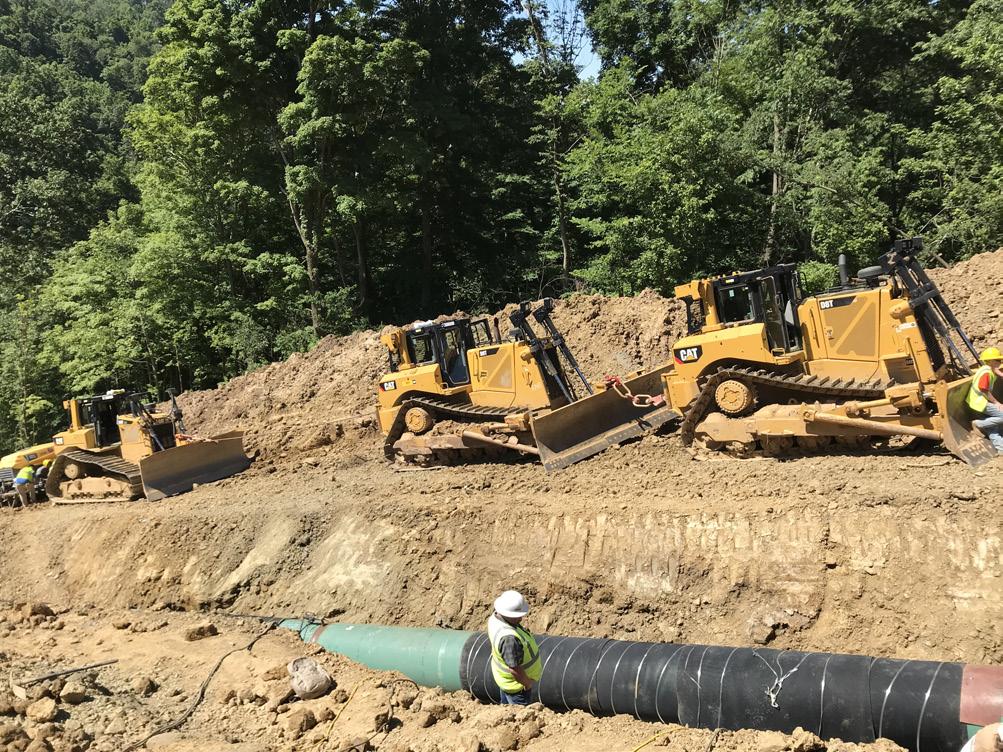
A plethora of new projects and proposals, from the Americas to Asia and other parts of the world, are being driven with demands for reliable access to natural gas, and others associated with calls for fewer emissions and other forms of relatively clean or inexpensive forms of energy.
Mike Dearing, Vice President of Sales – North America, PLM, commented on needs for performance engineered equipment with pipeline construction and infrastructure optimisation activities along all these fronts. “What’s driving the improvements includes a lot of what we are seeing in Canada, South America, even Europe right now,” Dearing said. “There are a lot of machines moving. Moving forward, we are seeing increased activity on the natural gas side in the US, as well as those looking at building (thousands of miles) CCUS lines.”
PLM was launched to help innovate and come up with new devices with relevance and exclusivity for the pipeline industry. They offer, for sale and lease, purpose-built equipment from excavators to pipelayers, sidebooms, and custom equipment, as well as custom pipeline machinery solutions, safety training, fleet management, product assistance, and more.
Dearing said PLM is about developing a reliable chain of on-purpose technologies that align 100% with needs. On the dozer-winch side, he provided an illustration of how closely his company is tied to engineering conversations, referencing Caterpillar’s factories, as well as PACCAR Winch, manufacturer of CARCO tractor winches.
Making connections
Dozers and winches are found commonly operating in conjunction with other pipeline machinery, and useful when stable speed

 Figure 2. D7 crawler dozer equipped with a CARCO PA110 tail winch for Caterpillar.
Figure 3. Caterpillar D8 dozers and CARCO PA140 winches as part of Ohio-based Precision Pipeline Services’ inventory.
Figure 2. D7 crawler dozer equipped with a CARCO PA110 tail winch for Caterpillar.
Figure 3. Caterpillar D8 dozers and CARCO PA140 winches as part of Ohio-based Precision Pipeline Services’ inventory.
40 World Pipelines / AUGUST 2023
Figure 4. D8 crawler dozers outfitted with CARCO PA140 tail winches for Caterpillar lead the way.
control of loads being transported on hillsides or lowered on uneven terrain is required.
A longstanding partnership in the crawler dozer-winch arena is what drives the Cat and PACCAR Winch connection, alongside their unique or custom configurations and optimisations of factory-installed tail winches. Dearing discussed the relevance of specific pipeline task-oriented applications by providing a close look at the capabilities of CARCO winch-equipped Cat D6 dozers. PLM has been gearing up in response to the popularity of those units, with multiple orders set to ship in 2Q23.
Many times, a single piece of equipment cannot provide the necessary force to perform a specific task. A dozer-winch combination that allows for sufficient power, traction, and stability, as well appropriate levels of speed and control, is imperative when machinery is working in unison to ensure an elevated level of safe operation, at the same time maximising operational capabilities.
Dearing pointed to various application types, noting the importance of engineered performance when configuring a dozer and winch for yo-yoing and the daisy chain, as just two examples, to demonstrate how they may be viewed as 100% indispensable.
In yo-yoing, the dozer operator uses the winch system to control the descent and ascent of a connected piece of equipment. This allows the operator to maintain a controlled pace, reducing the risk of accidents and improving overall safety during pipeline construction. This can also help minimise soil disturbance and erosion on steep slopes.
A daisy chain, Dearing pointed out, is another technique used to connect multiple dozers or other heavy equipment together in a series, typically using winch systems and cables. This configuration provides enhanced stability and control.



The lead dozer is anchored and then followed by dozers connected in a series, with each dozer’s winch system providing additional support and stability for the machines connected behind it. The ‘chain’ allows equipment to operate safely on steep terrain and helps get a larger line of equipment up a hill.
“When we have a big, steepslope project, we have a training







component that includes updating our customers on any product changes or enhancements,” Dearing said. “That is where we will get someone from winch companies to come out and go through the operation of their winch, and best practices, too.”
Winches
The CARCO PA85 for Caterpillar is an example of a variable speed planetary hydraulic tail winch factory installed and configured for the D6 and offering optimal all-around performance. The winch set-up allows for superior operator visibility, with electronic controls facilitating ease of control and better cab aesthetics.
The PA85 boasts up to 88 000 lb of maximum line pull and a line speed of up to 89 ft/min., based on the standard speed
configuration. These winches, installed at the Cat factory, have the advantage of PACCAR Winch’s patented load-holding braking assemblies – to provide exceptional controllability for applications that require precise load placement.
Reel-in and reel-out features, combined with fairlead rollers, facilitate smooth handling of winch loads and contribute to the overall productivity of dozers in various pipeline application scenarios. An advanced drive-away function, and incorporation of both dynamic braking and static braking, is available to ensure safe and efficient operation.
Dearing noted that the drive-away mechanism allows tractors to be easily repositioned for another pull, significantly improving the potential for flexibility and efficiency, as well as maximised productivity and a safety boost.
In terms of power and overall capability in relation to a factory installed option, the CARCO PA110 tail winch for Caterpillar – with exacting standards for compatibility in conjunction with D7 dozers – delivers a walloping 110 000 lb of line pull. At 265 hp (197 kW) and an operating weight of 65 644 lb (29 776 kg), the new high drive undercarriage D7 replaced the Cat D7E. It’s been hailed for ease of operation and increased performance, including a 4-speed transmission for optimal fuel and dozing efficiency.
These powerful tail winches and purpose-built dozers, working together, enable operators to manage the most demanding pipeline construction tasks with confidence and precision.
Cyclical work
It’s no secret that a part of the pipeline construction equation is the machinery itself – the exact pieces of equipment necessary to support the tasks such as advance site preparation, transporting and staging heavy equipment and large diameter materials, installing the pipe, site restoration and clean up, among a myriad of others.
Project work can be cyclical in oil and gas pipeline construction too, adding more layers of complexity. Dearing remarked on the importance of thinking through the dozer manufacturer, winch component maker, equipment dealer value chain, along with all pipeline machinery and support requirements before that initial run.
Dearing said that helps increase confidence in the process and overall level of buyer satisfaction as expectations can be managed and flexed to suit their needs. “Our customers may get a job and in six to eight months knock out 300 m (483 km) or 400 miles (643 km) of pipeline. Sometimes, it is right on to the next job. We also have machines that sometimes can sit for unfortunately extended periods of time. Those machines sometimes require more maintenance.”
“We realised one benefit with CARCO winches,” Dearing continued. “You can have them sit for extreme periods of time and start right back up without a hiccup. That’s a great benefit of working with PACCAR Winch.”
Spooling in
It’s been established that the way equipment is acquired, transported and maintained can have a significant impact on budget and project costs. How quickly and efficiently equipment
can be geared up, and strategically purposed for action, from the current build to the next, matters.
A series of initiative-taking and deliberate tasks are involved with procuring a piece of machinery, making sure it can be delivered to the right location and on schedule, maintained right, and in right working order.
A manufacturing leader may set their minds to helping a customer get ahead of the equipment dynamics, with respect to project budgets and timelines. The most active players tend to work together on helping reduce cost of equipment ownership via precision engineered performance, general periodic maintenance, and after-the-sale support.
At PLM, the focus is on minimising complexities associated with obtaining and maintaining the machines that will get the job done. Dearing also commented on the importance of developing confidence in a manufacturing partner, and their aptitude for not allowing any inevitable supply chain fluctuations to disrupt primary parts and equipment flows.
He acknowledged the ever-evolving challenges faced by pipeline construction professionals, noting PLM has invested in a broad range of technological features to help ensure high customer marks in relation to their equipment investment. It’s a pipeline specialist’s role to help size up needs for any given build – a sometimes enormous task.
“The industry has quite a specialty concentration of production lines,” Dearing said. “They tend to be highly nomadic, going from state to state, across the world, for that matter. At the end of the day, winch performance comes down to safety, smoothness and dependability. PACCAR Winch has been stable in terms of having parts available, going through the pandemic and forward. Also, being predominantly hydraulic-driven winches, with CARCO, it is a bit easier transition when you put an operator in the seat. It’s very smooth for us, in terms of capabilities.”
Dearing continued: “Even after a machine is out for personnel, our relationship with PACCAR Winch is crucial, they have always come to the plate and helped. From parts and literature for operations and familiarisation, everything we have requested from them, it has been a humongous partnership. With Cat, depending on the situation, having these factory installations means you don’t have to install it later.”
According to a report by Westwood with market insights on onshore oil and gas pipeline CAPEX, almost 310 000 km of new pipelines are forecast to be installed 2022 - 2028, translating into spending of US$369 billion. The market has shown signs of improvement, driven in part by higher commodity prices and a recognition from numerous markets that a diversification in supply is required.
“We are here for our customers’ needs,” said Dearing. “We only focus on one industry and, with only so many pipeline contractors, we try to be as much of a one-stop shop as we can be. We don’t succeed unless they do. So, we make sure we have the solutions for their needs.”
References
1. www.westwoodenergy.com/news/westwood-insight/westwood-insight-onshore-ogpipeline-capex-to-total-369-billion-2022-2028-as-world-cries-out-for-greater-supply
2. www.ibisworld.com/industry-statistics/market-size/oil-gas-pipeline-constructionunited-states
3. www.grandviewresearch.com/sector-report/earthmoving-equipment-industry-databook
42 World Pipelines / AUGUST 2023
Challenging design margins and benchmarking transient performance increases uptime and improves the OPEX of an asset, says Steve Hamilton, Chief Technical Authority, and Paul Wiseman, Flow Assurance Technical Authority, Xodus, UK.
The acceleration of the energy transition has brought an exciting shake-up to the oil and gas industry, with companies aiming to significantly reduce their carbon footprint as soon as possible to ensure compliance with government and regulatory bodies.

There is very little dispute about the emissions associated with the combustion of fossil fuels. However, there is much less consensus over the indirect emissions on the path from oil or gas production to final consumer, in particular the level of methane emissions that can occur – whether by accident or by design – along the way.
According to the IEA’s Methane Tracker Report, total indirect greenhouse gas (GHG) emissions from oil and gas operations today are around 5200 million t of carbon dioxide equivalent (t CO 2-eq), 15% of total energy sector GHG emissions. 1 Methane, a much more
powerful (though shorter-lived) GHG than CO 2, is the largest single component of these indirect emissions.
This carbon output came from a wide variety of sources along the oil and gas supply chain and, while some of these emissions are accidental, because of a faulty seal or leaking valve, for example, others are caused by routine operations often carried out for safety reasons or due to the design of the facility or equipment. The industry is expending significant effort in reducing the volumes of CO 2 and methane emissions from upstream operations. However, the emissions associated with pipeline operations and subsea tiebacks are often overlooked.
Reducing pipeline emissions
By necessity, Xodus includes design margins within their engineering plans to protect against the inevitable uncertainty due to the fluid composition,
43
water chemistry, delivery pressures and temperatures. Commonly, those design margins are carried through into the operating philosophies and procedures, and regularly go unchallenged even as an asset matures.
There are multiple benefits to be realised by challenging these design margins at key points post-start up, as the operation of the asset evolves. Potential gains include longer system survival times, a reduced instance of or reliance on depressurising for hydrate management, and simplified start up procedures – all of which have positive implications for system availability and OPEX, as well as causing a reduction in emissions related to flaring gas from these operations.
The application of design margins
As we design a pipeline system, we inevitably build in design margins to assist with the inevitable uncertainties of the upstream industry. Some of the more common flow assurance related design margins include:
) Using a hydrate dissociation curve instead of formation curve.
) Adding a 2 or 3°C margin to the hydrate curve to allow for fluid uncertainty.
) Operability assessments based on extreme minimum ambient seabed temperatures.
) Assuming water rates are based on saturation at bottom hole conditions.
) Adding a percentage uncertainty to expected formation water volumes.
) Assuming zero salinity associated with formation water.
Commonly, some or all of these margins are added together, which can result in a conservatively designed
system which meets operability requirements such as system survival time specifications during operation. Survival time is the time available to an operator to react to a shutdown, prior to deciding on whether to restart or initiate a hydrate management protocol such as depressurising the pipeline system. Xodus’ recommendation is that a margins philosophy is developed during design to ensure that a fitfor-purpose approach to operability is adopted, and that over-design risk is minimised.
An example of the reduction in one key design margin, using a minimum ambient seabed temperature of 6°C instead of the extreme minimum seabed ambient temperature of 4°C is illustrated in Figure 1.
Figure 1 demonstrates not only a reduction in emissions from both minimising the need to depressurise (blowdown) the system and from simplified restart requirement, but additional potential benefits in system uptime and CAPEX expenditure.

What is the scale of the issue?
The safe management of a pipeline system involves the development of a robust hydrate management philosophy to ensure that the system can be restarted as quickly and efficiently as possible following a planned or unplanned shutdown. These hydrate management philosophies often focus on a need to depressurise a pipeline system to avoid hydrate formation following shutdown, leading to a potential for blockage on restart.
Although pipeline operations only account for a small percentage of the overall gaseous emissions from an operating asset, the volumes of CO 2 generated from a typical subsea tieback are significant. In general, a single depressurisation operation of a pipeline will result in the flaring of several hundred tonnes of CO 2 . Longer pipelines, larger diameter pipelines, and higher gas/oil ratio fluids are likely to result in higher flaring requirements. Figure 2 shows the CO 2 volumes from the flaring associated with the depressurisation of ‘Field 1’ for hydrate management.
44 World Pipelines / AUGUST 2023
Figure 1. Example of margins review findings (North Sea field).


QUALITY RELIABILITY FLEXIBILITY SALES RENTAL L AYING BENDING WELDING STRENGTH, PERFORMANCE & RELIABILITY UNDER ALL CIRCUMSTANCES . MAATS PIPELINE PROFESSIONALS P.O. Box 165 | 7470 AD Goor the Netherlands T + 31 547 260 000 F + 31 547 261 000 E info@maats.com CO2 neutral rental STAAMmoc. MAATS.com your equipment partner since 1981 QUALITY RELIABILITY FLEXIBILITY T F E MAATS PIPELINE PROFESSIONALS P.O. Box 165 | 7470 AD Goor the Netherlands + 31 547 260 000 + 31 547 261 000 info@maats.com SALES RENTAL
Additionally, starting up from a depressurised system can lead to complex restart requirements taking many hours or even days, during which, production may have to be flared, potentially resulting in several hundred more tonnes of CO 2 being released into the atmosphere. Recent experience in the review of operating procedures noted the following emissions associated with the depressurisation of pipeline systems for hydrate management.


How can we improve the emissions associated with pipeline operations?
Instead of carrying onerous design margins through the operating phase of an asset, the environmental and operating performance of an asset can often be improved by challenging the basis used during design and the methodology used to develop the operating procedures.
This can be achieved by a simple benchmarking exercise of the operability using the design phase flow assurance models of the subsea system updated with ‘as-built’ information and actual production data. Once the post-start up production chemistry is included, significant operability benefits can be realised for minimal or zero increased risk.
Analysing the production fluid composition and produced water chemistry can allow a more accurate hydrate curve to be developed, and a reduction in any associated design margin. Assessment of water salinity can further improve the hydrate risk.
A revised hydrate curve and confirmation of operating conditions can result in improved cooldown performance and extended survival
Figure 3. Hydrate risk determination of an example field based on design stage analysis.
46 World Pipelines / AUGUST 2023
Figure 2. Early field life depressurisation of a 50 km 12 in. pipeline system.
times, giving the operations team more time to restart without the need to depressurise the pipeline. This results in significantly reduced emissions and improved overall availability of the system.




As the asset ages, lower reservoir pressures or warmer operation associated with higher water cuts can further improve the transient performance of the system. This can either be incorporated based on the benchmarked performance, or systematically reviewed as the operating parameters change through time. In some cases, this analysis can identify the point in the design life where the need for depressurisation to manage hydrate risk can be removed entirely.
Through the revision of the margins philosophy and the application for the Field 1 example in Table 1, it can be demonstrated that depressurisation was not required to manage hydrate risk, subsequently removing those CO 2 emissions completely. Looking at the impact of that decision over the life of the field, it is estimated that the total saving in CO 2 is of the order of 45 000 t of CO 2 Using a cost of carbon of £85/t, this equates to a saving of £3.8 million over the life of the field. There are additional carbon savings associated with a simplified restart of the pipeline, as well as a positive impact on system uptime through the field life.
Another example of emissions reduction was a recent operability review several years into the operation of a
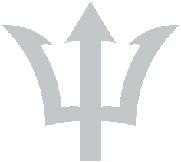
Table 1. Expected volumes of CO 2 from depressurisation of a range of subsea tiebacks
North Sea field which recommended a revision in the restart procedure. In this example, the pipeline was started up to the MP separator as opposed to the LP separator, as the change in pipeline operating conditions through time allowed a relaxation of the hydrate management philosophy. This simple revision resulted in a saving of circa 45 t of CO 2 emissions for every low pressure start-up.
A worked example
To illustrate this, an example case is shown in Figure 3 based on field data from a typical North Sea development (10 km tieback, 10 in. NB wet insulated pipeline, 50% water cut, gas-to-oil ratio 180 ft 2 /stb).
In Figure 3, typical design conservatisms lead to depressurisation of the subsea system after a 4 hr shutdown to avoid condensed water within gas-dominated sections of the pipeline cooling to within a 3°C margin of
Pipeline length (km) Pipeline diameter (in.) CO2 released per depressurisation operation (t) Field 1 50 12 900 Field 2 25 10 240 Field 3 33 15 525 TRIDENT SMART GAUGE SYSTEMS SMART Gauge Range • Single-Hit • Multi-Hit Non Measuring • Multi-Hit Full Measuring • Through Wall Communication TRIDENT - The Future of Pig Tracking www.piggingsmarter.com
the flashed gas hydrate curve. This also bases the cooldown rate and depressurisation requirements on a typically utilised subsea ambient temperature assumption of 4°C.
The above hydrate mitigation strategy safely avoids all risk of hydrate formation when shutting in the example system. However, by utilising operational data acquired from production of this field, a more realistic subsea ambient temperature based on seasonal variation is 7 - 12°C. Combining this with the increased confidence in fluid pressure, volume and temperature data, and removal of conservatisms by utilising the factors described here, allows for a reduced aversion to hydrate formation risk. The hydrate mitigation strategy for this example system can therefore be revisited as per Figure 4.
As can be seen from the outlined strategy in Figure 4, the no-touch time before depressurisation can now be increased from 4 hr to a minimum of 24 hr, with potential for depressurisation not being required at all during warmer seasons.

In addition to this, the increased appetite for risk allows for a significantly reduced depressurisation operation when this is required. In the design stage, depressurisation was required from 31 - 7 bara to avoid entering hydrate risk conditions, whereas the revisited strategy only depressurises this to 23 bara. As well as significantly shortening the duration of the depressurisation operation (and potentially removing the requirement for this at all) this has resulted
in a predicted reduction of CO 2 equivalent emissions from 23.6 t to 0 - 10.8 t per shutdown. That is a reduction of 54 - 100% in CO 2 emissions.
Conclusion
The energy transition has brought a new challenge to the oil and gas industry. Companies are aiming to significantly reduce their emissions footprint quickly and effectively in order to achieve net-zero by 2050, reduce investment risk, and ensure compliance with shareholder ambitions as well as government and regulatory bodies.
We can see from the examples summarised previously that, by challenging design margins and benchmarking transient performance, we can not only increase uptime and improve the OPEX of an asset, but also reduce the emissions occurring from pipeline operations. The example given states a saving of 1500 t per shutdown operation, resulting in life of field savings of over £3 million. Realistically, that estimate is conservative since the cost of carbon is likely to increase to £150 - 200/t or higher by 2030. This would put equivalent savings in the region of £6 - 9 million over the life of a field.
References
1. www.iea.org/reports/methane-tracker-2020/methane-from-oil-gas
2. www.iea.org/reports/flaring-emissions
3. doi.org/10.1016/j.petsci.2022.09.025
48 World Pipelines / AUGUST 2023
Figure 4. Hydrate risk determination of an example field based on benchmarked field data.
Welcome to the contractors' focus: providing information about the capabilities of oil and gas pipeline engineering contractors. Each company also details recent pipeline projects, contract wins and pipeline construction activity of note.
SCAN ME SCAN ME The
Coating on the Market
The Best Liquid Epoxy Solutions For Pipelines
Toughest HDD
HBE
- The Best Performing Field Joint Coating
contractors’ focus
ONSHORE PIPELINES - OFFSHORE PIPELINES - TURNKEY CONSTRUCTION - HORIZONTAL DIRECTIONAL DRILLING - COMPRESSOR STATIONS - WELDINGSTATIONS - WELDING - FINANCE, STRATEGY & ANALYSIS - FEASIBILITY STUDIES - TERMINALS - RESEARCH & DEVELOPMENT - MAINTENANCE - REHAB
WORLD LEADERS IN PADDING TECHNOLOGY









XROK GRANITE 400 DOUBLE SCREEN DECK




Over the last seven years Xrok Granite 400 pipe padding machines worked on many of major and some of the most challenging pipeline projects around the world. Having gained invaluable working experience in the eld plus listening to valuable customer feedback our design team have made cutting edge improvements and upgrades to the current model with some innovative advances to further improve production, versatility and reliability. Some of the major advancements are to the screen box which is the heart of a padding machine, our new improved stepped double deck technology greatly improves both e ciency and performance putting the Granite 400 into a class of its own. Whether deployed to the driest of deserts or to the wettest and harshest environments in the World, the new improved Xrok Granite 400's superior performance will outperform and pad more pipe per day than any other machine currently on the market which equals a huge cost saving to the customer. xrok.com

Delta Machinery is the sole distributor for Xrok Voltstraat 19, 5753 RL Deurne, the Netherlands • T: +31 (0) 888 966 966 • sales@deltamachinery.nl deltamachinery.nl
At Cappline, we understand the importance of efficiency, productivity, and environmental responsibility in the pipeline industry. That's why we have developed the revolutionary CAPP-Crawler, a state-of-the-art welding equipment carrier that combines advanced technology with a commitment to sustainability.
One of the key features of the CAPP-Crawler carrier is its zero-emission design. Traditional welding equipment often relies on fossil fuels, contributing to air pollution and carbon emissions. In contrast, our CAPP-Crawler is battery powered, significantly reducing cost and its environmental footprint.
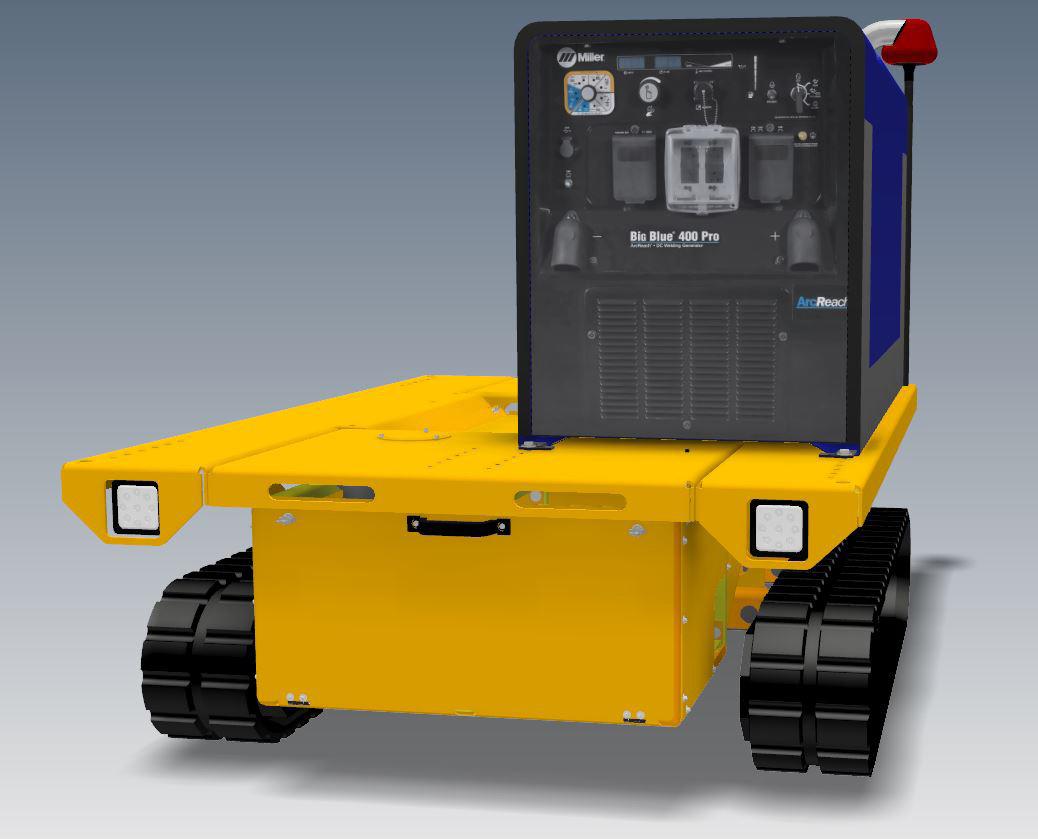
With this innovative solution, we are proud to lead the way in promoting eco-friendly practices in the welding industry.
The CAPP-Crawler is more than just an environmentally conscious choice; it is also a versatile and efficient tool for pipeline welding. Designed with the needs of welders in mind, this state-of-the-art equipment carrier offers exceptional mobility and maneuverability, enabling seamless navigation through challenging terrains and tight spaces. Its rugged construction ensures durability and reliability, even in the harshest working conditions.
Customer satisfaction is at the core of our business philosophy. When you choose Cappline, you can expect exceptional service, timely delivery, and ongoing support throughout your project. Our experienced technicians are always ready to assist you, ensuring that your welding equipment operates at its peak performance, minimising downtime and maximising your project's success.
Cappline B.V. is a new innovating company specialising in welding solutions/equipment for a wide range of industries. With our extensive expertise and commitment to excellence, we have established ourselves as a trusted partner for companies worldwide in a very short time. Our mission is to provide innovative, reliable, and efficient welding solutions that meet the unique needs of our clients.
One of our core strengths is our ability to provide comprehensive welding solutions across a wide range of applications. Whether it's the construction of pipelines, fabrication of steel structures, or maintenance and repair work. We stay up-to-date with the latest advancements in welding technology to ensure that we deliver the most efficient and cost-effective solutions to our clients.
At Cappline B.V., we prioritise safety and adhere to stringent safety protocols in all our operations. We understand the importance of maintaining a safe working
environment, not only for our personnel but also for our clients and the communities we serve.
We pride ourselves on our ability to provide customised solutions that meet the unique requirements of each client. Our team works closely with our clients to understand their specific needs, project goals, and budget constraints. This collaborative approach enables us to tailor our services to deliver the best outcomes, ensuring client satisfaction at every stage of the project.

Moreover, Cappline B.V. is committed to sustainability and environmental responsibility. We actively seek eco-friendly practices and technologies that reduce our impact on the environment. By adopting sustainable welding processes and promoting the use of energy-efficient equipment, we strive to contribute to a greener future.
Choose Cappline B.V. as your welding partner/ supplier and experience the difference our expertise and commitment can make to your projects. Contact us today to discuss your welding requirements, and let us provide you with customised solutions that drive your success. Together, let's build a future of innovation and excellence in welding solutions
contractors’ FOCUS 2023 49 cappline B.V.
State-of-the-art equipment carrier.
Cappline B.V. offices.
Ledcor Pipeline is one of Canada’s premier pipeline construction and maintenance contractors. For more than 50 years, we have executed pipeline projects ranging from 2 - 60 in. in diameter while maintaining some of the largest pipeline networks in Canada. With a robust team of experienced personnel and a modern equipment fleet, Ledcor has the capacity to execute multiple mainline construction spreads simultaneously. We also provide qualified inside plant construction, handling above and underground piping in and around oilsands related mines, SAGD operations and upgrader facilities.
Ledcor operates in a variety of geographic terrains ranging from prairies to mountains, blastrock to muskegs, all while executing work in Canada’s diverse seasons and extreme temperatures. Founded in 1947, the Ledcor Group of companies offers more than 75 years of diversified experience that has allowed us to become one of North America’s largest and most successful construction companies.
One of Ledcor’s current oil and gas pipeline projects is the Coastal GasLink (CGL) Project, a 670 km (416 mile) 48 in. (48 NPS) dia. natural gas pipeline from Groundbirch, BC, to Kitimat, BC. The Ledcor-Haisla Limited Partnership (LHLP) is constructing Spread 8 West of CGL, a technically challenging section requiring the installation of 55 km (34 miles) of pipeline and associated assemblies with a varied elevation of 1440 m (4724 ft) throughout. Unique challenges of this project include the installation of two steep slopes using Cable Crane systems, one of which is more than 1.5 km (0.9 miles) in length; as well as the installation of pipe through a mountain slope face using raised bore and drift tunnel mining methodology.


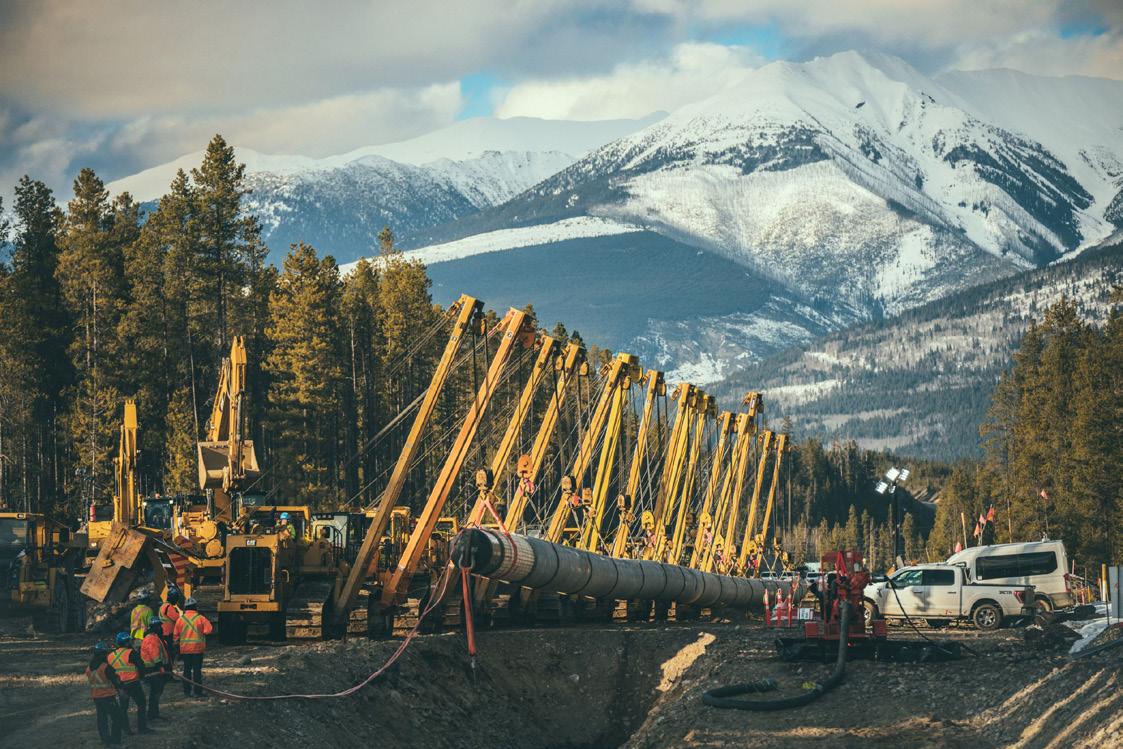
The Ledcor Sicim Limited Partnership is constructing Spreads 3 and 4A of the Trans Mountain Expansion Project. This 201 km (125 mile) stretch of pipeline is built parallel to the existing pipeline and other infrastructure including highways, railroads and powerlines. The work scope includes steep sloped sections, a narrow working footprint that limits construction space, more than 500 water course crossings and 63 bridge installations to safely install the pipeline.

contractors’ FOCUS 2023 50 Ledcor Pipeline
Ledcor laying pipe for the Trans Mountain Expansion Project, Spreads 3 and 4A, near Valemount, B.C.
Ledcor on the Trans Mountain Expansion Project in Canoe River, B.C.
Ledcor laying pipe for Spread 8 West of the Coastal CasLink Project.
A water crossing constructed for Section 8 West of the Coastal GasLink Project. Fish, amphibians and other wildlife were safely relocated upstream away from construction activities.
Lincoln Electric is the world leader in the engineering, design, and manufacturing of advanced arc welding solutions, automated joining, assembly and cutting systems, plasma and oxy-fuel cutting equipment, and has a leading global position in brazing and soldering alloys.
We are recognised as The Welding Experts® for our leading materials science, software development, automation engineering, and application expertise, which advance customers’ fabrication capabilities to help them build a better world. Headquartered in Cleveland, Ohio, we operate 71 manufacturing locations in 20 countries and serve customers in over 160 countries.


The pipeline space is especially important to Lincoln Electric. We’ve been providing products and solutions for more than 100 years that have been used all over the world in every type of environment. Our Pipeliner® family of products is especially designed for the most demanding pipeline welding. Our customers have come to depend on our equipment and consumable technologies as well as our technical expertise to get the job done safely and on time.
In North America, Lincoln Electric is involved with various projects including Matterhorn in Texas, USA and Coastal Gas Link in B.C., Canada where we are providing various equipment and electrodes such as the Frontier® 400X Pipe engine drives, Pipeliner LH-D low hydrogen downhill electrodes, FCAW-G wires, FCAW-S Innershield® wires, and cellulosic electrodes.
In South America, Lincoln Electric is involved with various projects including the Nestor Kirchner pipeline in Argentina. These projects use equipment such as the Dual Maverick® and Vantage® engine drives as well as several consumables including pipeliner cellulosic and self-shielded Innershield electrodes, as well as advanced technologies such as the new Field STT to increase root pass productivity
In Asia, Lincoln Electric works with numerous contractors in a number of countries providing solid wire for mainline welding, cellulosic, and Innershield electrodes.
contractors’ FOCUS 2023 51
lincoln Electric
Pipeline contractor uses STT® weld process to put in a root pass.
Lincoln Electric’s APEX® Orbital system welding with Pipeliner® FCAW-G wire.
Michels is a diversified energy and infrastructure contractor providing comprehensive services in North America, Australia and Europe. Michels has capabilities to handle transmission and distribution pipeline construction, horizontal directional drilling (HDD), station construction, fabrication, hydrostatic testing, pipeline rehabilitation, maintenance and integrity repairs, plant and facilities construction, and dewatering. By combining our collective strengths, we can assemble the ideas, people, and resources necessary to complete turnkey projects of all sizes and in all locations, including offshore wind landfalls and shore approaches.
As a privately-owned company, our senior management team is easily accessible to operations at all times. As a result, decisions can be made swiftly, and profits are reinvested into the business. We believe that self-performing the work results in safer construction and a higher quality, more consistent end-product.
Michels maintains more than 17 000 state-ofthe-art, company-owned equipment, including specialised pieces designed and fabricated internally, which guarantees the right equipment will always be available for any project. Our extensive resources allow us to devote appropriate staff and equipment to projects of all sizes and scopes. Our in-house equipment team uses experience and innovation to precisely develop the right tooling for each project’s unique needs. Our extensive support system provides our management and field teams assistance with safety, and environmental and quality control resources. Our top-down safety culture is backed by the Michels family, which owns and operates Michels and Michels Canada.
Michels Canada built 21 km of 42 in. natural gas pipeline on the Rocky View section of the Western Alberta System Mainline Loop (WASML). The project used mainly conventional pipeline construction techniques, with the pipe placed 1.2 m below grade in an urban area. Two sections were completed by HDD. One 649 m crossing under the planned Springbank Reservoir was about 32 m below grade and 17.5 m below the bottom of the proposed reservoir channel. The second 1039 m crossing under the Bow River was about 51 m beneath the river bottom.
Michels Pipeline, Inc. was contracted to construct a brownfield compressor station as part of the ANR Horsepower Replacement Project. Work included construction of 298 piles, structural foundations, three preengineered metal buildings, installation of two Taurus 70 turbines (22 200 hp), gas and auxiliary piping systems, equipment, tanks, and a full electrical and control system. Project scope also included decommissioning and razing of the previous facilities. The project is located on a 1.5 acre site; about a quarter size of a typical compressor station. When work started, the groundwater level was 2 ft below the surface. After Michels Construction, Inc. installed 18 high-capacity wells, groundwater level temporarily lowered to 16 ft, allowing crews to safely work onsite. The project increased operational flexibility of the pipeline and reduced emissions with the horsepower replacements.


contractors’ FOCUS 2023 52
Michels
Michels built an electric-driving compressor station on 20 acres in a 47 acre former quarry in New Jersey, USA.
Michels built 134 miles of 42 in. pipeline in Louisiana, USA.
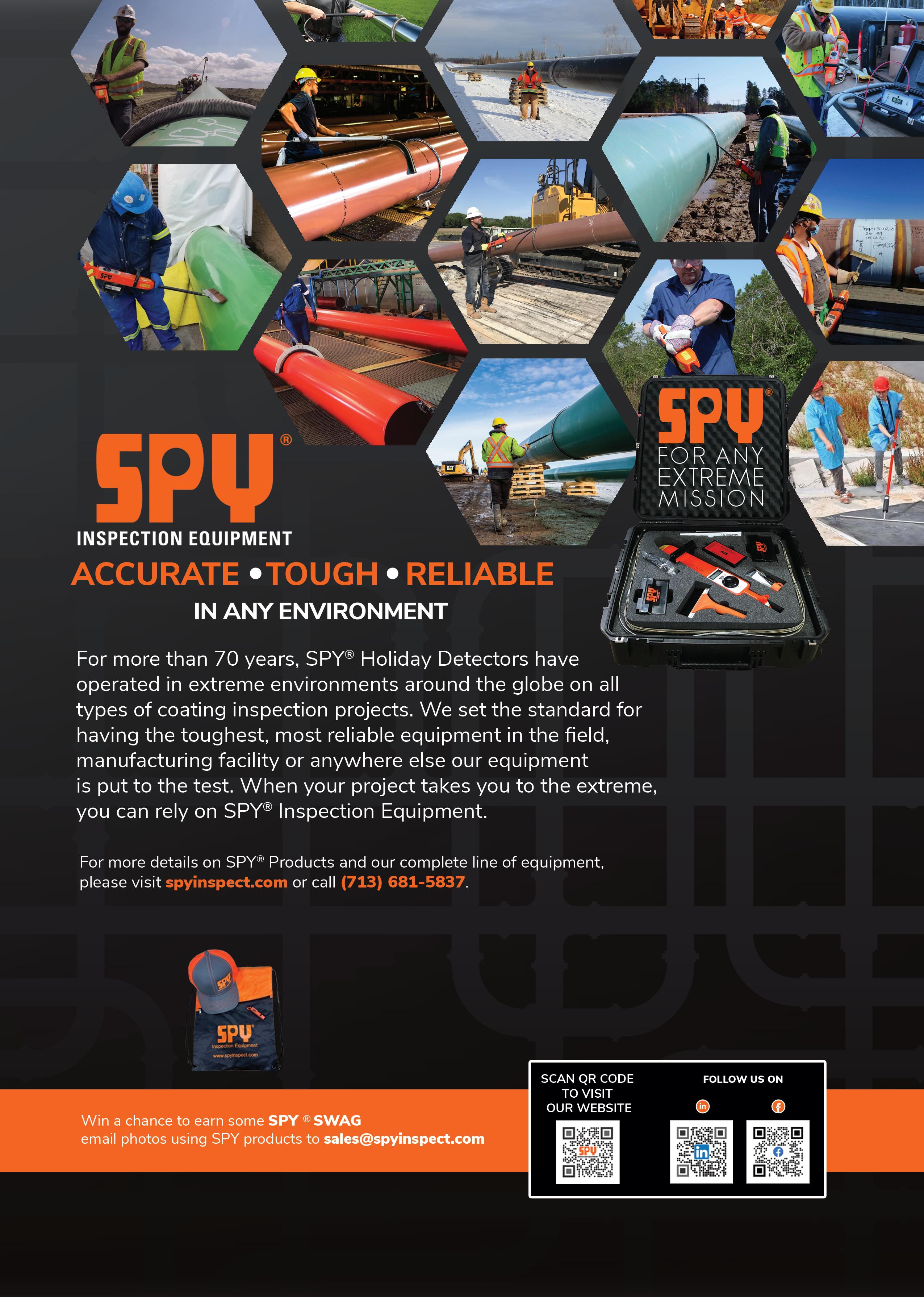
MontiPower (MONTI - Werkzeuge GmbH) is a Germany-based company from Hennef, near Cologne, with three offices in the USA, Brazil, Slovakia and the Netherlands for R&D and Sales. The company is known for the Bristle Blaster® suite of products that offer a unique surface preparation solution when a blastquality finish is required, but loose abrasive blasting is not feasible, economical, or is prohibited.
Bristle blasting enables the contractor to remove existing liquid curing coatings or layers of PE/PP, corrosion and mill scale while simultaneously generating an anchor profile with a power hand tool. The tool is a combination of a wire bristle ‘belt’ dynamically tuned to a drive unit and is designed to allow the bristle tips to strike the corroded surface with the same kinetic energy as blast media. Tools are available in both electric and pneumatic models as well as our new cordless version.

The new Bristle Blaster Cordless can deliver a level of surface preparation on par with loose abrasive blasting. Features include a non-locking safety switch, anti-vibration handle and rope access connection. The optional Dust Collection Shroud features a closed protective cap with a transparent and quickly removable side panel for bristle belt change. The shroud can be connected to a portable, battery-powered backpack vacuum. Batteries and charges are part of the cordless alliance system called CAS, allowing for combination with different machines and manufactures.
Users will experience about 25 minutes of surface preparation time from an 8Ah/18v battery. For increased production, the Bristle Blaster Double Electric can treat up to 3 m2/hr per operator. The Bristle Blaster Double Electric employs two 23 mm bristle belts simultaneously and can be used on open surfaces for grit blast equivalent surface preparation. The Bristle Blaster Double Electric also features a nonlocking safety switch, vibration-controlled handle and rope access connection. The Bristle Blaster has been deployed extensively on pipelines, refineries, bridge refurbishment, marine fabrication and repair, and other industrial construction and maintenance applications. Corroded/pitted steel surfaces can be restored to a near-white metal appearance and an anchor profile of 2.6 - 3.3 mil is routinely obtained on standard API 5L steel. The Bristle Blaster Double Electric also features a non-locking safety switch, vibration controlled handle and rope access connection, and has been deployed extensively on pipelines for coating repairs, reinforcements, cat welds, field joint coating and rehabilitation midstream, upstream, subsea and downstream.
The Bristle Blaster requires just one person to operate, and cuts preparatory and clean-up times down to just a third of that required for a conventional grit blasting operation of a difficult-to-coat pipeline object.

contractors’ FOCUS 2023 54
MONTI
Bristle Blaster® Cordless with the protective hood and suction outlet.
MONTI Bristle Blaster.
Expect A Higher Standard

Seal For Life Industries Group boasts a wide range of brands offering coating and sealing solutions to infrastructure markets. With a history of more than 60 years, over 750 employees, more than 250 patents and formulations and customers in over 90 countries, Seal for Life is has a wealth of experience to offer its customers.
Our superior coating technologies are supported by continuous product development at world-class R&D facilities, advanced manufacturing facilities and rigorous quality control.
Across the globe, our products are approved, specified and deployed with a focus on corrosion prevention, fire and temperature protection for extreme conditions and critical infrastructure with a high cost of failure. We work across multiple industry sectors including pipeline, oil, gas, water, infrastructure and industrial applications.
Harouge Oil Operation company are the joint venture operator on behalf of Libyan’s National Oil Corporation since 1955. They operate three main pipelines; the Ras Lanuf oil terminal and five oilfields. Harouge have had to replace 80 km of 36 in. AmalRas Lanuf pipeline in Libya because of damage on the existing line due to age, and the unrest the country has seen over the years. The project has been awarded to CPPE company and subcontracted to PSI company in Tunisia for pipeline welding and coating.
Harouge required a three-layer cold apply tape system (Polyken) as the anti-corrosion solution for the entire pipeline. They requested a fully automatic machine able to apply the coating system (surface preparation, primer, inner and outerwrap application) in one go. Our BDM teams’ goal was to provide a total solution from product to application.
With the machine secured, the next challenge was in having the crew trained, this was done out of country and once complete the machine was disassembled, shipped and reassembled at site. With material and equipment onsite, this project is underway. A great outcome for our client, going beyond the purchase order to a total solution outcome.
Powercrete DD has been the ARO utilised by Mahangar Gas Limited on the HDD gas pipeline project. The 8 in. OD pipeline required a product that could withstand the extremely aggressive soil and boring conditions the pipeline would be subjected to. Thanks to the outstanding impact, abrasion and gouge resistance Powercrete DD offers, the project has been a success.
A crude pipeline project in British Columbia, Canada, has been utilising two Canusa-CPS technologies: HBE 95 BG and HBE FLX. The critical infrastructure was built as a fast-paced project requiring optimal corrosion protection. Canusa HBE products were selected to meet the stringent performance criteria.

Last summer the UAE experienced the wettest July since 1978, resulting in terrible flash floods across Fujairah, Sharjah and Ras Ak Khaimah; the Emirate of Fujairah was one of the most impacted, receiving the highest rainfall. Damage was caused to homes, roads and infrastructure, including major pipelines across the Emirate. One Friday night, STOPAQ Middle East (SME) was contacted by a major gas operator advising of a washout on their gas pipelines. Within 12 hours of notification, supplies of STOPAQ material were mobilised with support from a local sub-distributor, M/S Delta International.
The gas operator, with guidance from the STOPAQ teams, was then able to use STOPAQ WrappingBand to rehabilitate the pipelines’ damaged coatings, so urgently needed to minimise any further disruption during this challenging time. Our goal as always is to protect, maintain and improve critical infrastructure for our customers.

contractors’ FOCUS 2023 56
seal
for life
CANUSA HBE products providing protection in Canada.
Mahangar Gas Limited utilising Powercrete DD for its HDD project.
INTERNATIONAL PIPELINE & PIPE MILL SEMINARS


See the latest innovations. Collaborate with industry professionals.
Lincoln Electric Global HQ
November 7th - 9th, 2023
Cleveland, OH USA
Scan to learn more about Seminar Registration

The corporate group Vietz consists of the enterprise Vietz GmbH Hannover, Vietz Schweißtechnik GmbH in Leipzig as well as the VIETZ LLC in the US since 2019. With more than 45 years of experience in construction sites, we are your first contact when it comes to producing machines and equipment for pipeline constructions.
VIETZ supplies construction companies which lay gas, water or oil pipelines on land or under water. Additionally, municipal pipeline construction is an integral part for us. We manufacture trend-setting welding technology, pipeline bending machines, vacuum pipe lifting devices, pipeline testing technologies, HDPE crawler machines and much more related to the field.
Our product line VFT Series was developed for the effective and safe welding of large format PE-pipes. Inside the ROPS-certified cabin there is a butt welding machine which can be adapted to a wide range of pipe diameters by using inserts and which naturally also includes a hydraulically driven facer in addition to the heater and slides. The machine operator not only performs the welding, but also controls the vehicle and its functional groups.
The front boom allows the pipe to be picked up from the ground, pulled into the cabin, aligned and positioned. The welded connection leaves the cabin via the rear boom and is deposited on the ground. For optimum alignment during welding preparation, the pipe end can also be mechanically positioned here.


This year, we are pleased to welcome our new

contractors’ FOCUS 2023 58 vietz
VFT630.
Operator inside VFT cabin.
VFT900 in operation in West Texas, pipe spec: 36 in. SDR9.
hen cyber-attackers famously hit the Colonial Pipeline a little over two years ago, the aftermath was swift. Not only did the pipeline have to shut down for five days, which led to a steep increase in gas prices as well as consistent shortages, but it sent the industry as a whole into a spiral.1 To this day, there’s plenty of uncertainty on the best way to manage data and protect systems against would-be hackers.
Meanwhile, many oil and gas companies build convoluted and expensive in-house systems to manage their pipeline operations. In addition to being a huge drain on resources, internal systems can be error-prone, as the exhaustive amount of data can be difficult to manage, and are often unable to keep up with rapidly changing rules and regulations.
The best way to protect your data and operations – both from a financial and security standpoint – is with commercial pipeline management software from a trusted third-party vendor. Let’s take a look at three of the biggest challenges facing the broader industry right now, and how software can alleviate these concerns and even generate additional return on investment.
Cybersecurity and ransomware threat
With the Colonial Pipeline attack still fresh in the back of their minds, pipeline operators are especially concerned on how to beef up security and protect against the growing ransomware threat.2 It’s crucial to ensure your organisation has the correct security protocols in place to help respond to an event, should it ever become necessary. That’s where

59
Stacey Hensley, Group Product Manager, Quorum Software, USA, outlines three ways cloud-based software protects your pipeline operations.
third-party, cloud- based software comes in handy. By working with a trusted vendor, operators have access to their response teams to work through responding to a cyber event. It’s also important to look for industry certifications to make sure your data is safe – for example, SOC is an industry compliance standard that confirms there are no vulnerabilities in the code, providing much-needed peace of mind.
Many companies are struggling to keep up with the increased flurry of cybersecurity regulation, especially those who rely on home-grown systems located onsite. To remain in compliance with new standards, these organisations need specialised cybersecurity knowledge and have to use significant resources to constantly change and re-test data. Using a trusted vendor to store backups of your data in cloud-based, third-party software that is constantly up-to-date is the best way to navigate.
From a security standpoint, the biggest benefit of external software is having this vendor store backups of your data. Ransomware attackers are generally after your organisation’s data to either demand a ransom or sell it to other parties, and those who are successful often fail to return or restore stolen data. Using a trusted software vendor that stores your data in the cloud and consistently backs it up can help your business get back up and running quickly following an event, avoiding costly downtime like in the Colonial Pipeline incident.
Price volatility
Price volatility in the oil and gas sector was a key issue in 2022, and Deloitte predicts it will continue in 2023.3 When transporting natural gas, pipeline operators need to make sure volumes and invoicing are correct or they risk facing major financial repercussions. For example, as prices swing, companies can see huge gains or losses if the inventory is inaccurate, and are bound by rules and regulations to ensure accurate measurements.
Companies who use a home-grown pipeline operations system spend lots of money to maintain the code and also lack the trusted strategic support of a veteran industry partner. Aside from being a drain on resources, these systems can struggle to maintain consistency across large pipeline workflows. In fact – though not as common as the wider oil and gas industry – some companies still manage complex allocations and invoicing in Excel, which is bound to have a whole host of accuracy and version control issues. With price volatility such a concern for pipeline operators, ensuring total accuracy is crucial. Third-party commercial pipeline operations software can approach 100% accuracy, allowing users to monitor, validate and report volumes easily with the touch of a button. Though these concerns are likely to continue throughout the year, ensuring total accuracy of your calculations is a great way to limit surprise costs and price swings.
Rapidly changing rules and regulations
For pipeline operators, a key goal of the ongoing energy transition is to turn gas into CO2 pipelines. However, there are still plenty of unknowns from a regulatory standpoint, especially in the US. Companies are unsure what they need
to report (such as emissions data), how often to report, and how to remain compliant with rules that seem to change on a daily basis. Not only can software help navigate the energy transition, it can help save time and money along the way.
Here, it’s important to work with a trusted vendor with strong back-end reporting capabilities. Your software contains all your operations data, and a robust reporting tool helps companies respond much quicker to incoming inquiries or new regulations from ruling bodies. Companies that use homegrown software to manage operations have to build up this reporting engine from scratch to manage new rules, further draining resources and risking errors that could be detrimental down the line.
One of the reasons DTE Energy chose Quorum to embark on its digital transformation journey for pipeline management was the always-on reporting feature. As they discovered quickly, auditors often want data within a short timeframe, and having access to Quorum’s dashboards made it a breeze to respond to incoming inquiries.4
It’s also important to note that states often change what they want reported, so having a dynamic reporting function is key. Cloud-based software often has this capability built in, avoiding the need to manually adjust your system. This capability further helps companies avoid flaring penalties, which is especially important as post-pandemic oil production increases.5
Summary
For some of the top issues facing pipeline operators today –from price volatility to cybersecurity and the energy transition – it’s worth taking the time to find a trusted, third-party vendor who can supplement data capabilities and offer their noted expertise.
Managing internal pipeline operations can be clunky and a huge drain on resources, while third-party vendors actually help tailor the software to the specific needs of your business, as opposed to a one-size-fits-all approach. For example, My Quorum Pipeline software is built based on feedback from our large and diverse user community to support the needs of the industry to help operators improve regulatory compliance, security and business processes aiding functionality.
Over the coming decade, more and more companies will need commercial software to manage pipelines, especially in the post-COVID-19 world. In addition to supporting the trend of working remotely, software tightens the knowledge gap by providing business continuity as our current workforce evolves. Those who get ahead of this trend are better positioned to reap the financial rewards, improve internal auditability and help move the industry forward.
References
1. securityintelligence.com/articles/cybersecurity-policy-changed-sincecolonial-pipeline-attack
2. www.techtarget.com/searchsecurity/feature/Ransomware-trends-statisticsand-facts
3. financialpost.com/commodities/energy/oil-gas/oil-gas-price-volatility-2023producers-shareholder-returns
4. resources.quorumsoftware.com/transportation-storage/dte-s-customerjourney-to-the-cloud-and-digital-transformation#main-content
5. www.iea.org/reports/flaring-emissions
60 World Pipelines / AUGUST 2023
Global solutions for today and tomorrow

The need for safe, reliable energy delivery solutions reaches around the world. Michels builds conventional and trenchless utility lines in North America, Australia and Europe. Our international energy and energy transition services are performed and managed by in-country project management and field crews supported by the Michels Family of Companies. Regardless of a job site’s address, our people uphold our unified Core Values and Safety Culture.

Michels.us
United States • Canada • Australia • Germany EOE/AA/M/F/D/V
A MAJOR TESMEC BIG GIANT in the excavation industry: 1875 EVO
The 1875 is the largest machine Tesmec Group has ever produced, designed to face the most challenging excavation projects.
Thanks to its chain-driven equipment, it can operate with precision and power even in the harshest conditions, making it perfect for large-diameter pipelines and hard rock excavation.

The engine's high power of 950 HP provides increased digging performances and assures efficiency and maximum productivity, surpassing industry standard.
We will continue to work alongside our customers to overcome the challenges of the excavation industry by providing state-of-the-art solutions as the 1875 EVO.
Tesmec S.p.A. Via Zanica 17/O 24050 Grassobbio (BG) ITALY
By moving away from siloed spreadsheets to a standardised cloud-based platform, digital transformation can occur fairly rapidly, says Febin Jose, Product Manager, Technical Toolboxes, USA.

Despite software’s prevalence in nearly every facet of our personal lives, the oil and gas industry remains one of the biggest laggards when it comes to permanently embracing new technologies within standard operating procedures (SOPs). This is especially true within midstream pipeline engineering, where the modern ‘pen and paper’ method of performing calculations is generally performed within a spreadsheet like Microsoft Excel vs more advanced software designed specifically for that purpose. Whether it is a lack of awareness as to more advanced digital solutions, or the ‘we’ve always done it that way’ risk-adverse attitude within an organisation, the lack of adoption of holistic digital transformation for pipeline engineering is
setting pipeline operators and service providers back in their efforts to generate the most accurate calculations that reduce risk and shorten time spent on projects.
Spreadsheets
Many seasoned pipeline engineers have used spreadsheets for decades to successfully calculate pipeline characteristics, and to help determine where and when a pipeline may need additional measurement or remediation. They’ve been popular for a reason – they’re available on nearly every computer and are flexible to calculate nearly anything an engineer wishes, so long as they’re the ones that create the formulas to do so. The prevalence of spreadsheets and their flexibility in
63
use are reasons they’ve become so popular for calculations, but they’re also two of the main reasons they’re holding organisations back in terms of producing quality data that is actionable across an organisation. When considering a broader strategy of how to manage pipeline engineering data across an organisation, the following factors should be considered:
Data quality
Pipeline engineers must derive actionable insights from data to produce analyses and recommendations that must be accurate. Quality must deliver safe designs and operations that mitigate errors, omissions, and accidents. To achieve those aims, your engineers need to be confident in the calculations they use and the key data that drives them. Failure here can result in loss of life and property, or damage the environment and the industry’s reputation. Spreadsheets offer next to no data quality validations respective to the engineering goal at hand.
Engineering productivity
Engineers need to be efficient in transforming data through calculations and exploring real-life pipeline engineering scenarios. Unfortunately, most spreadsheets are only completely useful to its creator, who understands how the calculations are set up and where to input data. By design, the use of spreadsheets for calculations creates multiple data silos within organisations where version control and quality control of information is at risk. In many cases, spreadsheets can have the opposite effect on productivity where version control and data silos create more headaches than they’re worth, particularly when an employee leaves the organisation.
Industry standards and company SOPs
The increase in pipeline regulation standards, such as the PHMSA Mega Rule in the US, means that there is an increased push for traceable, verifiable, complete (TVC) data that clearly adheres to these standards. Providing TVC data with spreadsheets becomes increasingly difficult due to version control and auditing. Further, spreadsheets do not follow industry standards for regulations. For example, with the release of the latest amendments to the federal pipeline safety regulations related to the Mega Rule, it means that operators have a new level of responsibility to ensure safety at maximum allowable operating pressure (MOAP), which requires adjustments to best practices. Adherence to these best practices can be complex, and trusted tools are required to balance quality and productivity in this space, with the requirements of the industry standards. Further, every operating company has a different set of SOPs and enforcement of these SOPs becomes increasingly difficult with disparate spreadsheet usage.
So, while spreadsheets are powerful general-purpose calculating tools that have transformed business management, they may not be appropriate in regulated technical settings, like midstream oil and gas. Engineers need a framework of tools that makes it easy to stay in compliance with national, industry, and company rules. The level of consistency in calculations is often a matter of who writes the formulas in the spreadsheets. With the best of intentions, engineers alter spreadsheets to suit their immediate needs, and errors accumulate as changes divert the process away from company SOPs. Naturally, if you have more than one small engineering team, the potential for conflicts and errors multiply with scale. Legacy methods mean engineers may have to learn different SOPs and spreadsheets for each new unit
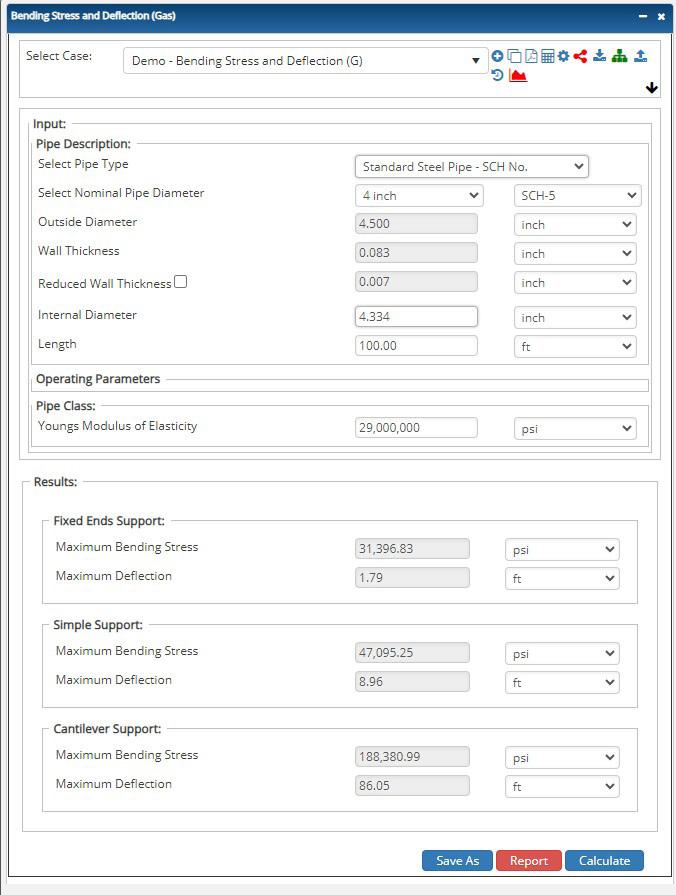
64 World Pipelines / AUGUST 2023
Figure 1. An example screen from the pipeline design and stress analysis module of Pipeline Toolbox.

they join, and changes in personnel routinely create continuity problems.
Centralising data in a standard software platform
The ideal solution away from spreadsheets standardises the data for all the engineering teams in your company. It controls calculations and eliminates conflicts. Additionally, it greatly reduces duplication of past efforts, a notorious drain on engineering productivity. A system that makes standard, industry-compliant formulas accessible to all of your users creates confidence in the reliability, consistency, and availability of your engineering output. Navigating company SOPs and industry standards inflate administrative costs and can also be a source of calculation errors. Any lapse poses a risk due to lost productivity and fines. So, pipeline engineers are best served by a platform that mitigates this burden of compliance. One that manages SOPs has the added advantage of facilitating knowledge retention within an organisation. Such a platform creates a long-term knowledge base independent of individual employees who may be hired away by your competitors or retire.
Technical Toolboxes developed a package that simplifies this work for engineers; the Pipeline Toolbox (PLTB). All users compute the same answers across the organisation; users cannot modify the code, which ensures uniformity and consistency. Consequently, engineers spend more time on engineering pipeline assets instead of managing spreadsheets. PLTB has grown to be the industry standard software for pipeline calculations in design and analysis. It puts key data about assets in one consistent database with more than 250 calculations available for pipeline engineers across crossings, integrity, corrosion, welding, and more for both liquid and gas.
The software puts the company in control of formulas and aligns the engineering teams’ standards, which prevents failures caused by non-verified data. PLTB provides superior workflow integration as part of the integrated data environment of the Pipeline HUB. All of the analysis tools are within PLTB, and they can access data from other tools on the Pipeline HUB to automate the data upload and quality control process. PLTB on the Pipeline HUB provides data-driven pipeline engineering workflows built from the many tools and applications it contains. Engineers automatically align with SOPs and industry standards from the start. Teams can build workflows from multiple modules and other applications on the Pipeline HUB, sharing data and case histories, and making them available to any authorised users for further calculations.
While there are over 250 calculations available in PLTB across much of the pipeline lifecycle, some of the core areas covered are the following:
Pipeline crossings
Provides industry recommended API 1102, CEPA and wheel/ track load calculations to assess impact of surface load on buried pipe for both wheeled and tracked vehicles. This module determines acceptable loads on pipeline assets and prevents overloading that could affect pipe integrity and prove costly to repair.
Pipeline design and stress analysis
Delivers the standard calculations that ensure pipelines are designed and engineered to industry specifications and enables quick reference for efficient, reliable daily pipeline operations.
Hydraulics
Provides the necessary tools, reports, and graphs, to assess upstream and downstream pressures, flowrates, and volumes, ensuring optimal and safe operating parameters in pipelines.
In addition to the shared data, industry-backed standards, and wide range of calculations, PLTB is designed to speed up analysis beyond providing engineers with the ability to simply insert calculations faster. Using Pipeline HUB, PLTB allows for the importing of asset data into one central repository, along with the GIS mapping, to provide a complete repository of asset data, its exact locations, and the corresponding engineering information. With the report builder functionality, a report with asset information paired with engineering calculations can be generated with the click of a button, and the audit trail of historical asset information exists forever, aiding companies in becoming ready for the full implementation of TVC data requirements associated with the Mega Rule.
Recently, additional functionality has been added to improve the speed and quality of advanced analysis within calculations of PLTB. With the addition of the ‘batch run’ feature, many pipeline cases can be run at once to understand the breadth of impact to a pipeline without having to evaluate individual cases, and a ‘sensitivity analysis’ feature has been added where users can evaluate the potential variables of their choice on a specific pipe to determine what factors present an acceptable range of outcomes to determine whether or not pipeline repair needs to occur.
PLTB is part of a wide range of pipeline applications available on the Technical Toolboxes Pipeline HUB. The beauty of embracing a centralised data model is that, in addition to storing data for PLTB calculations there, this data can also be accessed for more in-depth applications that are available on the platform, such as HDD and encroachment analysis for crossings, RSTRENG and AC mitigation analysis for corrosion, hot tapping analysis for welding, and hydrotesting for pipeline integrity.
Expediting digital transformation: easier than you think
By moving away from siloed spreadsheets to a standardised, cloud-based platform for pipeline engineering analysis calculations, the digital transformation within pipeline operators and service providers can occur fairly rapidly. Standardising data and processes based on industry calculations and standards allows engineers to focus on project completion and analysis instead of worrying about version control and whether a calculation is truly accurate. This allows for better collaboration, trusted results, and expedited project completion.
66 World Pipelines / AUGUST 2023
ADVANTAGES
CAPP-Crawler replaces the boom truck and driver(s), resulting in significant cost reduction

The batteries of the CAPP-Crawler are directly charged by the diesel welder or generator

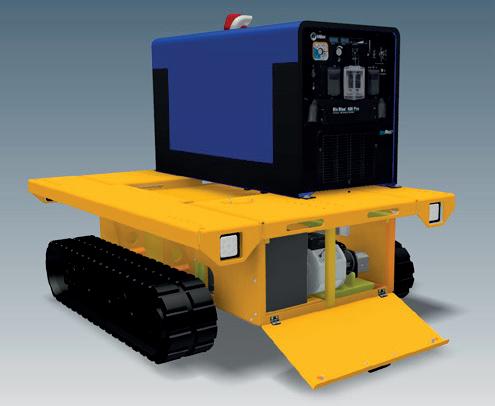
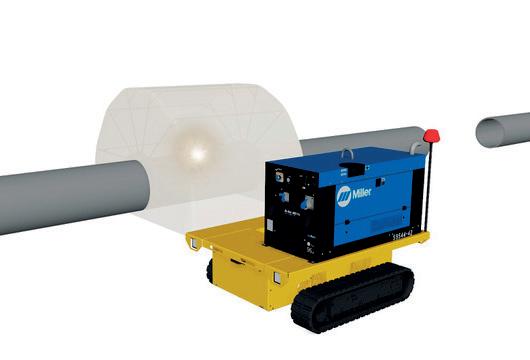
Economically priced, quick return on investment
Zero Emissions
Low maintenance cost, 95% less parts than a conventional vehicle, risk of downtime extremely low
Remote controlled
Exceptional mobility & manoeuvrability
TECHNICAL DETAILS
Electrical hydraulic system
Two speed motor with max. running speed around 5km/h
Dimension 1800x1400
Customisation possible
2 ton load capacity
30 degree inclinations
The CAPP-Crawler is more than just an environmentally conscious choice; it is also a versatile and efficient tool for pipeline welding. Designed for smaller diameter pipelines where manual welding is used. Significant cost reduction on your project.
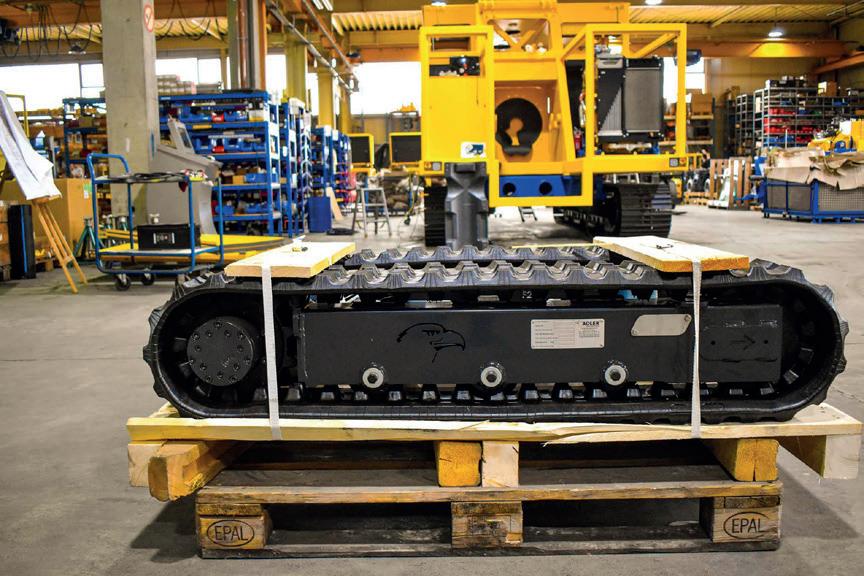
“Why use an engine driven vehicle, when using an engine driven welder”.
+31 (0)6 43005402 info@cappline.com CAPPLINE B.V. DE VEILING 6 ZETTEN 6671 MG THE NETHERLANDS

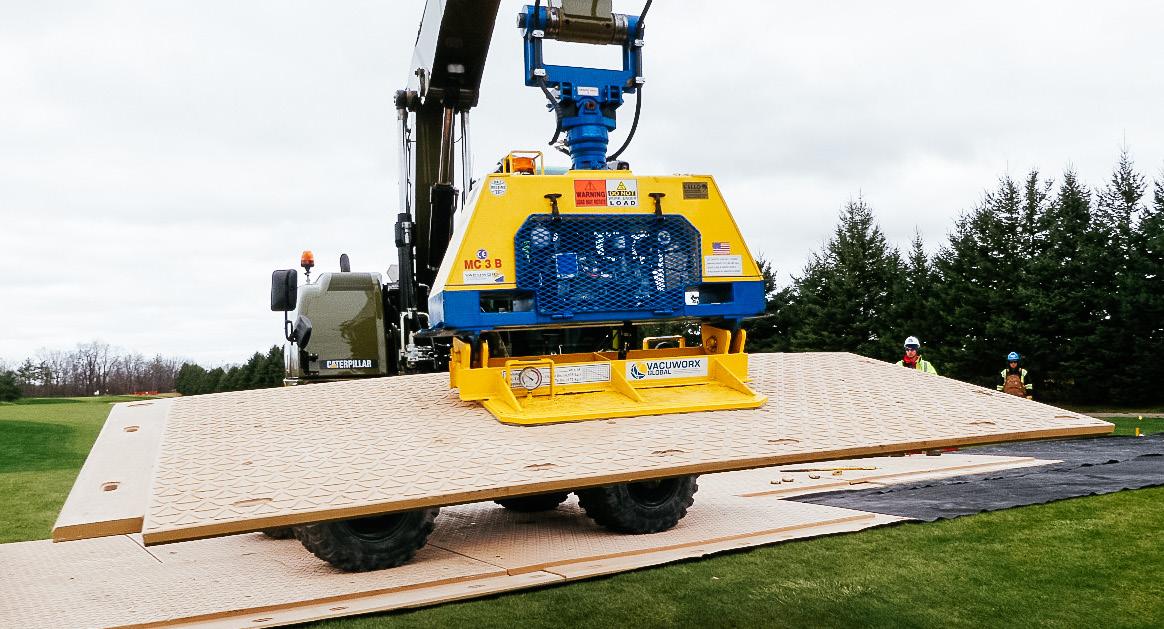
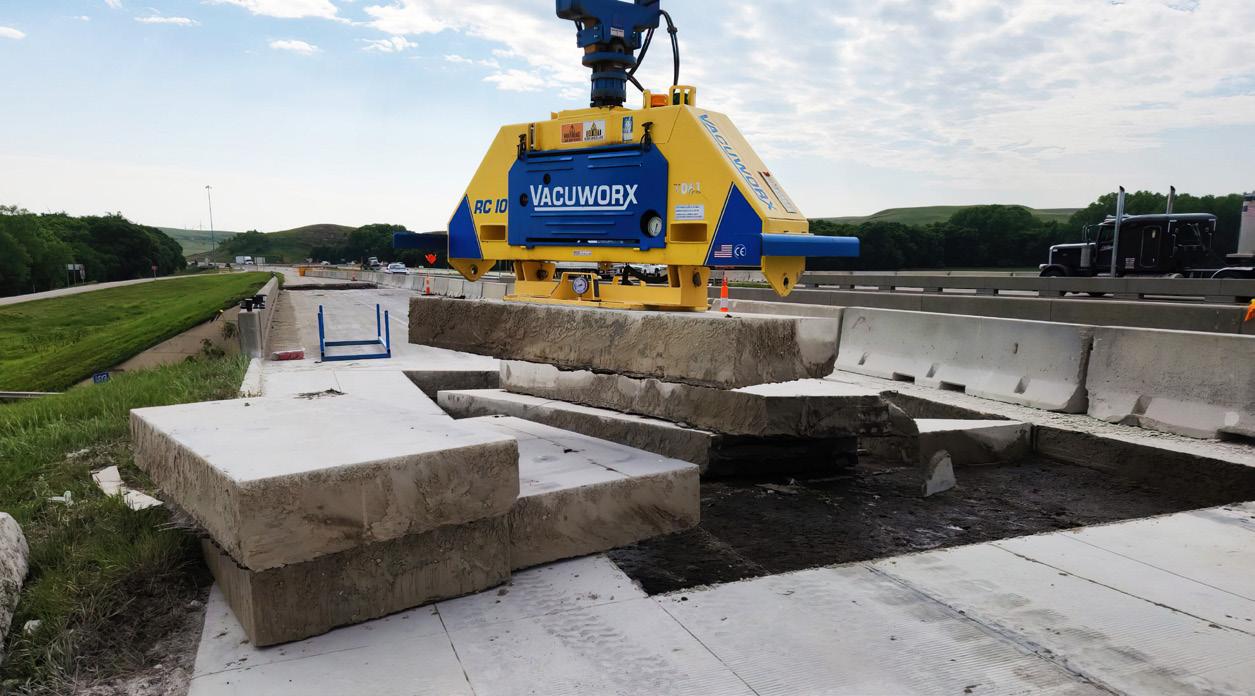
For 25 years now, Vacuworx has set the standard for vacuum lifting in the field. In addition to offering the best vacuum lifting systems on the market, Vacuworx also delivers unparalleled service and technical support, backed by experience no one else can copy. Creating safer material handling solutions for industry. Global Headquarters 10105 East 55th Place Tulsa, OK 74146 USA www.vacuworx.com
s pipelines age, degradation mechanisms lead to an increase in the likelihood of failure, with implications including safety, environmental, energy security and commercial impacts. However, in recent years there is a growing call for the lives of older pipelines and related infrastructure to be extended. This is sometimes to maximise hydrocarbon recovery from an existing field or increasingly, as the energy market transitions, to repurpose the pipeline for alternative use, such as carrying CO2 or hydrogen.
Pipeline operators have legal duties, and societal and commercial imperatives, to ensure that a pipeline’s current and evolving future risks are understood, and to implement appropriate measures to maintain these risks within tolerable levels. As a pipeline reaches the end of its original design life, formal life extension assessments can confirm the feasibility of further service. These assessments demonstrate that the risks in extended life can be managed within acceptable levels.
Establishing a basis
The first step of a life extension study is to develop a detailed understanding of the current condition of the pipeline. This process can be data intensive as it brings a requirement to understand how the design and operation of the pipeline to date combine to give its current risk profile. Data reviewed includes wide-ranging design, fabrication and operational information, as well as integrity reviews and any defect assessments. The results establish a reliable baseline from which the feasibility of continued pipeline operation in extended life can be determined.
Data gathering is challenging and time-consuming. The information is often spread across many operator teams and systems, and sometimes the pipeline is with its second or third owner. But the effort pays off as the data review process brings some significant benefits. It is unlikely that the pipeline will have recently had such a rigorous review of its integrity and operating history, giving the operator a new perspective on the current pipeline risks. This can lead to improvements in the day-to-day integrity management of the pipeline and, in some cases, help to justify the deferral of expensive planned work such as inline, intelligent pigging inspection.
Understanding the threats
Once the current condition of the pipeline is understood, the next step is to confirm and assess which threats may impact life extension. The knowledge gained from the data review process is nothing without the right level and mix of experience and knowledge across a range of technical disciplines to interpret the data. Only then can the right

69
Shaun Walker, Victor Ng and Jeremy Summers, Kent, UK, discuss extending service life for greater value and sustainability.
questions be framed that are relevant to life extension.
Pipeline integrity specialists manage this process, supported by materials and corrosion, flow assurance and analysis engineers, and occasionally other specialists such as valves, controls and instrumentation engineers.
Operator anomaly databases are routinely reviewed as part of life extension assessments because these are summaries of known issues with the pipeline. These databases typically have numerous recorded anomalies, the majority of which can normally be readily screened out as they do not have a significant bearing on life extension. Conversely, a review of data sometimes identifies threats which had not been identified by the operator, and if left unchecked, may present a current or future significant integrity concern.
Focus on the relevant factors
Some pipeline life extension studies we have seen have comprised little more than a repeat of the original design calculations with updated numbers. Whilst it is necessary to confirm that the pipeline can withstand future mechanical loading, this is only part of the story. Most of the focus usually needs to be on degradation-related threats which could compromise the pipeline integrity over time, such as internal and external corrosion or fatigue.
The elements of success
Pipeline operators routinely assess the integrity of their pipeline systems as part of ongoing asset management, and typically perform annual integrity reviews for their whole pipeline portfolio. These updates, which often involve revisiting thousands of individual risk assessments, are invariably done in addition to the normal operational workload. With the additional pressure of reporting to senior management or the regulator by a specific deadline, this leaves little time to delve into details. In these circumstances, it can be easy to overlook new or evolving degradation trends affecting pipelines, which may manifest over a long period of time.
Identifying the relevant areas to study and assessing them to the right level of detail is what makes life extension studies successful. The assessment should quickly confirm and screen out any threat mechanisms which do not have an influence on whether the pipeline achieves its planned extension, while applying appropriate levels of scrutiny to those threats which do have an influence. In a small number of cases, this can require detailed engineering studies to reach the required understanding of the implications of the given threat in the pipeline’s particular context. Supporting studies include flow assurance, fatigue assessment, and consultation with experts in a specific field, such as top-of-line corrosion assessment.
The life extension study provides a new risk profile for the pipeline in its extended life. This, along with recommendations for mitigating any intolerable risks found, is the principal output of the work. The risk profile report supports informed decision-making as part of the company’s risk management strategy. For example, an expected increase in the rate of pipeline degradation may inform the need to increase future inspection frequency to confirm condition more regularly, or to identify and quantify the need for intervention or repair. Risk
frameworks such as life extension output are a familiar tool to operators and provide an established basis from which to apply for and secure management approvals for any investments required to maintain acceptable future pipeline operation.
Life extension studies need to take careful account of the implications of spending in their recommendations. An ageing pipeline often requires more investment in inspection and maintenance but is less financially productive because of diminishing product flows in late life. Recommending a technically-sound but expensive inspection or intervention is not likely to be a viable option due to basic economics. The rigorous approach followed in a well-conducted life extension study will add value by providing the operator with recommendations for appropriate levels of expenditure, and only in those areas that secure target longevity for the pipeline.
A standard approach?
By looking at a pipeline through fresh eyes, all possible threats which could influence the achievement of life extension are identified and understood. The value comes from a comprehensive and bespoke approach to each study to ensure that nothing is missed.
Having said that, the framework and method by which a pipeline life extension study is performed can be standardised, and therefore repeatable. Good guidance on the extent of coverage and the processes to follow in a study is available from international bodies such as ISO and NORSOK. The real value comes from how the guidance is applied. Studies have shown that life extension is best done with a small, multidisciplinary team. An experienced team, who can quickly confirm what to look at and what to screen out, whilst understanding the key issues from the operator’s perspective, particularly when it comes to recommendations for any possible expenditure on their ageing pipelines. The tools used by the team are also important, for example, how to efficiently manage the complex data gathering and interpretation, to build a holistic picture of pipeline condition, relevant future threats and resulting risks, and clearly show any changes in extended life. Experienced teams follow a systematic approach, learn from each study completed, and optimise life extension methods. This delivers a continuously improving, professional and cost-effective service in what is a complex area of pipeline engineering.
A live process
It can be tempting to think that a life extension study that confirms the feasibility of operating a pipeline for the next 20 years means that there is no need to revisit the assessment in the meantime. However, circumstances change – most commonly the pipeline’s operating conditions, and new threats or anomalies may also arise – resulting in implications for the validity of the original assessment. Life extension should be treated as a live process, with ongoing compliance subject to periodic review. In following this approach, the operator can maintain a good understanding of the changing future risks that the pipeline faces and can act when required to maintain those risks within acceptable limits.
70 World Pipelines / AUGUST 2023


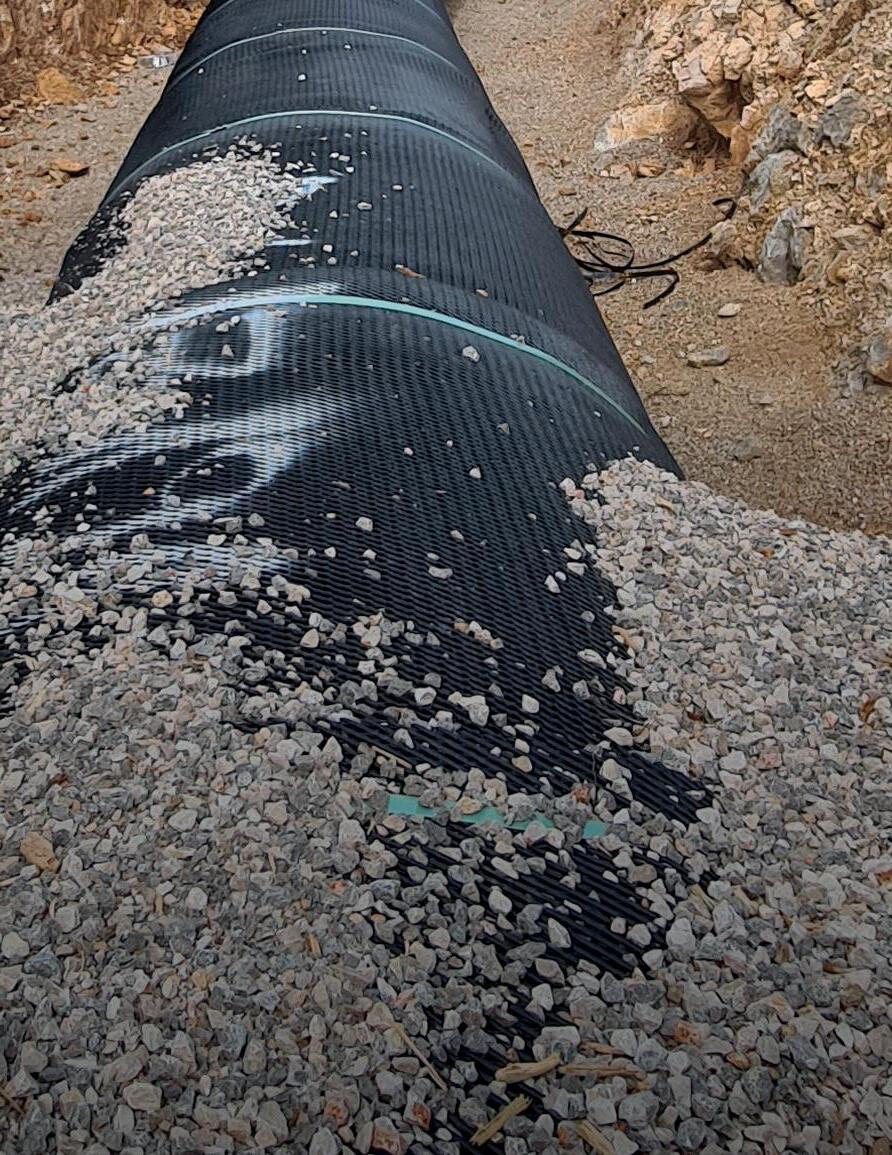


















Self Healing Corrosion Prevention & Sealant Technology Learn from the past Think of the future Read our full story on www.stopaq.com MAINTENANCE FREE Protect your assets for a lifetime with our everlasting and cost effective solution.
5-8 SEPTEMBER 2023, P&J LIVE, ABERDEEN
ACCELERATING THE TRANSITION TO A
BETTER
ENERGY FUTURE
Connecting you with the offshore energy industry

• Explore new opportunities in the Energy Transition Zone and Theatre, the Hydrogen Hub and the Offshore Wind Theatre
• Find solutions to recruitment and talent evolution in the Future Talent Hub
• Discover the latest technologies within the Innovative Technology Zone

• Attend SPE Keynote and Technical Sessions to learn more about the hottest topics with the industry’s big names
• Meet with world-class exhibitors from across the supply chain in the main exhibition REGISTER NOW offshore-europe.co.uk/wp
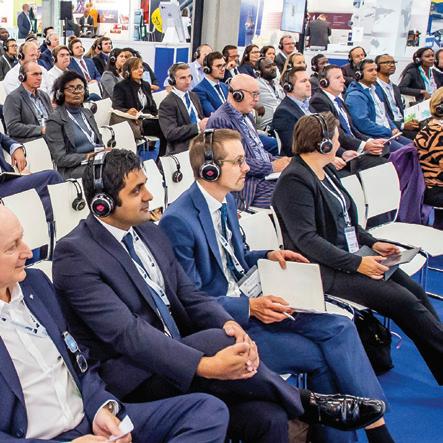
Organised by

ipeline asset performance optimisation relative to the asset’s risk profile is critical for operators. Remaining asset life prediction within ‘as-low-as-reasonablypracticable’ (ALARP) risk constraints is crucial to maximising pipeline asset performance. Remaining life prediction relies upon understanding the time-dependent threats to the pipeline, including corrosion.
US regulations stipulate that pipeline segments affecting a high consequence area (HCA) are subject to periodic assessment. Most operators choose to perform inline inspection (ILI) assessments where feasible, because of the wealth of data produced by modern smart pigs. Many operators have performed multiple generations of assessments.
Tracking corrosion anomalies across multiple assessments to estimate corrosion growth and remaining asset life is challenging. Constantly evolving ILI technology introduces complexity. Correlating coarse features in old assessments to high resolution features in new assessments can be problematic. Operators often utilise multiple vendors over time, introducing complications inherent to using multiple proprietary technologies. Despite tremendous volumes of data, anomaly identification and tracking across multiple assessments remains largely manual and is subject to inconsistency and unintentional bias.
To address these problems, ENTRUST employs a novel application of geographic information system (GIS) technology via its PIMS ILI Data Integration Tool. This software applies GIS proximity analysis to anomaly tracking across multiple assessments. Process automation facilitates analysis of all anomalies, resulting in statistically robust corrosion growth estimates and better understanding of remaining asset life.
ILI data integration workflow

Figure 1 is a depiction of ENTRUST’s ILI data integration workflow. Orange boxes represent ENTRUST software elements used to support process steps. The orange software element boxes with dashed outlines near process steps (3) and (4) are separate from the PIMS ILI Data Integration Tool.
The ILI data integration workflow is sandwiched between the assessments and confirmatory digs and repairs workflows. The ENTRUST ILI data integration workflow is a collaborative effort between ENTRUST’s level III ILI experts and GIS analysts.
73
Tracy Thorleifson, ENTRUST, USA, looks at the role that integrating inline inspection data into a pipeline digital twin can play in optimising asset performance and risk management in the pipeline industry lifecycle.
Focus here is on process steps (3) to (8), executed by ENTRUST GIS analysts.

Steps (1) and (2) are completed by an ILI expert. In step (1), the pipe tally data sheet and ILI assessment final report are received from the vendor. The final report contains detailed metadata about the assessment, including tool specifications, assessment findings, and other information. In step (2), the ILI expert reviews data to check for indications of abnormal smart pig tool behaviour. Abnormal tool travel velocity is important because it affects performance and accuracy, complicating ILI data calibration.
The pipe tally data sheet, delivered in Microsoft Excel format, lists all features detected by the smart pig, including corrosion anomalies and other defects, pipe deformations (dents), pipe fittings and features. Pipe fittings and features include girth welds between individual pipe joints, bends, valves, taps, tees, flanges, pipe wall thickness changes, repair sleeves, pipe casings, cathodic protection cadwelds, etc. Some modern ILI tools can also detect longitudinal seam orientation for individual pipe joints.
Feature locations in the pipe tally data sheet are reported using a ‘coordinate system’ specific to ILI data: odometer and clock position. Odometer is travel distance recorded along the interior of the pipeline. Odometer position may not be accurate; velocity departures can negatively impact odometer accuracy. Clock position records the axial position of features.
12 o’clock is the top of the pipe; 6 o’clock position is the bottom of the pipe.
Corrosion anomalies are listed in the pipe tally data sheet by odometer and clock position. Additional attribution includes anomaly length and width (in inches), anomaly depth (expressed as percentage of pipe wall loss), and location on the pipe (internal or external). Individual anomalies may be located within an encompassing anomaly ‘cluster’.

ILI data calibration
The odometer/clock position ‘coordinate system’ does not locate ILI features in the real world, so some method of ‘calibrating’ ILI data to real world coordinates is necessary. Many modern smart pigs are equipped with inertial measurement units (IMUs) providing real world coordinates for ILI features, but IMUs can be subject to inertial drift and lag, so some degree of location calibration is still required.
Step (3) in Figure 1 comprises calibrating ILI data to real world coordinates, facilitated by the Calibratorator tool. The Calibratorator converts odometer values to pipeline stationing values via linear interpolation between features common to both the GIS and the ILI assessment. Each set of matched features in the GIS and assessment constitutes a ‘calibration point’. Larger numbers of calibration points result in higher quality calibration. The end goal of calibration is to use all girth welds as calibration points, referred to as the ‘weld map’. Once the weld map is established, accurate calibration of all ILI data is readily achieved. The weld map evolves over time, due to pipe replacements and pipeline reroutes. In performing ILI data calibration, it is vital for the GIS analyst to be aware of all pipe replacements and reroutes. Depending on data quality in the GIS and ILI assessments, calibrating ILI data can be extremely complex. However, once accomplished, the GIS becomes a highly detailed,
74 World Pipelines / AUGUST 2023
Figure 1. ILI Data Integration workflow.
Figure 2. Converted ILI features.
STREICHER OFFERS COMPLETE PIPELINE AND PLANT CONSTRUCTION SOLUTIONS

System provider for pipeline and plant construction
Feasibility studies, engineering, construction, procurement, commissioning, execution, technical services, future-focused, innovative and eco-friendly working methods
Integrated solutions for energy infrastructure
Drilling rigs for hydrocarbon and geothermal exploration
HDD rigs for trenchless pipe laying
Integrated execution for drilling services
STREICHER Group: Comprehensive technical know-how and many years of experience within the business sectors of Pipelines & Plants, Mechanical Engineering, Electrical Engineering, Civil & Structural Engineering and Raw & Construction Material, modern machine technology as well as highly qualified specialists guarantee a timely and high quality execution of complex projects.
MAX STREICHER GmbH & Co. KG aA Schwaigerbreite 17 · 94469 Deggendorf · Germany T +49 991 330-231 · E info@streicher.de · www streicher.de DrillTec GUT GmbH Großbohr- und Umwelttechnik Josef-Wallner-Str. 10 · 94469 Deggendorf · Germany T +49 991 37212-400 · E info@drilltec.de · www drilltec.de
temporally aware ‘digital twin’ of the physical pipeline. This enables the downstream steps in the ILI data integration workflow, setting the stage for remaining asset life determination.
Relative accuracy vs absolute spatial accuracy
For anomaly matching, relative accuracy trumps absolute spatial accuracy. Anomaly matching can be performed without
real world coordinates. Establishing the weld map is critical. Weld-to-weld mapping across assessments reduces the scale of anomaly matching operations to a single joint of pipe. Absolute spatial accuracy is crucial for accurate dig locations and to understanding ILI data in full spatial context.
ILI data loading into the enterprise GIS
Step (4) in Figure 1 comprises loading calibrated ILI data into the GIS. ENTRUST practice is to store all ILI data in the enterprise GIS. The software is agnostic regarding data storage; local data stores are acceptable.
Pressure calculations
Step (5) in Figure 1 encompasses calculation of ASME B31G safety and pressure related attributes on ILI anomalies. The Pressure Calculator tool inputs include anomaly length and depth, recorded wall thickness and other physical pipe properties. Output is common ASME B31G remaining strength attributes, which are used in anomaly prioritisation and serve as a check on attribution provided by the ILI vendor.

Anomaly conversion
In Figure 1, step (6), ILI data is converted into an artificial coordinate system by the ILI Data Converter tool, enabling GIS-based anomaly matching and tracking.
Concepts
The GIS does not understand clock position and odometer distance. To apply GIS tools to ILI data, it is necessary to convert to an artificial GIS X/Y coordinate system. This is done by ‘unzipping’ the pipe and laying it out flat. The X axis of the artificial coordinate system is pipeline stationing. The Y axis is pipe circumference, i.e. clock position. GIS proximity analysis can be used for anomaly matching in this artificial coordinate system.
Process
Converted ILI features are depicted in Figure 2. The ILI Data Converter tool can apply various shape transformations to input ILI features. Here, clock position grid lines are black horizontal lines labelled with clock position. Blue horizontal lines represent the longitudinal pipe joint seams. Vertical red lines represent girth
Parent unique ID Parent ID Child unique ID Child ID Near distance (in.) Near rank From station {8FwC284DB40FF-4E0E-8C25E75F42A7050F} 1 {06CF5079-DF574F4C-890FC9D00B2DF789} 1 0.86 1 2896.37 {A7D640D81507-4626-8F0E3C0304C22587
2
2 0.00 1 3342.03 {01C3F6C4-
3
3 0.81 1 3376.14 {20FACC24-
4 { F286D9FBC8CA-47DF-874F910B9B340A8D} 4 0.00 1 3616.55 {20FACC24DA1D-4CC3-9002BAE7493C1510} 4 {98748FD2-0A1748B0-9EEE6152CFEDFE7E} 5 1.91 2 3616.61 {1167D1AC-
D68759CACE55} 5 {A8BBE9D6B24C-49D8-A185F5CB7ED35B7E} 6 0.00 1 3738.21 { 1167D1AC5E7E-4C71-99B8D68759CACE55} 5 {8167862A-B1174010-B7D610D65C034BD8} 7 1.88 2 3738.19
Table 1. Anomaly matches
}
{01E6D905-E22F4D8D-9120C04EB09A6876}
756D-4D55-85F20D6785B49663}
{6BAC3C046B35-436B-AB06B1003EBB78B2}
DA1D-4CC3-9002BAE7493C1510}
5E7E-4C71-99B8-
76 World Pipelines / AUGUST 2023
Figure 3. Converted corrosion anomaly.
Corrosive plus mechanical protection in just one step. Without any primer. Only SEALID® All-in-1 Tape makes it possible. Patented safety fulfilling ISO 21809-3 and EN 12068. Saving time and money has never been this simple sealid.de


 SEALID® All-in-1 Wrap once. All done.
SEALID® All-in-1 Wrap once. All done.
ready for the impossible.
SEALID® All-in-1
Get
welds, labelled above with girth weld number and below with pipeline stationing. Green rectangles represent pipe bends; width of these features is 1 ft. Brown rectangles represent pipe supports on this above ground pipeline. The pink background indicates this pipe could affect an HCA. Corrosion anomalies are visible at this scale as point features, labelled by anomaly depth. The dashed outline around the anomaly at the centre shows the display extent of Figure 3.
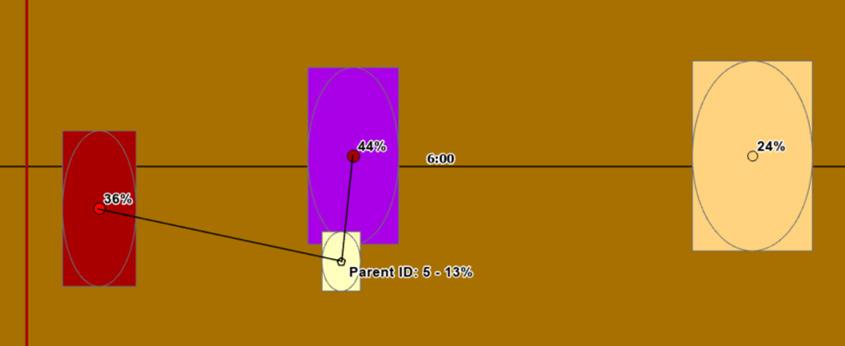
Pipeline stationing, clock position, length and width are the key attributes for conversion of ILI anomaly features. Anomalies are converted as point, box (envelope) and ellipse features. At the scale of Figure 3, the ellipse and box representations of the anomaly feature are visible. Ellipses are most useful for anomaly matching.
Anomaly matching
Step (7) in Figure 1 comprises anomaly matching. The Anomaly Matching tool uses GIS spatial proximity analysis to detect potential matches. The tool is directional. Generally, it is appropriate to use an older ILI assessment as the first (parent) dataset, and a newer ILI assessment as the second (child) dataset. The tool attempts to find one or more matches in the child dataset for each parent anomaly, within a specified search radius.
In Table 1, five anomalies from a parent assessment are matched to seven anomalies in a child assessment. There are seven records in total in the table because parent anomalies four and five are each matched to two child anomalies. The ‘near distance’ column displays parent/child separation distance; a zero value indicates spatial overlap between parent and child.
Figure 6 illustrates parent anomaly five and its two matching child anomalies. There has been significant corrosion growth between parent and child ILI assessments.
Anomaly growth calculation
Step (8) in Figure 1 addresses anomaly growth calculation. The growth calculator tool calculates anomaly growth between two assessments, calculating annual corrosion growth for matched and unmatched anomalies. For parent anomalies with multiple children, growth statistics are calculated. ILI tool uncertainties are incorporated into worst case growth rates. Overall corrosion growth rates for the pipeline are evaluated using frequency distribution plots.
Figure 4 depicts corrosion growth for the matched anomalies in the example data. All five parent anomalies appear in the frequency distribution plot, which is broken into five sample bins. Mean and median worst-case annual corrosion growth rates for the sample set are shown, as is the standard deviation. Little is to be gleaned from this simple plot, but when hundreds of samples are included, interesting patterns can emerge. Nongaussian and multi-modal frequency distributions may indicate that multiple corrosion modalities are operative on the pipeline.
Figure 5 shows the worst-case annual corrosion growth frequency distribution plot for unmatched child anomalies. There are 72 unmatched corrosion anomalies in the child assessment, divided here into eight bins. Unmatched anomalies corrosion growth is calculated on a ‘halflife’ basis, assuming anomaly growth starts halfway between the parent and child
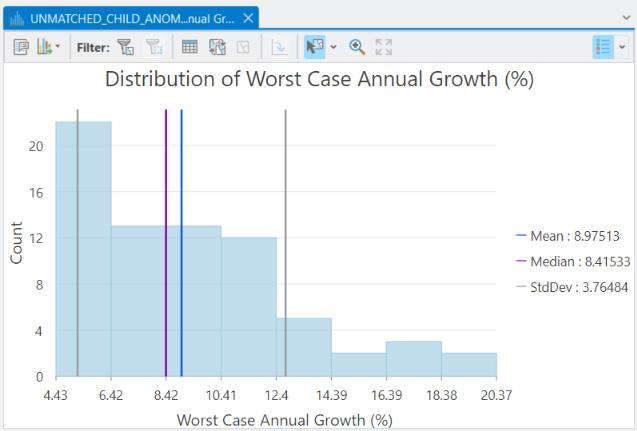
 Figure 4. Corrosion growth for matched anomalies.
Figure 6. Anomaly matches in the artificial coordinate system.
Figure 4. Corrosion growth for matched anomalies.
Figure 6. Anomaly matches in the artificial coordinate system.
78 World Pipelines / AUGUST 2023
Figure 5. Corrosion growth for unmatched anomalies.


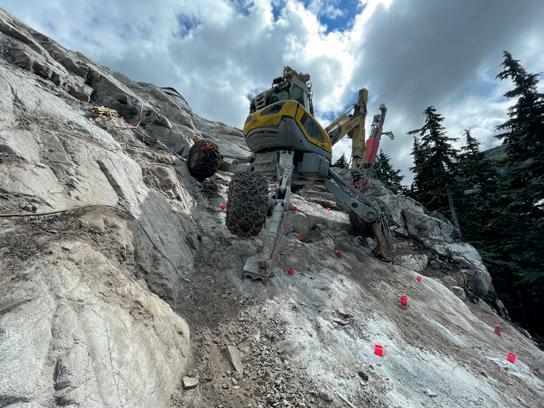
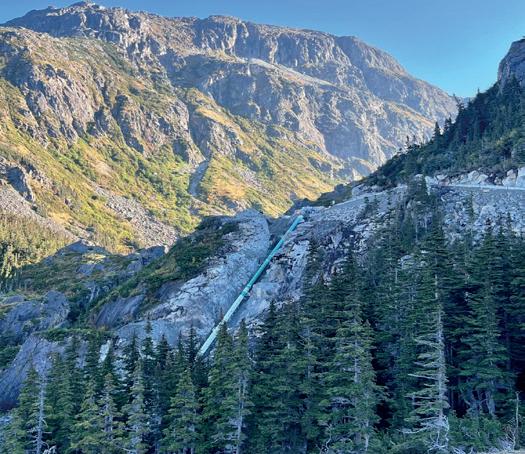
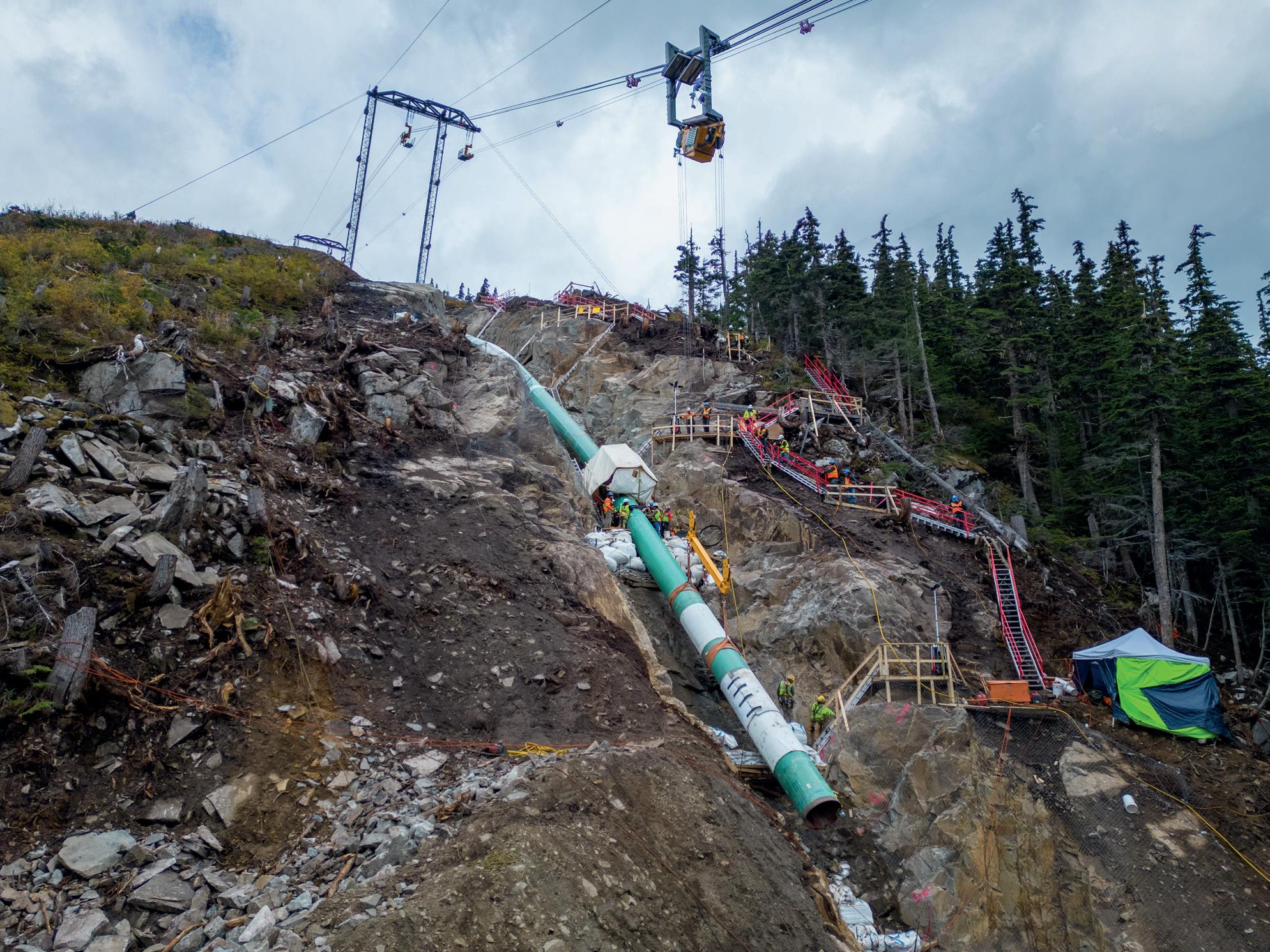

Via Consolatico Superiore, 96/98 43011 Busseto (PR) - ITALY Tel. +39 0524 930211 - Fax +39 0524 930082 info@sicim.eu - www.sicim.eu
assessments. This frequency distribution is skewed toward rapid corrosion growth. This suggests some portions of the pipeline may be subject to accelerated corrosion, meriting immediate further investigation (and repair action), because the extreme outliers suggest a failure could occur before the next scheduled assessment.
ILI data in the context of the pipeline digital twin
Figure 7 illustrates the pipeline’s digital twin, showing corrosion anomalies in spatial context. The close association of most corrosion anomalies with pipe supports is obvious. Most anomalies are coincident with pipe supports and are at the 6 o’clock position, suggesting a course of mitigative action to maximise remaining asset life.
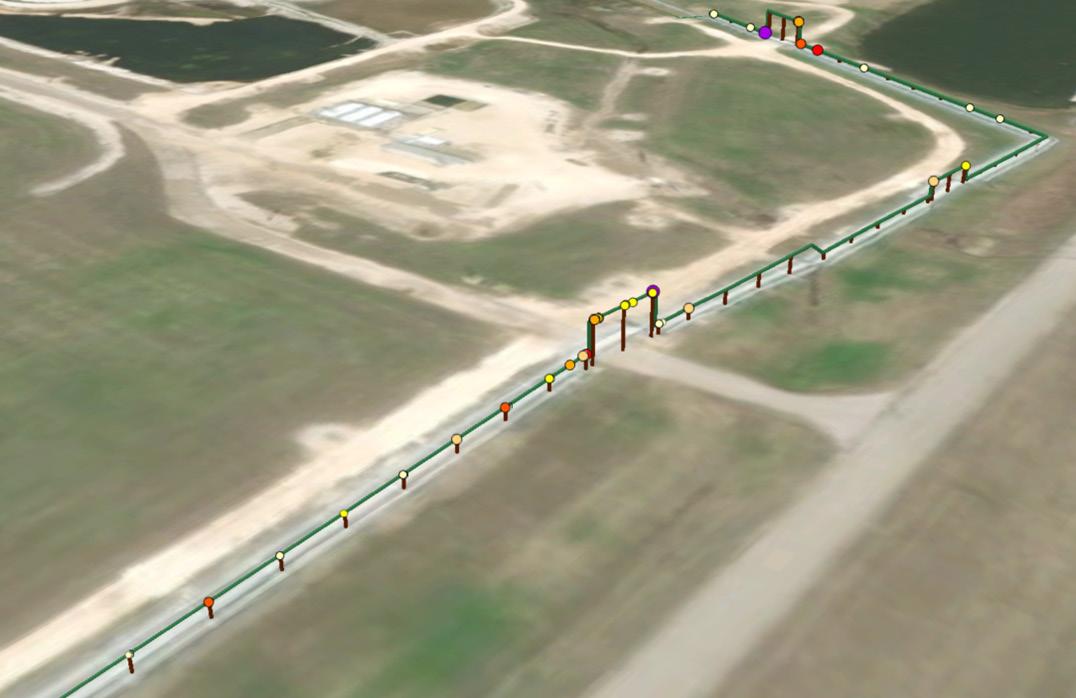
Conclusions
ILI data is like any other data – messy. Proper calibration of ILI data to the GIS is the key to truly understanding the data’s message. Conversion to an artificial coordinate system facilitates GIS-enabled anomaly matching. Process automation enables analysis of all data, not just a subset. Anomaly growth estimates are statistically backed. Visualisation of ILI data in the GIS digital twin leads to insight and understanding, allowing transformation of data into actionable knowledge that can be used to maximise remaining asset life.

D eve l o p e d by t h e i n d u s t r y fo r t h e i n d u s t r y
Figure 7. The pipeline digital twin.
alidating inline inspection (ILI) system performance is a critical element of any ILI campaign. It ensures that the integrity decision-making based on the data collected is realistic, considering both the classification and the sizing tolerances stated in the inspection system’s performance specification. Nowhere is this task more important than in validating crack sizing, due to the difficulty of predicting the behaviour of crack likedefects and the challenges in measuring these features.
The ILI crack sizing technologies of ultrasonic (UT) and electromagnetic acoustic transducer (EMAT) are validated and qualified technologies, but the
industry is continuously learning and gaining experience. The quality of results across different vendors can therefore vary due to the level of experience with particular feature types, the robustness of the processes, technological limitations and numerous other factors. Therefore, from a safety perspective, it is essential that ILI system validation is performed considering pipeline specifics in order to understand performance on a run-by-run basis and thus confirm that the ILI system performance is within its specification. This validation is now a regulatory requirement in the US, under legislation that explicitly references API 1163. Validation can be done in a number of ways, including benchmarking against previous data,
cut-outs and validation spools. The most common, however, is in-field investigations of features reported by ILI. The question we will be looking to answer: can we trust the data we get from the field to validate ILI system performance?
Contrary to popular belief, the feature sizes measured in the field are not absolute and do come with a level of tolerance – either known or, more worryingly, unknown. The accuracy and repeatability of measurement techniques used for sizing cracks are heavily dependent on user knowledge and skill, meaning that two technicians using the same equipment, working to the same procedure, can get two very different results depending on their level

81
Tom
Oldfield, Service Manager – Field
Verification,
ROSEN,
UK, finds the most efficient way to understand the quality of the field verification while validating ILI system performance.
of experience and competence. Understanding uncertainty in field measurement accuracy is a fundamental challenge to ILI system validation and the quantification of ILI system performance.
In-field crack sizing
The term ‘crack sizing’ encompasses numerous cracking mechanisms with different surface and subsurface morphologies. As a result, and due to the limitations of the various techniques, there is no single field-deployable technology that is appropriate for all cracking types. Further complicating matters, results collected in-field are heavily reliant on the skill and experience of the technician taking the measurements.
Combining these factors means that there can be considerable variation in in-field sizing accuracies. If these measurements are then used without understanding their tolerance or accuracy to prove or disprove ILI performance, this can clearly cause challenges in understanding the real problem.
ILI system performance
The published ILI system performance specification of a given ILI service provides a statistical basis for its detection, classification and sizing capability. ILI service performance specifications are created and refined through extensive testing of representative anomaly samples in small-scale (laboratory trials), full-scale (pull tests) and real-pipeline environments. There are, however, only a finite number of scenarios that can be considered as part of a development programme. Real-life variations in run condition, line cleanliness and defect morphology, to name a few, can all affect the ability to meet the detection and sizing performance stated in the ILI service specification.
API 1163
API 1163 gives guidance on how to use field results to validate ILI system performance. It states, “ignoring field measurement inaccuracies is generally conservative but may be overly conservative when evaluating ILI sizing performance”. This phrase alludes to the fact that tolerance of field measurement is understood to be an issue, but that it can be difficult to quantify.
Ignoring tolerance from the field-measurement may well indicate that the ILI results are not in the ranges stated in the performance specification – potentially incorrectly so, because only one of the tolerances is considered, which will narrow the acceptable window and make any ILI measurement more likely to be out of specification. This relationship is illustrated in Figure 1 in the form of a unity plot contrasting ILI-tolerance-only data with the combined tolerance of field and ILI results.
Importantly, however, API 1163 does not give or suggest tolerance values that can be used for in-field validations. Equation 8 in API 1163 demonstrates how using a combined tolerance for comparing two datasets with a defined level of uncertainty is a less-conservative way to assess ILI-sizing performance if the field tolerance is understood.
The following equations are taken from API 1163:



where:
represent the tolerance on the relative depth measurements associated with the ILI and field measurements, respectively, both at the certainty level associated with the stated ILI tolerance. An individual measurement can only be considered out of tolerance when:
otherwise, the measurement is within tolerance.
What this means is that the measurement should consider both the ILI tolerance at the defined confidence as reported in the specification (typically 80%), with the field measurement tolerance at the same confidence interval. Only if the measurement is outside this combined tolerance should it be considered out of specification. This is shown graphically in Figure 2.

In the example in Figure 2, if the tolerance of the field measurement is ignored, the ILI measurement falls outside of the stated tolerance at 80% confidence of the field measurement. If the tolerance of the field measurement is known and a combined tolerance is calculated in accordance with equation 8 from API 1163, then the field measurement falls within the now wider acceptable range from the ILI system measurement. This example demonstrates the possibility for both values to be correct within the limits of the stated tolerances. But the value can clearly be acceptable anywhere in the combined tolerance region.
For direct measurements like pit gauges or laser scanning, field tolerances are generally so small – an order of magnitude smaller than ILI – that their influence on the combined tolerance is minor. However, crack-sizing tolerances can have a more significant influence, as they sometimes exceed ILI tolerances.
82 World Pipelines / AUGUST 2023
Figure 1. Example of a unity plot from a validation campaign.
ROLLERS
We design and manufacture collars and rollers, in different sizes and features, suitable for inserting pipelines in microtunnels, providing calculation reports and stress analyses to predict the loads at every point of the line and carrying out destructive tests on wheels, in order to certify the maximum load capacity. We also take care of packing and shipping to destination.


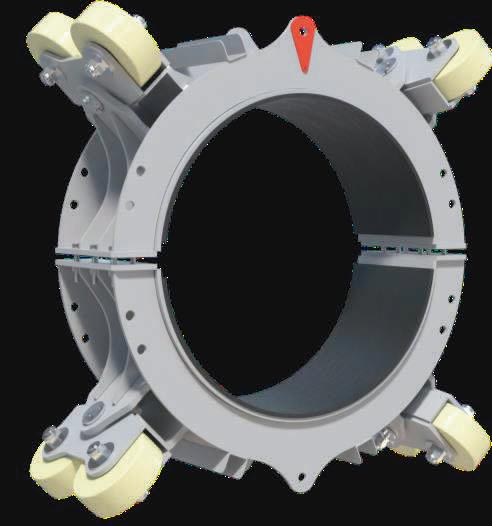

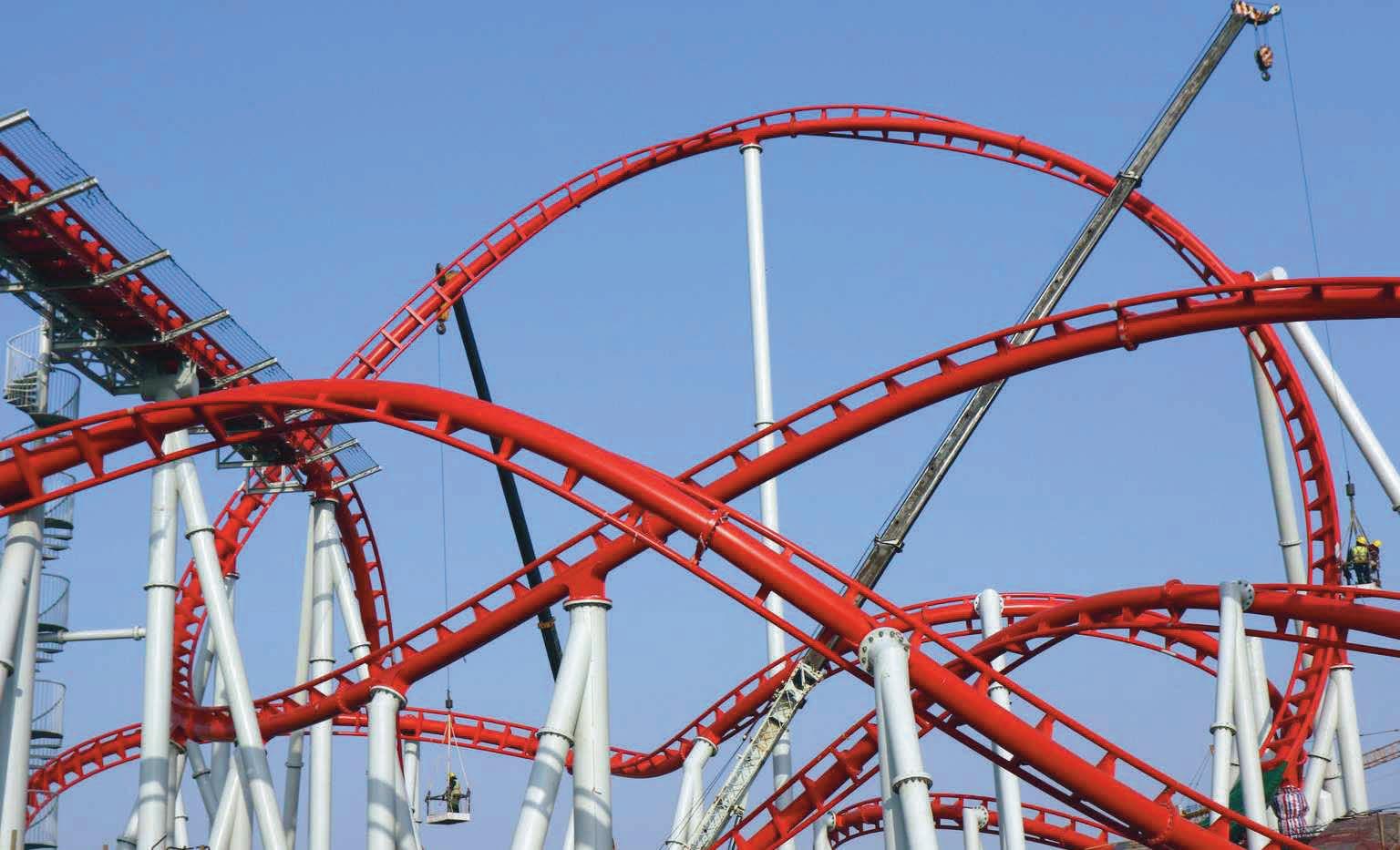
THE GAME CHANGER
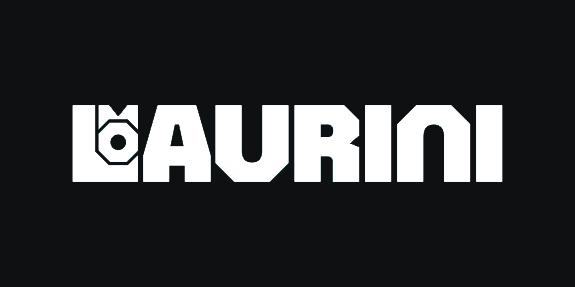





www.laurini.com
Is there a solution?
If there is significant uncertainty in field-crack sizing measurement, are the measurements worth taking? In short, the answer is yes, but there are several factors or options that need to be in place before these measurements can be used to understand ILI tool performance.

One way to manage this risk is to assume that the technicians have a general, acceptable level of competence from a review of procedural documentation and applying conservative tolerances to the field measurement. ROSEN’s field verification requirements document outlines the checks that should be in place to assume this basic level of competence. Once the document review is successful, conservative tolerances for various technologies can be used that have previously been suggested.1 However, this approach still assumes that the technicians are practically as well as theoretically competent. This may not be a justified assumption and, hence, non-conservative results may be acquired.
The preferred option is to understand the individual technician’s performance on the sizing of features with a predetermined procedure and process in order to apply a less conservative
tolerance with higher confidence. This tolerance can be calculated through a blind-trial assessment of technicians on representative samples, assessment of in-field sizing prior to destructive testing in the laboratory, or through in-field buffing of surface-breaking features.
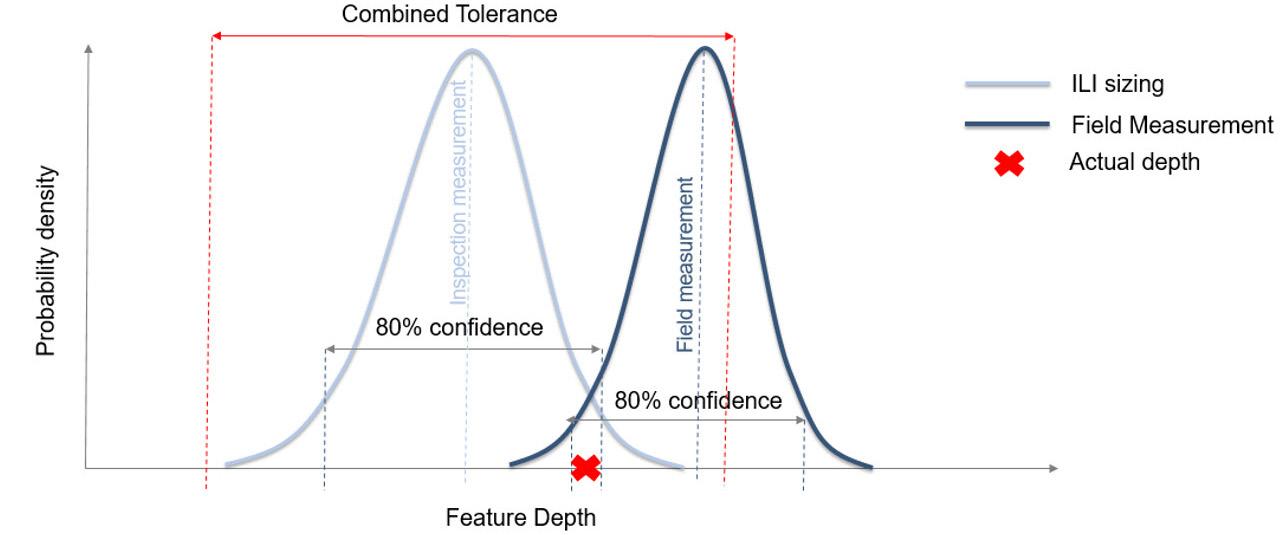
Do operator qualifications not guarantee quality?
Typically, in-field technicians should have qualifications that are managed and controlled by the requirements of ISO 9712 or ASNT, which ensures that technicians have a minimum level of competence to be able to use the equipment and be familiar with the technique. However, as NDT is a broad subject, these qualifications typically cover heavier-wall materials, while cross-country pipelines are usually thinner wall, which poses some unique challenges; plus, any error as a percentage of wall thickness is more significant. The exams also typically have a lower importance on the critical sizing element of the measurement and do not give a tolerance of inspection for the exam, which means that the technician sizing accuracy is still unknown following the qualification.
Until the criticality of the accuracy of the measurement is acknowledged within the pipeline industry, and there is a move towards understanding individual inspector performance assessed by a centralised body, the responsibility for understanding technician competence remains with the pipeline operator, who must request evidence of performance or test for it.
How to test competence
Artificial defects can be created with high levels of sizing accuracy in representative samples in order to understand technician competence in blind trials. These can also be used by the technicians in-field as reference blocks for improving sizing accuracies.
An efficient way of proving technician competence but also validating run-by-run performance of ILI tools is by manufacturing and implementing validation spools. These are typically spools of the same diameter and wall thickness as the pipelines being
Figure 2. Combined tolerance of inspection.
84 World Pipelines / AUGUST 2023
Figure 3. SCC cracking cross-section with PAUT data superimposed.
FOR 40 YEARS, WE’VE BUILT THEM RUGGED SO YOU CAN RELY ON THEM TO PERFORM
Dairyland Electrical Industries is the world’s leading manufacturer of solid-state decoupling products for the corrosion protection industry. We’ve been making rugged and reliable products since 1983. After 40 years in business, 99.99% of them still work.

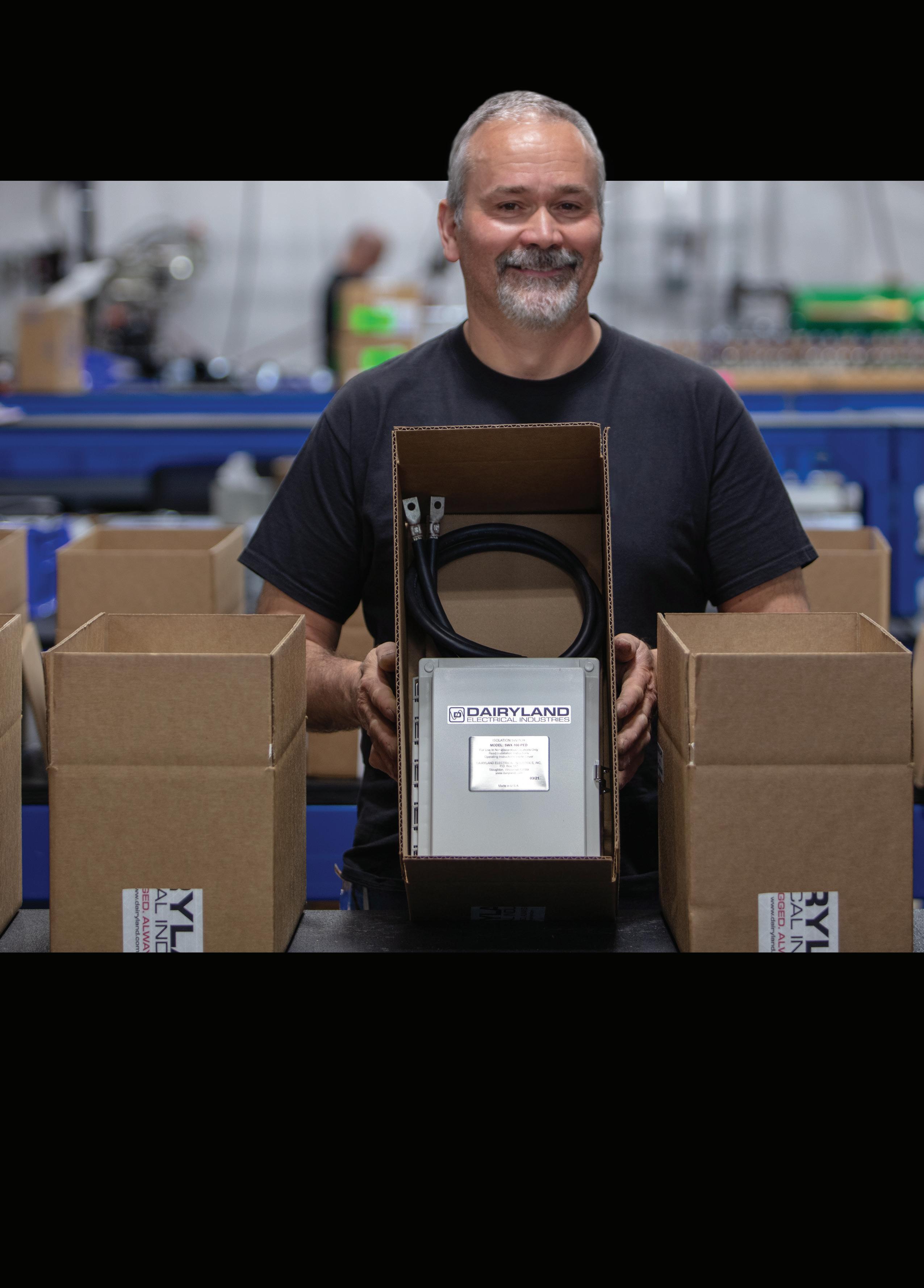
Learn more about our Always Rugged Promise: Dairyland.com /AlwaysRugged
inspected by ILI; they have a number of representative features manufactured into them and are sized with a high degree of confidence. This allows technician performance to be benchmarked against a depth value with high confidence under blind trial conditions. These spools can then tie into the pipeline loop so they can be measured during the ILI inspection under live conditions to understand inline performance – as opposed to relying on the pull-through data or only field data. It is unlikely that synthetic defects will ever be able to truly replicate the complexities of natural features, but advances in manufacturing techniques can produce highly realistic crack-like defects, as well as notch-like defects produced by EDM.

Once a statistically significant sample of defects of a known size has been validated, probability of detection and sizing tolerances can be calculated. This will allow for a comprehensive understanding of operator competence and tolerance, ideally before getting into the ditch. Classification of features using NDT methods remains a very challenging topic. Realistically, for high-confidence feature classification, metallography is still a necessary evil.
Validating tool performance

Once there is an understanding of in-field technician competence and tolerance, the data used for the validation of ILI system performance has more clarity and will increase the confidence in ILI system performance.
There are still factors that the blind-trial process cannot control, such as the human element of the inspection (mood,
weather, aliments, etc.), which can affect the calculated tolerances from blind trials usually held in laboratory conditions. As the human factor cannot be accurately quantified, the tolerance from the blind trial is probably the most appropriate starting point, because assuming a more conservative (wider) tolerance for the field measurements may result in some ILI features being assessed as acceptable. And that means integrity decisions may be non-conservative overall.
Conclusion
Understanding in-field competence and tolerance is a critical part of validating ILI system performance, particularly for crack sizing. But it is not always done in practice, possibly misrepresenting the actual situation of the pipeline and leading to integrity choices that could be overly conservative or, conversely, unsafe. The benefit of considering the measurement accuracy of all involved systems has been explained. It is important to establish a process to ensure that all sources for tolerances are discovered and considered. For now, the most efficient way to understand the quality of the field verification while validating ILI system performance is the manufacturing and installation of validation spools with artificial defects. The goal: to build an industry where high-quality field data is widely tested and valued.
References
1. OLDFIELD T., FOWLER, S. TORRES, D., “Tolerance of ILI Validation Inspections, Why Is It Important, and How to Reduce It,” Pipeline Pigging and Integrity Management Conference, No.2023.127:43, Houston, Texas, February 2023.
Anti-corrosion coating failures are a significant factor in the reduced operational life of pipelines, says Dinko Cudic, Business Line Director, Seal For Life Industries, the Netherlands.
In the endless fight against corrosion, where we seek to extend the life of assets that initially had a fixed lifetime but now need extension, corrosion protection must go further and include prevention. Constant doubts over coatings performance and the blame game over who is at fault – manufacturer, contractor or timeframe to

87
Figure 1. Pipework remains protected in case of mechanical damage or environmental conditions.
complete the job – can sacrifice quality too. Can coating manufacturers create something that will satisfy both the contractors and end users at the same time? Of course they can, but will these new innovative technologies meet the stringent standards and approvals? That is the flip side of the coin.
It’s easy to stop corrosion or decay of the material, eliminate the oxygen and water/electrolyte, and we break the corrosion cell that leads to electrochemical corrosion. This is done by placing a barrier over the surface to be protected and blocking it from the environment. This is often done in the food processing industry by vacuuming groceries to be kept fresh for extended periods of time. Such ways do not offer adhesion to the surface but still have the functionality, such as a method used in the water industry known as polyethylene encasement for ductile iron, or ‘sleeving’.
In the past, conservation was done by keeping moisture away from wood and steel using fat, wax, tree sap or honey. So, whether using advanced impermeable barriers like PE or PP, or more rustic solutions like honey, they all create encapsulation of the material and therefore prevention of decay. In the following cases, the analogy of honey certainly works as it does not age or crack, and offers superior adhesion to the surface.
Obviously, the point is not to protect the corroding steel with honey, but instead use polymers that behave in a similar way by avoiding sagging. To give it a proper ISO 21809-3 standardised term; a non-curing, non-crystalline and fully amorphous low viscosity polyolefin coating. A coating offers immediate and constant full wetting of the surface, creating a barrier that blocks oxygen and water, thus avoiding corrosion. The non-crystalline part is based on a glass transition temperature of lower than -60˚C (-76˚F). The compound structure is not able to crosslink, leading to nonageing and therefore a barrier that can meet or exceed the life of the protected material.
This kind of approach opens new possibilities in protecting not only new projects but also existing and aged assets – specifically buried pipelines and components found in remote areas, and distant locations where accessibility is a challenge. Accessibility is also being challenged by the changing environmental conditions in harsh winters, rain seasons or extreme heat in desserts.

Conventional or existing coatings are generally found to be broken down due to ageing, sagging, and flaking, and in some cases even contain lead, chromates or asbestos. None of these toxic materials tend to cause an issue whilst in service, but removal and subsequent storage is another issue that impacts those tasked with transporting it, as well as the environment.
Technology
An integrated approach based on a non-crystalline, fully amorphous and non-crosslinkable anti-corrosion system was the starting point of the idea to use this visco-elastic material as the anti-ageing corrosion prevention system. The invention was based on the fact that the polymer already contains a sufficient set of intrinsic properties as a barrier; pure Polyisobutene (PIB), has proven to be the material of choice, containing between 180 - 650 isobutene units in a polymer chain, having only covalent bonds and containing only hydrogen and carbon. This polymer chain cannot be cross-linked and will remain as a single polymer chain for a lifetime, and leads to an interesting effect called ‘cold flow’. Even at a very low temperature, the pure polyisobutylene will, over time, creep into structures of substrates like steel, alloys, polypropylene, polyethylene or epoxy coated substrates, by removing loose rust or flaking coating.
Molecular adhesion instead of mechanical interlocking
The material will permanently remain uncured and tacky, remain resistant to weathering and chemical attack, and stay impermeable to moisture, water vapour, air and bacteria. These properties maintain at operating temperatures of -45 to 95˚C (-49 to 203˚F).
The non-polar, non-crosslinkable liquid-like polymer having a glass transition temperature lower than -67˚C (-89˚F) exhibits very low surface tension, resulting in viscoelastic behaviour. It is impervious to moisture and gases which give it the advantage that corrosion cannot occur
88 World Pipelines / AUGUST 2023
Figure 2. Simple and easy to install solution providing long-term corrosion protection.

2313 boulevard de la Défense, 92000 Nanterre – France +33 (0)1 57 60 93 21 contact@hdi.fr / www.hdi.fr HORIZONTAL DRILLING INTERNATIONAL
OF PIPELINES AND
ALMOST
TRENCHLESS INSTALLATION
DUCTS UNDER NATURAL OR ARTIFICIAL OBSTACLES YOUR TRUSTED HDD PARTNER FOR
40 YEARS
Proud to deliver technical expertise and global quality on turnkey solutions for all trenchless challenges
beneath the surface, theoretically, even without adhesion. Due to its high electrical resistivity, it is ideal for use in conjunction with cathodic protection when used in underground applications, since it will lower the current required for protection but also isolate from stray current issues.

Adhesion tests of the anticorrosion compound on ST2 prepared steel, polyethylene, polypropylene, coal tar enamel or other coatings show cohesive fractures. Furthermore, as the internal coating remains liquid even far below 0˚C (32˚F), any breach in the mechanical top layer causes the inner layer to flow out and ‘self-heal’ the top layer, therefore eliminating concerns with maintenance or premature failure.
The coating forms a monolithic coating over time as it flows into itself, thereby preventing ‘tenting’, which has been an industry issue when using traditional wrap and sleeve coatings, not just at overlaps but also seam welds. A homogeneous layer without air enclosures is formed, creating skin-like behaviour working with the expansion, contraction, and torsion of the protected asset.
Wetting
Wetting is a key factor when trying to achieve adhesion between product and surface. It has been proven many times that the best adhesion is achieved by brush application as the bristles would push the liquid coating into the pores of the surface. The liquid coating therefore creeps better into the pores of the surface during its viscous phase: slower drying gives more flow, anchoring itself to the rough surface to maintain mechanical adhesion once cured.
Modern trends, when it comes to coating applications, are airless spray and use of fast-curing liquid coatings. This
raises concern that by increasing productivity, we have sacrificed wetting. It can theoretically be true that the pressure from the spray gun should force the coating into the pores, which surely depends on the pressure at which coating is applied, as well as distance from the structure. The wetting phase, however, is cut short due to speed of curing, creating shrinkage and thinning of the coating by evaporation of volatile organic compounds (VOCs).
Having a coating that is constantly wet would lead to constant adhesion but also to impregnation of loose micro particles on the surface that have the tendency to interfere with adhesion among the coating that cures quickly and turns solid.
Out in the field
Apart from rehabilitation, where it is very difficult to achieve the same coating lifetime as when it was newly installed, it is important to always consider the following formula in both new build and rehabilitation: Materials cost + application cost + maintenance cost + hidden cost.
Taking this formula into consideration, a low-cost coating would not necessarily provide long-term savings. We can also consider that high value coatings may have high application cost due to application equipment complexities, creating a thin line between win and lose.
Hidden costs can play a big role when it comes to health, safety and environment (HSE) as many items may not be foreseen. By looking at the whole picture rather than itemising it, the cost can vary drastically.
Challenges
There is a standardised approach to rehabilitation work and things to consider:
) Timeframe and weather or season consideration.
) Right of way and accessibility to remote locations.
) Logistics of delivering equipment and personnel to the location.
) Installation of safety barriers or habitats with climate control.
) Degreasing and removal of chloride contamination.
) Removal of existing coating by abrasive blasting, water jetting, power tooling or hand brushing.
) Application of the coating system – at least two layers.
90 World Pipelines / AUGUST 2023
Figure 3. STOPAQ complete protection system for underground installations.
We are running out of space...
Our inventory in sales & rental in pipeline equipment is out of this world. We have a huge amount of machines from all the big brands that are ready for worldwide delivery, or even further if you want...
You can build on BAUMA!
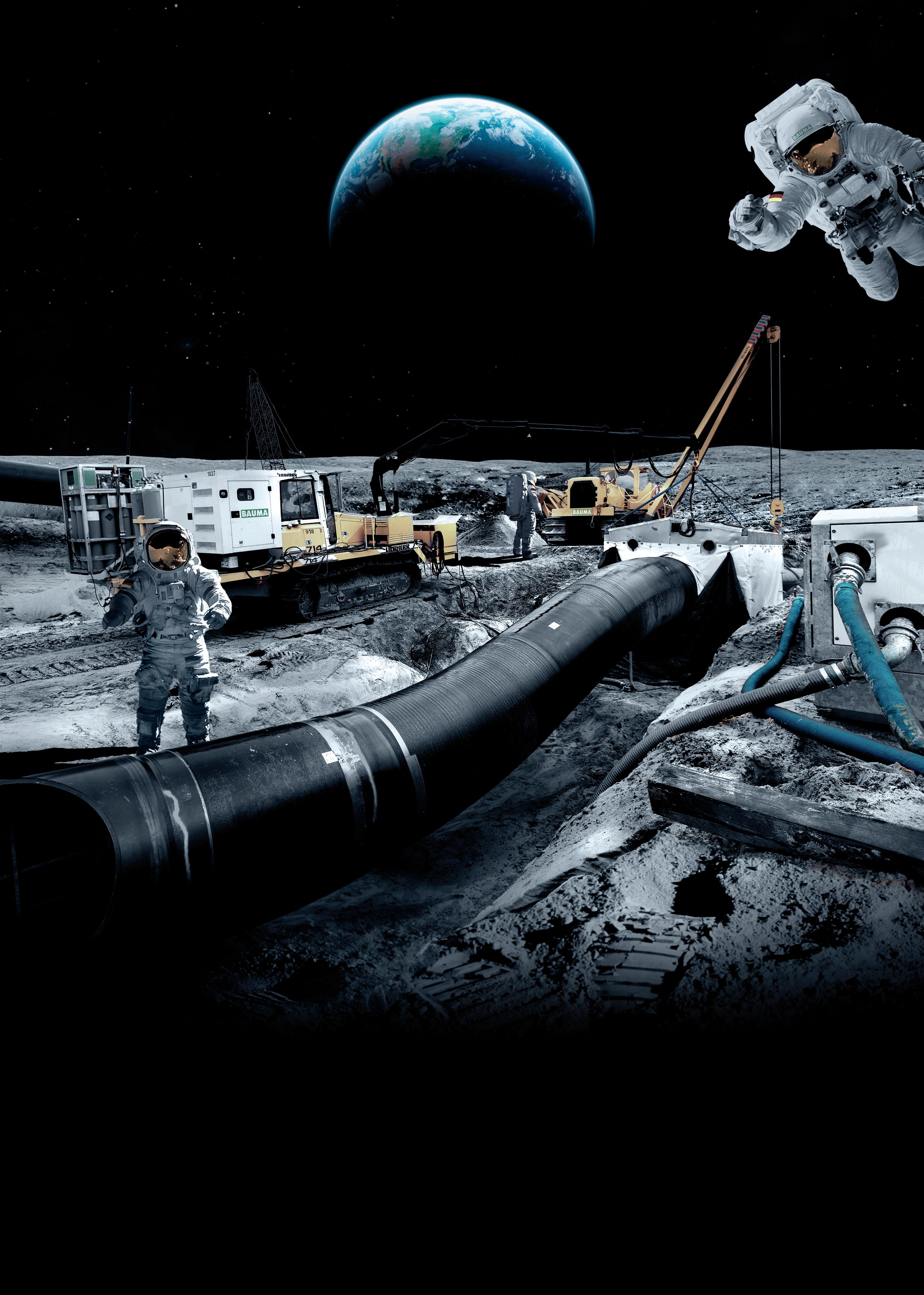
und Handels GmbH
BAUMA-PIPELINE.COM Vermiet-
) Clean up, filtering of removed coating from abrasive, waste segregation.
) Removal of scaffolding.
Preference for a production plant would of course be that a job can be done without hassle and without a shutdown, no blocked areas, and no fear of abrasive media getting near sensitive equipment like pumps and other moving parts.
The preferred scope would be towards the following:
) Limit amount of scaffolding and barriers.
) Limit personnel due to HSE and evacuation plans.
) Limit or prevent the need for abrasive blasting.
) Application not limited to surface or ambient temperatures.
) Reduce waste and impact on the environment.
Solution
The solution; remove loose and scaling rust and nonadherent existing coating. The following process has been achieved:
) Surface preparation to St2 or St3.
) Water jetting to remove loose material.
) Application of Wrappingband and Outerwrap.
) Clean up, segregation of recyclable waste, paper and PE.
Considering the formula mentioned earlier, and seeing the complete cost during the rehabilitation phase, the solution demonstrated here showed initial savings on the project of over 40% for a complete solution, which will extend well beyond the lifetime of the original encapsulated coating.
Total cost of ownership
When the adhesive strength of a material is in the same range or higher than the cohesive strength, whenever you try to remove the coating in a wrap form, a certain portion of the coating material will always fully remain as a film on the surface of the metal pipe substrate, further protecting the pipe in case of mechanical damage or external forces like soil stress.
The cost of this system is currently extremely attractive to end users when compared to traditional coating systems. Due to the trend of outsourcing technical control and inspection by major companies and field repair costs, demand for failure-proof systems is high and competition from traditional products is being eroded by a growing acceptance of the PIB-based technology by end users. It is common knowledge that no traditional anticorrosion system completely meets the needs of the end user.
Traditional products are specified because they are deemed to be the ‘best that are available’, or sometimes just what has ‘always been done that way’. What’s more, the use of many traditional coating products is being maintained due to a failure of the end users to properly research and investigate the newer technologies available, and therefore adjust the approvals accordingly. The facts are that the PIB based coating technologies can provide end users with anti-corrosion coatings as rehab systems with:
) Much stronger physical properties, providing the end user with longer return on investment.
) Less maintenance and reduced costs over time.
) Reduced instance of damage during service due to selfhealing properties.
) Highest levels of corrosion resistance.
) Higher levels of chemical resistance.
) Higher process temperature ranges.
) Faster and easier application and installation without need for special equipment and operator skills.
) Encapsulation of existing adherent coatings.
) Compatibility with cathodic protection.
) Minimised coating breakdown factor.
) Lower surface preparation and application costs.
Conclusion
Anti-corrosion coating failures are a significant factor in the reduced operational life of pipelines. The failure of a pipeline’s coating system accelerates corrosion and can result in leaks requiring repair, clean up and, in some cases, replacement of the pipeline and its components. The costs of repair and replacement are significant, as are costs associated with spill containment and clean ups. The cost involving environmental impact and negative publicity associated with failures are something every major oil and gas company seeks to avoid. The overwhelming evidence of this data clearly shows that traditional coating systems commonly utilised are not performing over the design life of the asset exhibiting consistent high failure rates, resulting in either major repair works or replacement of expensive distribution systems.
Apart from finding an initial solution to the ease of application, in correlation with the production process of a plant, without shutdown and with a system that does not age, you eventually increase the value of the asset. The asset is kept from ageing and degradation due to corrosion, thus making it safe from a HSE aspect, which in our modern world must be the highest priority.
92 World Pipelines / AUGUST 2023
INNOVATIVE AND CUSTOMIZED SOLUTIONS FOR EVERY CHALLENGE since 1958


WIDTH 2550 MM: STANDARD EUROPEAN TRANSPORTATION LIMITS, WITH COMPLETE ASSEMBLED MACHINE
HYDROSTATIC, VARIABLE SPEED ESCALATOR
TWO-SIDE BELT WITH HYDRAULICALLY-CONTROLLED EXTENSION

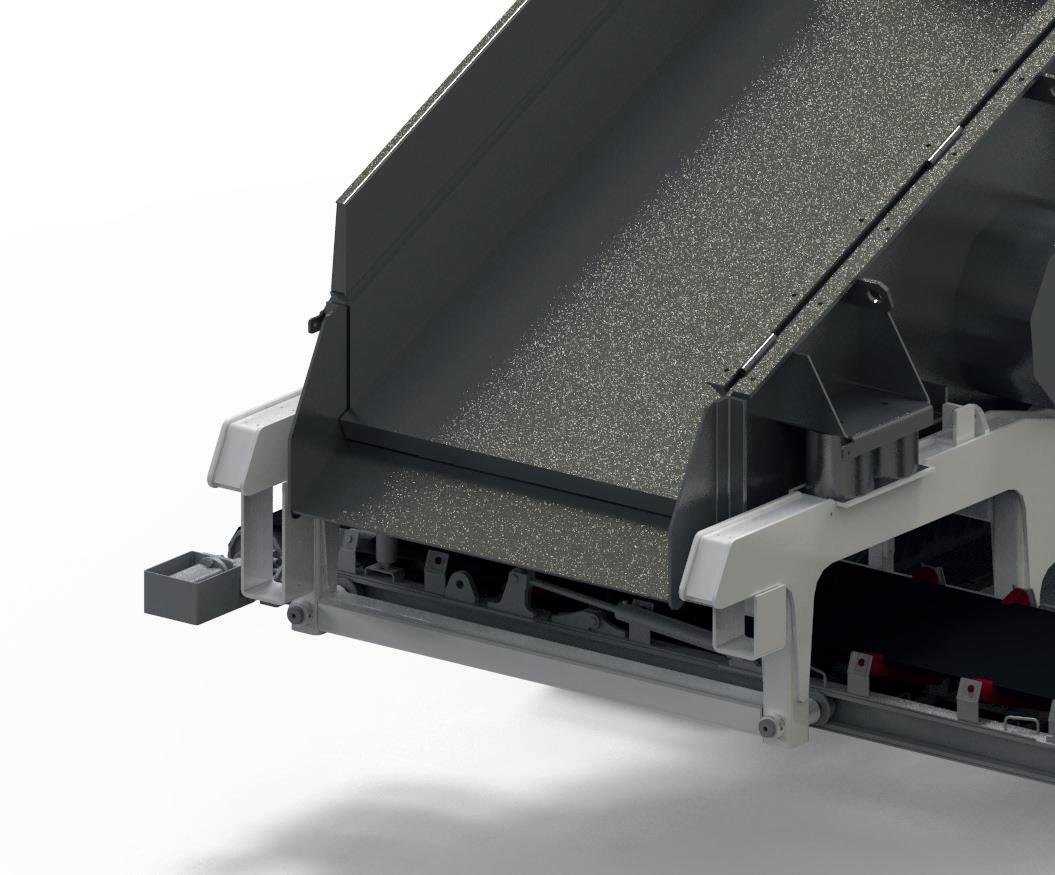

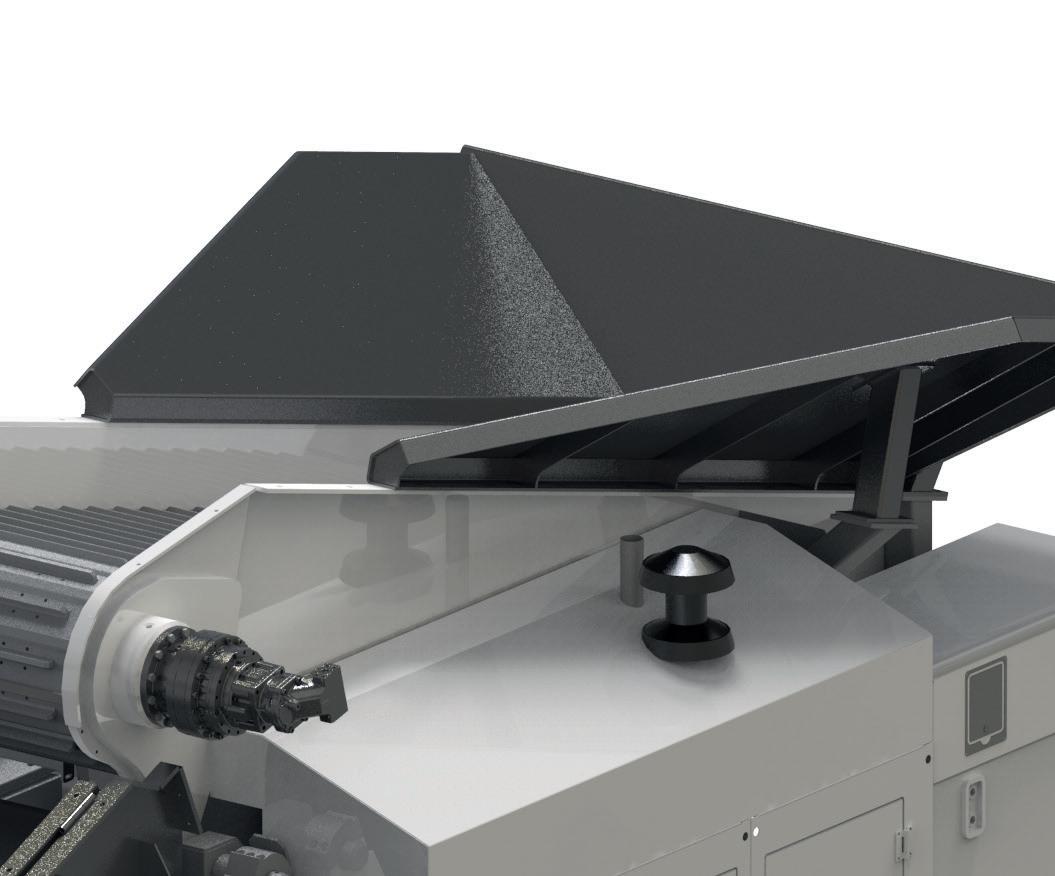

padding machine
www.scaipspa.com
Italy
spd - 140
Parma,
INFORMATION
HERE spd series 140 evo / 150 EVO / 160 EVO / 250 EVO / 350 EHD / 450 evo
FOR MORE
SCAN
Co-Hosts
VISITOR REGISTRATION IS NOW OPEN

Connect, Collaborate, and Accelerate Shaping the future of energy
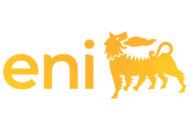
Gastech 2023, taking place in Singapore, is the largest global meeting place for natural gas, LNG, hydrogen, low-carbon solutions, and climate technologies, bringing together 40,000+ global energy professionals and 750+ international exhibitors.
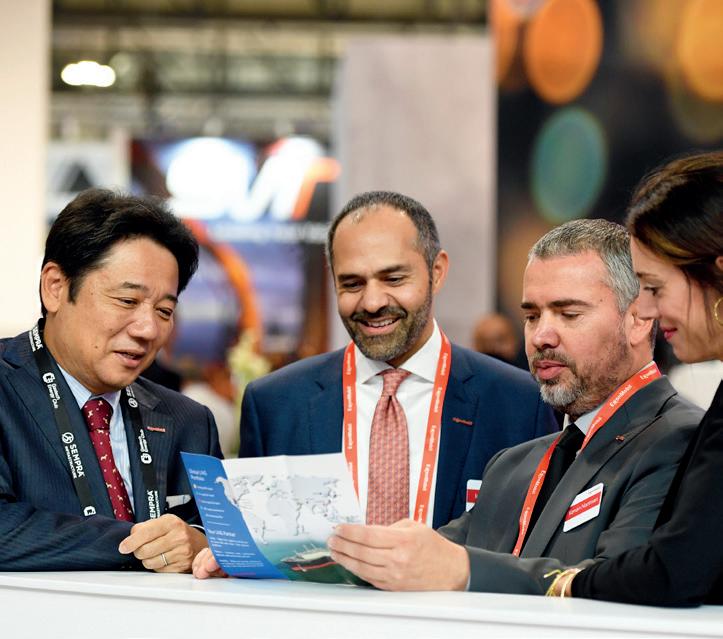
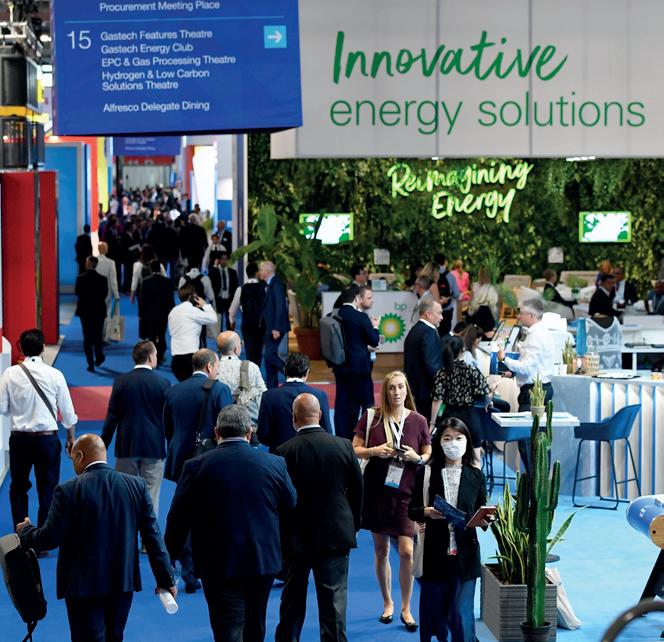

gastechevent.com @gastechevent #Gastech
40,000+ international attendees
750+ exhibitors 300+ CEOs, Ministers, and business leaders speaking


4,000+ delegates
600+ speakers
REGISTER FOR YOUR COMPLIMENTARY VISITOR PASS
100+ countries represented
Held in Supported by Organised by Gold Sponsors Partner Sponsors
Thomas Kaiser, Managing Director, DENSO Group Germany, considers whether PVC/bitumen or PE/butyl rubber is better suited for use in corrosion protection tapes.
Cold-processed polymer tapes are used all over the world either as welded joint coatings or complete pipe coatings for rehabilitation. For decades, there have been two different product designs, namely PVC/bitumen and PE/butyl rubber. But are these two versions equally well suited for use in corrosion protection tapes? Or is there a combination of materials that is more resistant and that can therefore provide the pipe with better long-term corrosion protection? Comparing the fundamental material properties of PVC/bitumen and PE/butyl rubber makes it crystal clear.

During installation and subsequent operation of the pipelines, the coating does not just need to withstand mechanical attack caused by movements of the pipe and traffic loads, it also needs to provide reliable protection under extremely diverse climatic conditions (Figure 1).
High-quality corrosion protection tapes need to maintain their flexibility even at low temperatures and need to have a high level of
95
impact resistance. The material needs to be thermally stable and elastic, allowing it to react to an applied force before failing (plastic deformation). Looking at these requirements more closely shows a significant difference in the intrinsic material properties of PVC/bitumen and PE/butyl rubber.
Bitumen is only used in two-ply tapes
First, the way in which cold-processed polymer tapes are fundamentally structured is of key importance. While PVC or PE are used as the backing layer, bitumen or butyl rubber are used for the coating layer that bonds to the pipe after the tape-coating has been applied. It’s important to note that bitumen is only used in two-ply tapes. There is no such thing as high-quality, three-ply tapes that have bitumen as the coating material. Three-ply corrosion protection tapes feature a stabilising PE carrier film with a coating on both sides that is only ever made from butyl rubber. This is an important first indication for the assessment of material suitability.
PVC: ageing effect by exuding additives
In order to use polyvinyl chloride (PVC) as a layer or film for corrosion prevention, additives are added to the hard and brittle material to make it soft and thermally stable. Thanks to these additives, which have a material share of up to 40%, PVC is flexible down to -18˚C (-0.4°F). The problem with this, however, is that the additives, and above all the plasticisers, are not stable, but instead are lost again over time. An ageing effect occurs as a result of exudation, meaning the carrier material becomes brittle and cracks occur in the material. This is also problematic from a corrosion-protection perspective. If PVC is exposed to higher temperatures, dehydrochlorination (i.e. the separation of hydrogen chloride) occurs from 80˚C (176°F). If this gas comes into contact with water, this will form hydrochloric acid, which is not only corrosive but also toxic. In order to curb or prevent this process, further additives such as thermal or UV stabilisers are also added to the material. Another detrimental effect is the risk posed to people and to the environment. If plasticisers get into the environment, this can lead to significant pollution of our groundwater. The source material for PVC, vinyl chloride, is also carcinogenic to humans.
In summary, PVC is less suitable as a base material for polymer tapes, because thermal stabilisers and plasticisers need to be added to the intrinsically hard material in order for it to be used in corrosion prevention. Because these additives do not have long-lasting resistance, a backing layer or carrier film made from this material would age and become brittle.
PE: flexible and temperature-resistant
Unlike PVC, polyethylene (PE) is flexible down to -40˚C (-40 °F) without any additives. As a material, it is very elastic while also being tough, so it can be deformed without breaking. These are important properties when filling a pipe trench, for example, when forces have an impact on the pipeline from the outside. PE also absorbs less water than PVC, does not require any thermal stabilisers, and has good insulating properties due to its high level of electrical resistance.
The properties of PE are temperature resistance up to almost 100˚C (212°F), good flexibility at low temperatures, and exceptional chemical and impact resistance. It also has outstanding tensile strength, is insoluble in organic solvents and does not crack under tension.
In conclusion, the fundamental properties of PE mean that the material is very well-suited for corrosion prevention tapes. Whereas PVC only achieves the desired properties with the addition of additives, PE already has these properties. Therefore, the evaporation of the additives, the resulting material ageing and the health risks seen with PVC do not apply to PE.
Bitumen: structural ageing unavoidable
When bitumen is used as a coating material for pipelines due to its adhesive properties, corrosion prevention experts often discover pipelines have to be repaired after a
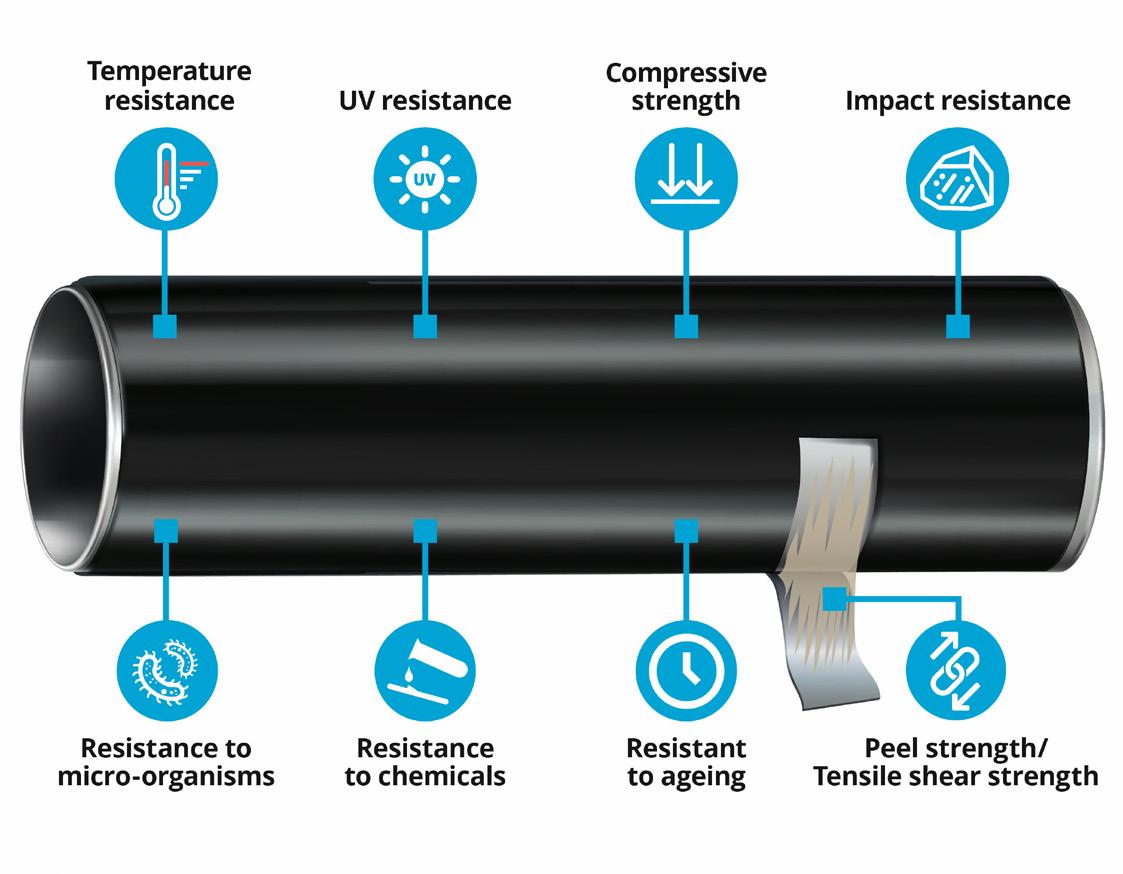
 Figure 1. Loads affecting the pipe coatings.
Figure 1. Loads affecting the pipe coatings.
96 World Pipelines / AUGUST 2023
Figure 2. Cracks in the coating due to aged bitumen.




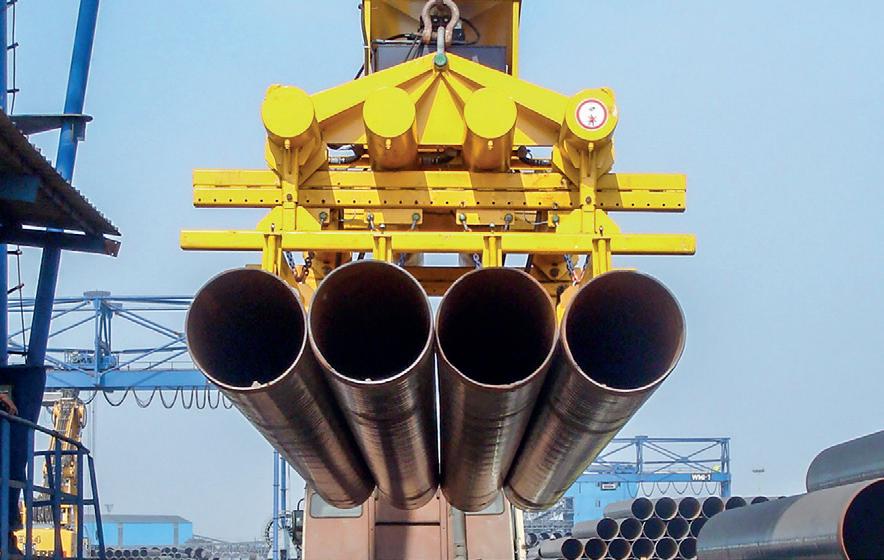



short period because the bitumen has become hard, brittle and porous.
But why is this process unavoidable? The problem occurs due to the structural ageing of bitumen. In order to know why this happens, it’s important to understand the chemical composition of bitumen.
Bitumen has what is known as a colloidal structure. A colloidal system, or colloid for short, refers to the fine distribution (dispersion) of a substance into another homogeneous and continual medium (dispersion medium).

The colloidal structure in bitumen is divided into a disperse phase (asphaltenes) and a coherent phase (maltenes). The asphaltenes (solid phase) are surrounded by oil resins, and form the micelles in the colloidal system. The temperature-sensitive maltenes (oily phase) are comprised of the oil resins and oils: in their original state, the asphaltene micelles are completely distributed and do not interact. But when bitumen ages, the micelles expand due to oxidation whereas the maltenes evaporate. The micelles clump together, form chain structures and take up a lot more space. During the ageing process, the solid phase gets bigger and bigger while the soft (oily) phase disappears. This results in the bitumen becoming hard, brittle and porous.
In summary, bitumen’s weakness is its structural ageing, as shown in Figure 2. The speed of the ageing process depends on the temperature and the source of the crude oil. The addition of additives (polymers) can slow down the process but can’t stop it altogether. The result is a porous coating and cracks.
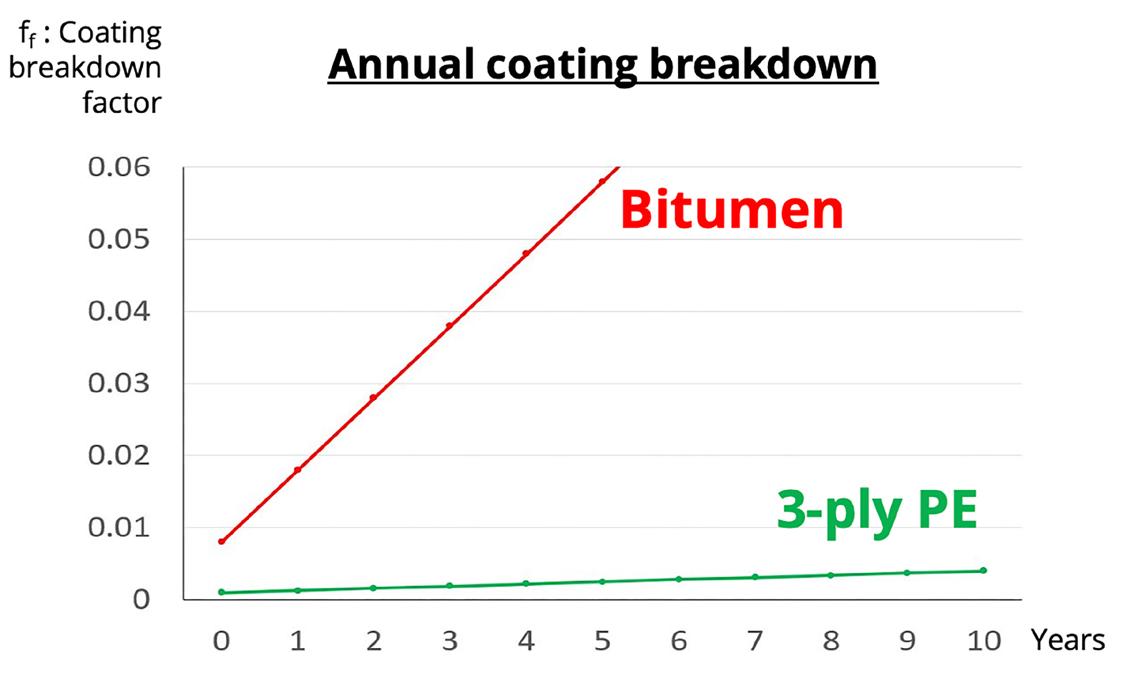
Butyl rubber: age and weather resistant
Butyl rubber is barely permeable to air, gases and moisture, and maintains its elastic properties even at very low temperatures, making it suitable for use down to -67˚C (-88.6°F). It is also resistant to ageing and weathering, suitable for use at very high temperatures, and has very good hardness and tensile strength characteristics.
The properties of butyl rubber are temperatureresistance up to almost 100˚C (212°F), and outstanding acid resistance. It is a flexible and malleable material, typically used for mastic, adhesive and sealants.
In conclusion, due to its fundamental material properties, butyl rubber is very well-suited for corrosion prevention tapes. If the comparison of the backing layer or carrier films found PE to be superior to PVC, then butyl rubber is superior to bitumen as a coating material. Whereas butyl rubber is resistant to ageing, the ageing process of bitumen itself cannot be stopped by the addition of additives. This results in the pipeline becoming porous in the long-term and needing to be repaired.


Durability and load resilience comparison
The problem of porosity in pipeline coatings is measured by their degradation and recorded by a coating breakdown factor (ff). Comparing coatings made from bitumen with those made from three-layer PE (3LPE) shows that the degradation factor of bitumen is much higher than that of 3LPE even right from the start, i.e. immediately after the
Figure 3. Annual coating breakdown.
Figure 5. Comparison of the properties of PVC and bitumen vs PE and butyl rubber.
Figure 4. Material behaviour of PVC/bitumen tape (left) vs PE/butyl rubber tape (right).
98 World Pipelines / AUGUST 2023
Figure 6. Cohesive separation pattern of a DENSOLEN® PE/butyl tape after 40 years of project use.
coating is applied. The degradation of the bitumen coating reaches 25 times that of a 3LPE coating after just five years, as shown in Figure 3.
The different behaviour of the different material combinations at higher temperatures has been recreated at 75˚C (167°F) during tests: the PVC/bitumen tape no longer offers any protection after just 26 hours, whereas the PE/ butyl rubber tape remains dimensionally stable and in perfect condition even after 100 days in storage (see Figure 4).
PE/butyl rubber: the more reliable option

From a historical perspective, tapes made from PVC/bitumen were initially a good choice because they could be given the properties necessary for corrosion prevention by the inclusion of additives. For longer-term project use, however, the product design is less suitable due to the problem of ageing and the increased level of environmental pollution: PVC requires plasticisers and stabilisers, which disappear as the product ages. Bitumen suffers from structural ageing, which makes it become hard, brittle and porous. PE/butyl rubber, on the other hand, already has the required properties and maintains them even over extended periods. PE is flexible and thermally stable, and does not require any additives. Butyl rubber has proven itself to be a stronger and more stable sealing adhesive. This product combination is undoubtedly more resistant, thereby providing the pipe with better long-term corrosion prevention (as shown in Figure 5).
Tried and tested over 50 years
In 1973, DENSO invented the world’s first co-extruded three-ply tape using PE/butyl rubber. The 50-year anniversary isn’t just a good time to highlight the material properties, but also a great opportunity to assess the long-term resistance of DENSOLEN® tapes in practice. A section of pipeline from the Isarschiene high-pressure natural gas pipeline in Germany, which was installed in 1976, represented a unique opportunity to put the tapes to the test. The section demonstrated very good bonding properties in the peel tests, even after 40 years of operation, as shown in Figure 6. The excellent quality of the DENSOLEN tapes was further emphasised by the cohesive separation pattern. The current standard requirements for corrosion prevention coatings were exceeded, even after four decades of use. PE/butyl rubber tapes are therefore able to prove their excellent suitability for corrosion prevention in practice too.
In the past ten years alone, DENSOLEN PE/butyl tapes have been successfully used over a square-meter area in the double-digit million range. The range of DENSOLEN tapes now includes 242 different products and is sold in over 60 countries. The DENSOMAT® wrapping devices have also been ensuring the simple, safe and efficient application of all DENSO tapes and tape systems for 50 years. They help the processor to consistently maintain the correct winding tension and the required overlapping width while doubling the processing speed compared to manual wrapping. The DENSOMAT wrapping devices have impressively proven their outstanding quality in major projects involving 24 hours of continuous application. All round the world, they are synonymous with high processing quality and cost-effective application.


Decarbonising. Faster. Together. ADIPEC, the world’s largest energy exhibition and conference, brings together the ideas, ambition, technology and capital needed to accelerate the urgent, collective and responsible action that can decarbonise and future-proof our energy system.
United Arab
2-5 October 2023 Abu Dhabi, UAE ADIPEC
160,000 Energy professionals 15,000 Conference delegates 54 NOCs, IOCs, NECs and IECs 350 Conference sessions 30 Country pavilions Conferences 10 2,200 Exhibiting companies 1,600 Conference speakers Register as a visitor Register as a delegate www.adipec.com Supported by ADIPEC brought to you by Host city Knowledge partner Technical Conference organised by Strategic insights partner Venue partner Official travel partner Official hotel partner Partners Gold sponsors Platinum sponsors
Under The Patronage of H.H. Sheikh Mohamed Bin Zayed Al Nahyan, President Of The
Emirates
in Numbers
Andre Rose, Technical Adviser, International Marine Contractors Association (IMCA), UK, considers the role ROVs play in subsea pipeline inspection, and highlights the importance of training and competence.
OVs are used in virtually every area of subsea engineering. They are essentially mobile platforms, on which various sensors and tooling packages can be mounted and deployed from, to facilitate a wide range of often hazardous tasks in support of subsea engineering, inspection, survey, intervention and maintenance activities.
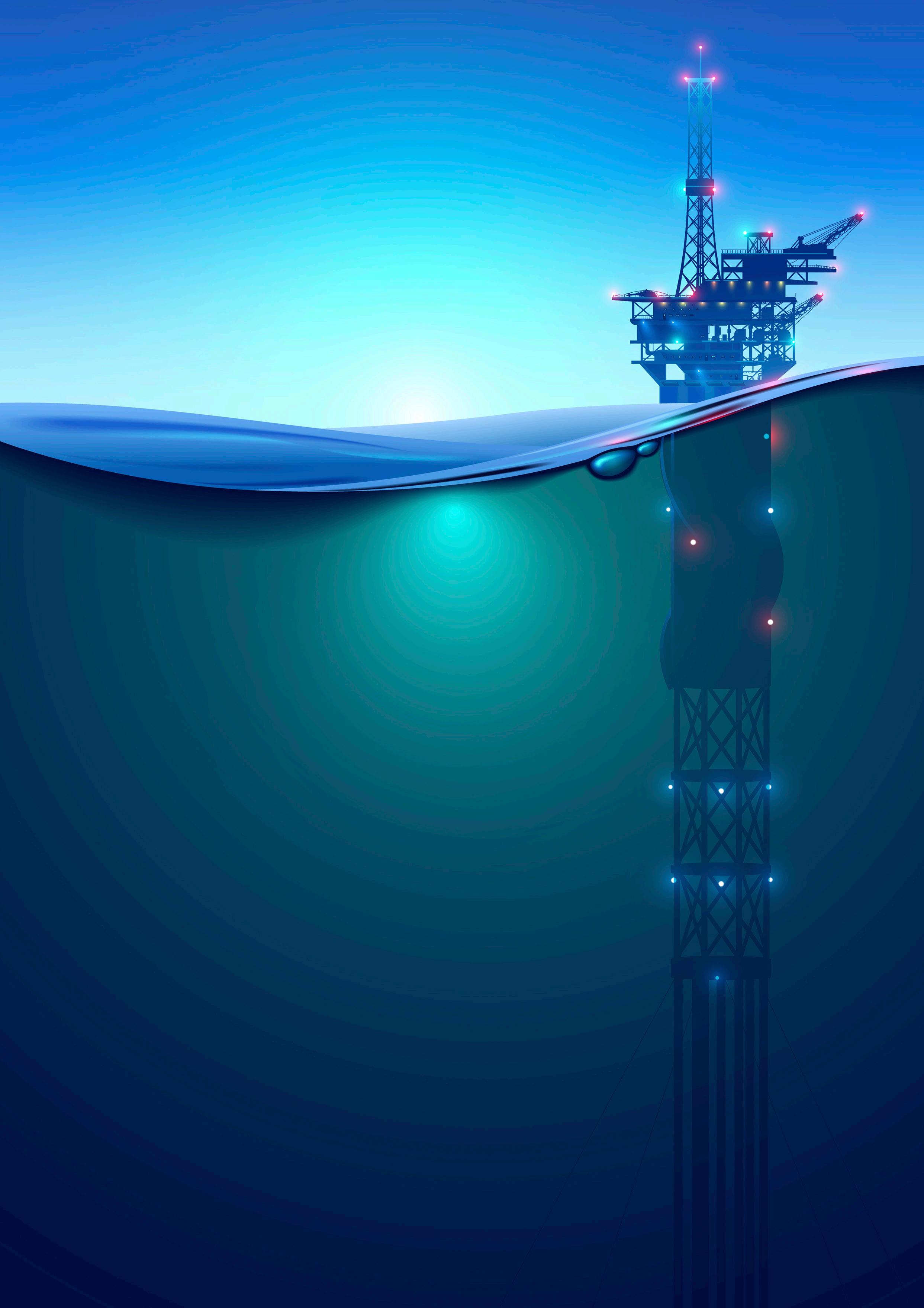
In their simplest form, they provide ‘eyes’ on workplace assets. In more advanced roles, however, they can be highly complicated yet efficient machines able to gather many different forms of data for a more complete assessment of subsea assets. The sensors fitted enable the ROV to be accurately navigated and positioned to execute tasks, while others ensure data and images are gathered providing an accurate recording of position, material, and environmental states. All of this information provides subsea engineers the ability to identify any necessary maintenance or rectification work.
Safety, competence and ROV operations

ROVs play a vital role in most subsea engineering work scopes and, like all other areas of the offshore industry, require compliance with some of the most rigorous safety standards on the planet. These standards are central to the work of the International Marine Contractors Association (IMCA), which has been bringing the industry together for more than three decades to create guidance and standardise approaches in the offshore sector.
No offshore ROV operation takes place without thorough and rigorous safety assessments. During this process, potential risks and hazards are identified, assessed and mitigations introduced to reduce the likelihood of them escalating to become an incident, accident or, at worse, a fatality. The final safety assessment is just one part of a larger safety process which begins long before any pipeline is designed, or any equipment installed.
Key to any offshore operations is the availability of experienced, trained, and competent personnel; and the safety process starts with their learning, knowledge, and training. This industry learning is supplemented by their professional experience and being assessed for competence in their roles as they advance through their careers.
101
To support this, IMCA has produced a range of industry-wide recognised guidelines which are applied to ensure the competence of offshore personnel in the diving, marine, survey and ROV specialisations.
These industries are no strangers to rigorous highly governed practices. The contents of the IMCA documents, when followed, prescribe a thorough induction and advancement through the various seniority levels for the operation and maintenance of ROVs and their associated equipment.
Evolution of ROV pipeline inspection
As with its land-based counterpart, the most stable form of subsea pipeline is buried and firmly supported in the seabed, though burial is not always practical or possible. The loss of integrity of a pipeline – especially one carrying hydrocarbons –
Personnel training and competence related guidance
) IMCA R002 – Requirements for IMCA-approved ROV introductory training courses.
) IMCA R010 – Guidance on module outlines for ROV related training courses.
) IMCA C002 – Guidance on competence assurance and assessment marine division.
) IMCA C003 – Guidance on competence assurance and assessment dive division.
) IMCA C004 – Guidance on competence assurance and assessment survey division.
) IMCA C005 – Guidance on competence assurance and assessment ROV division.
) IMCA C011 – Outline syllabus for training of personnel in supervisory positions.
would be an environmental disaster, so every effort is taken to avoid this through a range of maintenance activities, supported by ROVs, across the pipeline’s life.
Generally, the failure curve of a pipeline follows the ‘bathtub’ principle, where ‘burn in’ failures, caused by manufacturing errors or failure due to damage during installation will occur. The pipeline will remain in the ‘useful life’ area of the curve until the ‘wear out’ period begins towards the end of the pipeline’s useful life caused by age, fatigue or corrosion.
The reason that we inspect subsea pipelines is that they are prone to:
) Impact damage, from dragged anchors, fishing trawler boards or dropped objects.
) Subsidence of the seabed may leave the pipeline unsupported, unstable and the metal can become stressed.
) Fatigue from changing stress levels, which may be temperature related.
) Corrosion.
) Damage where crossing other pipelines.
Visual inspection is the most basic method used subsea and this will be either general visual inspection (GVI) or close visual inspection (CVI). The main difference is that the GVI inspection is carried out ‘as found’ whereas a CVI may require the removal of marine growth using brushes, scrubbers or water jets.
In a GVI, the ROV would fly to the area of interest and record video and still images of the pipeline. Any anomalies, or damaged areas, identified by qualified inspection engineers, would be highlighted as potential areas of damage and recorded for further assessment. In a CVI it is likely that some form of non-destructive testing (NDT) would be required on the pipeline to confirm assessment.

Another important inspection parameter method is cathodic protection (CP) measurement, where the level of protection afforded by sacrificial anodes, attached to the pipe or structure, is assessed by monitoring the voltage measured, by either contact or proximity probes, attached to the ROV.
Ultrasonic thickness (UT) testing is another way of assessing the material state of a pipe. A comparison of the original wall thickness and the current thickness, measured by an ROV mounted UT gauge, will highlight any loss of material and flag potential problems.
One more useful technique for detecting defects in pipes is the alternating current field measurement (ACFM). Used mostly around welded joints, this is an ROV-mounted probe which can detect cracks.
In practice, several of these techniques can be combined, but it is highly likely that an ROV engaged on these types of inspections would use a series of cameras on moveable arms to obtain images from the side and lower areas of the pipe. A profiler system, similar to a SONAR system, would be used to determine if the pipeline is supported or in free span, and a pipe tracker system to allow the pipe to be followed while buried.
102 World Pipelines / AUGUST 2023
Figure 1. Diving for a pipeline inspection on the Bukha A field in Oman.
Advanced pipeline inspections
Fast digital imaging inspection (FDII), sometimes known as fast digital imaging (FDI), is a relatively new method of improving the performance of an inspection campaign. Using advanced imaging packages has accelerated pipeline inspection and, as a consequence, reduced the time taken to complete the operation. For instance, Subsea7’s FDI enables faster data acquisition with higher quality, faster, image data acquisition resulting in a vessel being required for fewer days.
The use of powerful machine vision (MV) imaging processing methods and machine learning (ML) models when combined with efficient automated workflows has enabled Subsea7 to standardise their operations and created consistently faster and higher quality data output.
BP views FDI as their current ‘preferred’ method of performing underwater asset inspection. Some of the reasons given are that FDI:
) Captures high quality images (in place of video) synchronised with high intensity pulsed lighting.
) Can be deployed in conjunction with field gradient CP systems.
) Acquires data at up to 8 km/hr in a single pass which is then processed and reviewed after the acquisition cycle.

) Can be configured for GVI or fast GVI by simply adjusting sensor configuration and geometry.
) Is ideally suited for fast ROV, AUV, WROV or –potentially in the future – remotely operated combination uncrewed surface vessel (USV) or underwater vehicle systems.

) Is ideal for automated event and anomaly identification and classification.
Besides the advantage of more efficient operations, the environment benefits hugely too, with BP highlighting that FDI supports their low-carbon initiatives. FDI has saved 62 vessel days, which equates to a saving of 2052 t of CO2. They also highlight the opportunities to grow these savings with increased integration with USV/UV technology.
Recent innovations
An interesting solution to pipeline inspection was proposed by three French companies in 2020; Vallourec, Forrsea and iXblue. They proposed installing a series of locator barcodes on a pipeline which can be read by AUVs or ROVs, using Forssea’s cameras and iXblue’s inertial navigation system.
This allows for vast amounts of relevant data about the pipeline to be gathered, including the pipeline’s general aspect and route, anode degradation, areas of burial, freespan and crossings. Such innovations will help remove the need for conventional vessels and accelerate the transit to USV and MASS type vessels by removing the need for costly, accurate location and positioning systems.
The future of pipeline inspections
There are several new technologies, either recently developed or currently in development, which will bring additional safety, efficiency, and cost improvements to many areas of subsea operations, including pipeline inspection. Innovations such as remote operations/piloting – where the operating and monitoring crews of ROVs, AUVs and USVs is situated remote from the asset being controlled – will further enhance efficiency of operation.
Usually, the operators will be located in a remote operations centre (ROC) or remote-control centre (RCC) onshore, although it could also be on another vessel. Future seabed resident systems will also be considered as remote operations.
According to the Journal of Petroleum Technology (JPT), “subsea pipeline inspection is ripe for faster robots and artificial intelligence to make their mark.” This is a view mirrored by many in the oil and gas industry. Calum Shand, a Senior Operations Surveyor at Shell, says “computer power has never been cheaper, and today we’re on the cusp of an artificial intelligence and robotics revolution.”
The combination of remote piloting and RCCs will facilitate remote survey and inspections. These, combined with advances in FDI, advanced 3D imaging, and ML will lead to even more efficient inspection techniques. We expect USVs and later, marine autonomous surface systems (MASS) to eventually replace conventional surface vessels for these pipeline inspections.
Figure 2. The bathtub curve.
Figure 3. Artist impression of the ‘Barcode’ system in use.
AUGUST 2023 / World Pipelines 103
ADVERTISERS’ DIRECTORY
Advertiser Page 3X ENGINEERING IBC ADIPEC 100 BAUMA 91 CAPPLINE 67 Challenger Services 99 Corinth Pipeworks 30 CRC-Evans 4 Curtiss-Wright 7 Dairyland Electrical Industries 85 Darby 55 DeFelsko 24 Delta Machinery bound insert DENSO GmbH 77 Denso Inc. OFC, 37 Electrochemical Devices, Inc. 41 Euro Pipeline Equipment 2 Gastech 94 Girard Industries 86 Horizontal Drilling International 89 Intero Integrity Services 33 IPLOCA 18 Laurini 83 Ledcor Pipeline 34 Lincoln Electric 57 Advertiser Page Maats B.V. 45 Max Streicher 75 MetriCorr OBC Michels Corporation 61 MONTI-Werkzeuge GmbH 65 Pigs Unlimited International LLC 29 Pipeline Inspection Company 53 Propipe 47 Qapqa 27 ROSEN IFC SCAIP S.p.A. 93 Seal For Life Industries bound insert, 71 SICIM S.p.A. 79 SPE Offshore Europe 72 SPT Congress 80 Stark Solutions 13 STATS Group 9 Suxxesion 97 T.D. Williamson, Inc. 17 Tesmec S.p.A. 62 Vacuworx 68 VIETZ GmbH 23 Worldwide Machinery 21
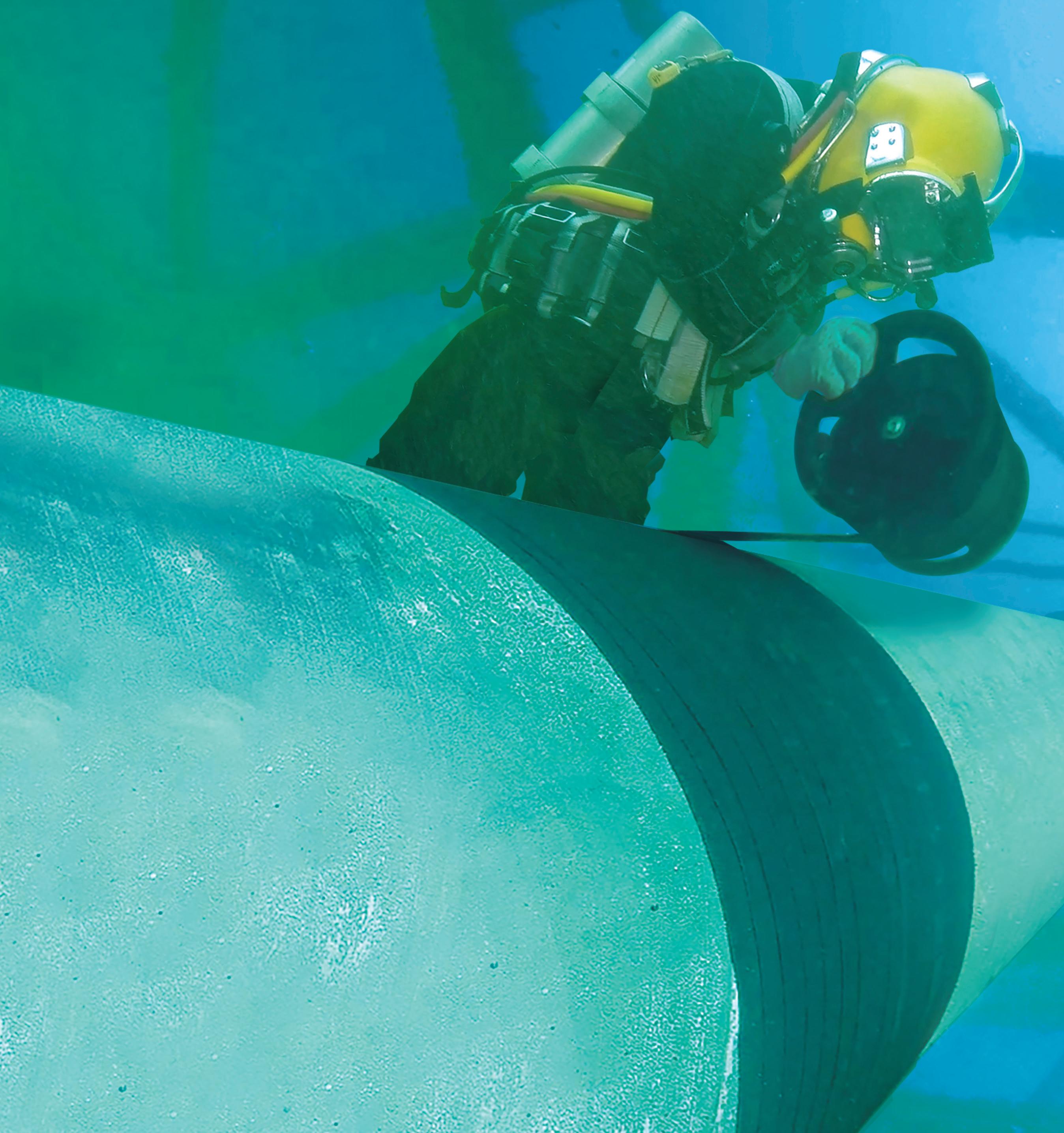









COMPLETE CORROSION & CATHODIC PROTECTION REMOTE MONITORING 360o Corrosion & Cathodic Protection Remote Monitoring GPS Synchronized Pipeline RMU Surveys in Minutes www.metricorr.com I wonder how my pipelines comply tonight DC interference Critical Bonds Isolating Joint Rectifier Casing Line Current AC interference
















































































































































 Figure 1. The safe design of liquid pipeline networks requires software capable of accurately modelling surge to ensure relief valves are properly sized.
Figure 1. The safe design of liquid pipeline networks requires software capable of accurately modelling surge to ensure relief valves are properly sized.

 Oilserv - Nigeria
Oilserv - Nigeria




 Tony Alfano, Pipeline Product Line Director, DNV, discusses mitigating overpressure and outage risks in pipelines.
Tony Alfano, Pipeline Product Line Director, DNV, discusses mitigating overpressure and outage risks in pipelines.






























 Figure 2. D7 crawler dozer equipped with a CARCO PA110 tail winch for Caterpillar.
Figure 3. Caterpillar D8 dozers and CARCO PA140 winches as part of Ohio-based Precision Pipeline Services’ inventory.
Figure 2. D7 crawler dozer equipped with a CARCO PA110 tail winch for Caterpillar.
Figure 3. Caterpillar D8 dozers and CARCO PA140 winches as part of Ohio-based Precision Pipeline Services’ inventory.



















































































 SEALID® All-in-1 Wrap once. All done.
SEALID® All-in-1 Wrap once. All done.


 Figure 4. Corrosion growth for matched anomalies.
Figure 6. Anomaly matches in the artificial coordinate system.
Figure 4. Corrosion growth for matched anomalies.
Figure 6. Anomaly matches in the artificial coordinate system.















































 Figure 1. Loads affecting the pipe coatings.
Figure 1. Loads affecting the pipe coatings.




























